Methods And Compositions Comprising A Nitrite-reductase Promoter For Treatment Of Medical Disorders And Preservation Of Blood Pr
Oronsky; Bryan T. ; et al.
U.S. patent application number 16/284035 was filed with the patent office on 2020-01-23 for methods and compositions comprising a nitrite-reductase promoter for treatment of medical disorders and preservation of blood pr. The applicant listed for this patent is EpicentRx, Inc.. Invention is credited to Chad Brouse, Pedro Cabrales, Marcel Fens, William Fitch, Susan Knox, Frans A. Kuypers, Sandra Larkin, Bryan T. Oronsky, Jan Scicinski.
| Application Number | 20200022952 16/284035 |
| Document ID | / |
| Family ID | 48044412 |
| Filed Date | 2020-01-23 |

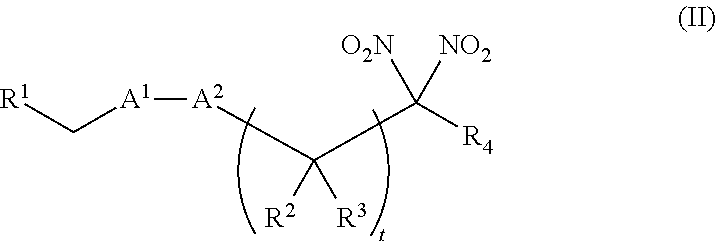









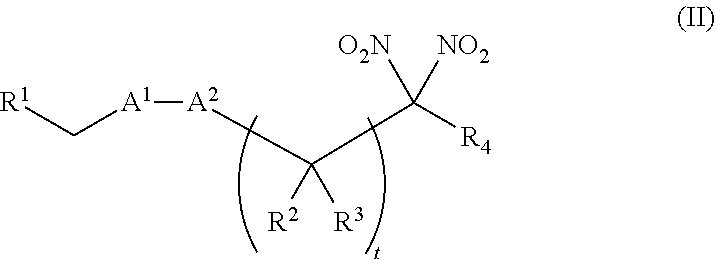
View All Diagrams
| United States Patent Application | 20200022952 |
| Kind Code | A1 |
| Oronsky; Bryan T. ; et al. | January 23, 2020 |
METHODS AND COMPOSITIONS COMPRISING A NITRITE-REDUCTASE PROMOTER FOR TREATMENT OF MEDICAL DISORDERS AND PRESERVATION OF BLOOD PRODUCTS
Abstract
The invention provides methods, compositions, and medical kits comprising a nitrite-reductase promoter, such as an allosteric modulator of hemoglobin, for use in treating medical disorders and preservation of blood products. In one aspect, the invention provides methods, compositions, and medical kits comprising an inorganic nitrite salt and a nitrite-reductase promoter, such as an allosteric modulator of hemoglobin, for use in treating medical disorders, such as cancer, cardiovascular disorders, ischemic conditions, hemolytic conditions, and bacterial infections. Exemplary inorganic nitrite salts include sodium nitrite and arginine nitrite. Exemplary allosteric modulators of hemoglobin described herein include alkyl-substituted and acyl-substituted di-nitroheterocycles.
| Inventors: | Oronsky; Bryan T.; (Los Altos Hills, CA) ; Scicinski; Jan; (Saratoga, CA) ; Knox; Susan; (Stanford, CA) ; Fitch; William; (Palo Alto, CA) ; Kuypers; Frans A.; (El Cerrito, CA) ; Fens; Marcel; (San Francisco, CA) ; Larkin; Sandra; (Berkeley, CA) ; Cabrales; Pedro; (San Diego, CA) ; Brouse; Chad; (San Diego, CA) | ||||||||||
| Applicant: |
|
||||||||||
|---|---|---|---|---|---|---|---|---|---|---|---|
| Family ID: | 48044412 | ||||||||||
| Appl. No.: | 16/284035 | ||||||||||
| Filed: | February 25, 2019 |
Related U.S. Patent Documents
| Application Number | Filing Date | Patent Number | ||
|---|---|---|---|---|
| 14349010 | Apr 1, 2014 | |||
| PCT/US12/58964 | Oct 5, 2012 | |||
| 16284035 | ||||
| 61544375 | Oct 7, 2011 | |||
| Current U.S. Class: | 1/1 |
| Current CPC Class: | A61K 31/22 20130101; A61K 31/255 20130101; A61K 47/6445 20170801; A61K 31/198 20130101; A61K 31/12 20130101; A61K 35/18 20130101; A01N 1/0226 20130101; A61K 45/06 20130101; Y02A 50/30 20180101; A61K 31/445 20130101; A61K 35/14 20130101; A61K 31/40 20130101; A61K 31/397 20130101; A61K 33/00 20130101; A61K 35/16 20130101; A61K 31/215 20130101; A61K 31/16 20130101; Y02A 50/411 20180101; A61K 38/1709 20130101; A61N 5/10 20130101; A61K 33/00 20130101; A61K 2300/00 20130101; A61K 31/397 20130101; A61K 2300/00 20130101; A61K 31/40 20130101; A61K 2300/00 20130101; A61K 31/445 20130101; A61K 2300/00 20130101; A61K 31/12 20130101; A61K 2300/00 20130101; A61K 31/22 20130101; A61K 2300/00 20130101; A61K 31/215 20130101; A61K 2300/00 20130101; A61K 31/255 20130101; A61K 2300/00 20130101; A61K 31/16 20130101; A61K 2300/00 20130101; A61K 31/198 20130101; A61K 2300/00 20130101 |
| International Class: | A61K 31/397 20060101 A61K031/397; A61K 33/00 20060101 A61K033/00; A61K 45/06 20060101 A61K045/06; A01N 1/02 20060101 A01N001/02; A61K 35/14 20060101 A61K035/14; A61K 35/16 20060101 A61K035/16; A61K 35/18 20060101 A61K035/18; A61K 38/17 20060101 A61K038/17; A61N 5/10 20060101 A61N005/10; A61K 31/22 20060101 A61K031/22; A61K 31/12 20060101 A61K031/12; A61K 31/255 20060101 A61K031/255; A61K 31/445 20060101 A61K031/445; A61K 31/215 20060101 A61K031/215; A61K 31/16 20060101 A61K031/16; A61K 31/198 20060101 A61K031/198; A61K 31/40 20060101 A61K031/40; A61K 47/64 20060101 A61K047/64 |
Claims
1-37. (canceled)
38. A method of treating a patient suffering from reduced blood volume, comprising administering to a patient in need thereof a blood product by injection and a therapeutic agent selected from the group consisting of an organonitro compound of Formula I, hemoglobin conjugate of Formula III, and an erythrocyte cell that has been exposed to an organonitro compound of Formula I; wherein the patient receives, by intravenous injection, a single composition comprising blood product and the therapeutic agent, and Formula I is represented by: ##STR00173## or a pharmaceutically acceptable salt or solvate thereof, wherein: A.sup.1 is --C(O)--; A.sup.2 is N; R.sup.1 is halogen, --OS(O).sub.2R.sup.5, or --OC(O)CF.sub.3; R.sup.2 is C.sub.1-C.sub.6alkyl; R.sup.5 is C.sub.1-C.sub.6alkyl, C.sub.1-C.sub.6haloalkyl, aryl, or aralkyl; m and p are independently 1, 2, or 3; and n is 0, 1, 2, or 3; Formula III is represented by: ##STR00174## or a pharmaceutically acceptable salt or solvate thereof, wherein: A.sup.1 is --C(O)--; A.sup.2 is N; R.sup.2 is C.sub.1-C.sub.6alkyl; m and p are independently 1, 2, or 3; m and p are independently 1, 2, or 3; n is 0, 1, 2, or 3; x is 1, 2, or 3; and z is an integer from 1 to 10.
39. (canceled)
40. A method of performing a blood transfusion to a patient, comprising administering to a patient in need thereof a blood product by injection and a therapeutic agent selected from the group consisting of an organonitro compound of Formula I, hemoglobin conjugate of Formula III, and an erythrocyte cell that has been exposed to an organonitro compound of Formula I, wherein the patient receives, by intravenous injection, a single composition comprising the blood product and the therapeutic agent, and Formula I is represented by: ##STR00175## or a pharmaceutically acceptable salt or solvate thereof, wherein: A.sup.1 is --C(O)--; A.sup.2 is N; R.sup.1 is halogen, --OS(O).sub.2R.sup.5, or --OC(O)CF.sub.3; R.sup.2 is C.sub.1-C.sub.6alkyl; R.sup.5 is C.sub.1-C.sub.6alkyl, C.sub.1-C.sub.6haloalkyl, aryl, or aralkyl; m and p are independently 1, 2, or 3; and n is 0, 1, 2, or 3; Formula III is represented by: ##STR00176## or a pharmaceutically acceptable salt or solvate thereof, wherein: A.sup.1 is --C(O)--; A.sup.2 is N; R.sup.2 is C.sub.1-C.sub.6alkyl; m and p are independently 1, 2, or 3; n is 0, 1, 2, or 3; and z is an integer from 1 to 10.
41. The method of claim 40, wherein the blood product comprises erythrocyte cells.
42. The method of claim 41, wherein the blood product comprises blood plasma.
43. (canceled)
44. (canceled)
45. (canceled)
46. The method of claim 40, further comprising administering an alkali metal nitrite to the patient.
47. The method of claim 40, further comprising administering sodium nitrite to the patient.
48-56. (canceled)
57. The method of claim 40, wherein the therapeutic agent is an organonitro compound of Formula I.
58. The method of claim 40, wherein the therapeutic agent is an erythrocyte cell that has been exposed to an organonitro compound of Formula I, and said therapeutic agent is administered by injection.
59. (canceled)
60. The method of claim 57, wherein R.sup.1 is bromo.
61. The method of claim 60, wherein n is 0, and m is 2.
62. The method of claim 46, wherein the therapeutic agent is ##STR00177## or a pharmaceutically acceptable salt thereof.
63. The method of claim 40, wherein the therapeutic agent is a hemoglobin conjugate of Formula III, and said therapeutic agent is administered by injection.
64. (canceled)
65. (canceled)
66. The method of claim 40, wherein the therapeutic agent is ##STR00178## or a pharmaceutically acceptable salt thereof, wherein z is an integer from 1 to 10.
67-106. (canceled)
107. The method of claim 40, wherein the therapeutic agent is ##STR00179## or a pharmaceutically acceptable salt thereof.
108. The method of claim 40, wherein the therapeutic agent is ##STR00180##
109. The method of claim 107, wherein the blood product comprises erythrocyte cells.
110. The method of claim 108, wherein the blood product comprises erythrocyte cells.
111. The method of claim 107, wherein the blood product comprises blood plasma.
112. The method of claim 108, wherein the blood product comprises blood plasma.
113. The method of claim 110, wherein the blood product comprises blood plasma.
114. The method of claim 38, wherein the therapeutic agent is ##STR00181## or a pharmaceutically acceptable salt thereof.
115. The method of claim 114, wherein the blood product comprises blood plasma.
116. A method of treating a patient suffering from anemia, comprising administering to a patient in need thereof a therapeutic agent selected from the group consisting of an organonitro compound of Formula I, hemoglobin conjugate of Formula III, and an erythrocyte cell that has been exposed to an organonitro compound of Formula I; wherein the patient receives, by intravenous injection, a single composition comprising blood product and the therapeutic agent, and Formula I is represented by: ##STR00182## or a pharmaceutically acceptable salt or solvate thereof, wherein: A.sup.1 is --C(O)--; A.sup.2 is N; R.sup.1 is halogen, --OS(O).sub.2R.sup.5, or --OC(O)CF.sub.3; R.sup.2 is C.sub.1-C.sub.6alkyl; R.sup.5 is C.sub.1-C.sub.6alkyl, C.sub.1-C.sub.6haloalkyl, aryl, or aralkyl; m and p are independently 1, 2, or 3; and n is 0, 1, 2, or 3; Formula III is represented by: ##STR00183## or a pharmaceutically acceptable salt or solvate thereof, wherein: A.sup.1 is --C(O)--; A.sup.2 is N or --C(R.sup.4)--; R.sup.2 is C.sub.1-C.sub.6alkyl; m and p are independently 1, 2, or 3; n is 0, 1, 2, or 3; and z is an integer from 1 to 10.
Description
CROSS REFERENCE TO RELATED APPLICATIONS
[0001] This application claims the benefit of and priority to U.S. Provisional Patent Application Ser. No. 61/544,375, filed Oct. 7, 2011, the contents of which are hereby incorporated by reference.
FIELD OF THE INVENTION
[0002] The invention provides methods, compositions, and medical kits comprising a nitrite-reductase promoter, such as an allosteric modulator of hemoglobin, for use in treating medical disorders and preservation of blood products.
BACKGROUND
[0003] Cancer, cardiovascular disorders, ischemic conditions, and bacterial infections remain a significant health problem for people in many developed countries. The need for cancer treatments, for example, has prompted the United States National Cancer Institute to coordinate large-scale research efforts, impacting over six hundred universities, hospitals, and cancer centers located in the United States and over twenty foreign countries. Past research efforts have lead to significant advances in the detection, evaluation, and treatment of cancer, cardiovascular disorders, ischemic conditions, and bacterial infections. However, despite these developments, these medical conditions remain significant health problems for many patients.
[0004] According to current statistics, cancer is a leading cause of death worldwide. Approximately one million people are diagnosed with cancer each year in the United States, and approximately half a million cancer patients die annually despite the significant progress made during the last decade in the diagnosis and treatment of cancer. Leading types of cancer that affect a substantial number of patients include colon cancer, breast cancer, prostate cancer, and skin cancer. The need exists for improved drugs and therapeutic methods for treating cancer.
[0005] Cardiovascular disorders that affect a significant number of patients include atherosclerosis, arteriosclerosis, myocardial infarction, angina pectoris, cardiac failure, embolism, thrombus, and hypertension. Hypertension is particularly prevalent, with some estimates suggesting approximately twenty-five percent of the adult population worldwide being hypertensive. Although dietary and lifestyle changes may reduce blood pressure, medications are often necessary to reduce blood pressure to an acceptable level in hypertensive patients. Examples of anti-hypertensive drugs include angiotensin-converting enzyme (ACE) inhibitors, alpha blockers, angiotensin II receptor antagonists, beta blockers, calcium channel blockers, diuretics, and direct renin inhibitors. Without treatment, hypertensive patients can have a significantly higher risk of cardiovascular disorders and a reduced life expectancy. The need exists for improved drugs and therapeutic methods for treating cardiovascular disorders.
[0006] Also, current therapies for treating bacterial infections are insufficient because many prominent, infection-causing bacterial strains have developed resistance to current antibiotics. Antibiotic resistance can result in severe adverse outcomes, such as increased mortality, morbidity, and medical care costs for patients suffering from common infections. Infections due to organisms such as methicillin-resistant Staphylococcus aureus (MRSA) occur with increasing frequency in hospitals and are becoming more difficult to treat with conventional antibiotics. For example, a recently discovered strain of Staphylococcus aureus was resistant to treatment with vancomycin, a drug generally regarded as a last line of defense against certain infections. Thus, infection by antibiotic-resistant organisms is a significant health threat for which new methods and compositions for treatment are needed.
[0007] Another important medical therapy is blood transfusions. Blood transfusions are a ubiquitous part of healthcare delivery. In the United States (US), someone needs blood about every two seconds and according to the 2009 National Blood Collection and Utilization Survey Report (NBCUS), a total of 15 million units of blood were transfused. Currently, blood products can be stored only for short periods of time. Thus, one unmet medical need is for compositions and methods capable of extending the storage life of blood products.
[0008] Accordingly, there is need for new therapeutic methods and compositions for extending the storage life of blood products, enhancing the benefits of blood transfusions, and treating disorders such as cancer, cardiovascular disorders, ischemic conditions, and bacterial infections. The present invention addresses these needs and provides other related advantages.
SUMMARY
[0009] The invention provides methods, compositions, and medical kits comprising a nitrite-reductase promoter, such as an allosteric modulator of hemoglobin, for use in treating medical disorders and preservation of blood products. For example, in certain aspects, the invention provides methods, compositions, and medical kits comprising an inorganic nitrite salt and a nitrite-reductase promoter, such as an allosteric modulator of hemoglobin, for use in treating medical disorders, such as cancer, cardiovascular disorders, ischemic conditions, hemolytic conditions, and bacterial infections. In other aspects, the invention provides agents (e.g., allosteric modulator of hemoglobin) for treating a patient suffering from reduced blood volume (e.g., a patient suffering from hemorrhagic shock), performing a blood transfusion to a patient, treating a patient suffering from anemia, and preserving an isolated blood product. Various aspects and embodiments of the invention are described in further detail below.
[0010] One aspect of the invention provides a method of treating or preventing a disorder selected from the group consisting of cancer, a cardiovascular disorder, an ischemic condition, a hemolytic condition, or a bacterial infection. The method comprises administering to a patient in need thereof a therapeutically effective amount of (i) an inorganic nitrite salt, and (ii) an allosteric modulator of hemoglobin that promotes nitrite reductase activity. In certain embodiments, the allosteric modulator of hemoglobin is a compound embraced by Formula, I or Formula II, wherein Formula I is represented by:
##STR00001##
or a pharmaceutically acceptable salt or solvate thereof, wherein the variables are as defined in the detailed description, and Formula II is represented by:
##STR00002##
or a pharmaceutically acceptable salt or solvate thereof, wherein the variables are as defined in the detailed description.
[0011] Another aspect of the invention provides a method of increasing the amount of nitric oxide produced by hemoglobin in a patient. The method comprises administering to a patient in need thereof a therapeutically effective amount of (i) an inorganic nitrite salt, and (ii) an allosteric modulator of hemoglobin that promotes nitrite reductase activity.
[0012] Another aspect of the invention provides a pharmaceutical composition comprising (i) an inorganic nitrite salt, and (ii) an allosteric modulator of hemoglobin that promotes nitrite reductase activity. Still another aspect of the invention provides a kit for treating a medical disorder. The kit comprises (i) an inorganic nitrite salt, (ii) an allosteric modulator of hemoglobin, and (iii) instructions for using the kit to treat a medical disorder.
[0013] Another aspect of the invention provides a method of treating a patient suffering from reduced blood volume. The method comprises administering to a patient in need thereof a blood product by injection and a therapeutic agent selected from the group consisting of an organonitro compound of Formula I, organonitro compound of Formula II, hemoglobin conjugate of Formula III, hemoglobin conjugate of Formula IV, and an erythrocyte cell that has been exposed to an organonitro compound of Formula I or II; wherein Formula I is represented by:
##STR00003##
or a pharmaceutically acceptable salt or solvate thereof wherein the variables are as defined in the detailed description, Formula II is represented by:
##STR00004##
or a pharmaceutically acceptable salt or solvate thereof wherein, the variables are as defined in the detailed description, Formula III is represented by:
##STR00005##
or a pharmaceutically acceptable salt or solvate thereof, wherein the variables are as defined in the detailed description, and Formula IV is represented by:
##STR00006##
or a pharmaceutically acceptable salt or solvate thereof wherein the variables are as defined in the detailed description.
[0014] Another aspect of the invention provides a method of performing a blood transfusion to a patient. The method comprises administering to a patient in need thereof a blood product by injection and a therapeutic agent selected from the group consisting of an organonitro compound of Formula organonitro compound of Formula II, hemoglobin conjugate of Formula, III, hemoglobin conjugate of Formula IV, and an erythrocyte cell that has been exposed to an organonitro compound of Formula I or II, wherein Formula I is represented by:
##STR00007##
or a pharmaceutically acceptable salt or solvate thereof, wherein the variables are as defined in the detailed description. Formula I is represented by:
##STR00008##
or a pharmaceutically acceptable salt or solvate thereof: wherein the variables are as defined in the detailed description, Formula III is represented by:
##STR00009##
or a pharmaceutically acceptable salt or solvate thereof, wherein the variables are as defined in the detailed description, and Formula IV is represented by:
##STR00010##
or a pharmaceutically acceptable salt or solvate thereof, wherein the variables are as defined in the detailed description.
[0015] Another aspect of the invention provides a method of treating a patient suffering from anemia. The method comprises administering to a patient in need thereof a therapeutic agent selected from the group consisting of an organonitro compound of Formula I, organonitro compound of Formula II, hemoglobin conjugate of Formula III, hemoglobin conjugate of Formula IV, and an erythrocyte cell that has been exposed to an organonitro compound of Formula I or II; wherein Formula I is represented by:
##STR00011##
or a pharmaceutically acceptable salt or solvate thereof wherein the variables are as defined in the detailed description, Formula II is represented by:
##STR00012##
or a pharmaceutically acceptable salt or solvate thereof, wherein the variables are as defined in the detailed description, Formula III is represented by:
##STR00013##
or a pharmaceutically acceptable salt or solvate thereof, wherein the variables are as defined in the detailed description, and Formula IV is represented by:
##STR00014##
or a pharmaceutically acceptable salt or solvate thereof, wherein the variables are as defined in the detailed description.
[0016] Another aspect of the invention provides a method of preserving an isolated blood product. The method comprises exposing the isolated blood product to an agent selected from the group consisting of an organonitro compound of Formula I, organonitro compound of Formula II, hemoglobin conjugate of Formula III, hemoglobin conjugate of Formula IV, and an erythrocyte cell that has been exposed to an organonitro compound of Formula I or II, wherein Formula I is represented by:
##STR00015##
or a pharmaceutically acceptable salt or solvate thereof, wherein the variables are as defined in the detailed description, Formula II is represented by:
##STR00016##
or a pharmaceutically acceptable salt or solvate thereof: wherein the variables are as defined in the detailed description, Formula III is represented by:
##STR00017##
or a pharmaceutically acceptable salt or solvate thereof, wherein the variables are as defined in the detailed description, and Formula IV is represented by:
##STR00018##
or a pharmaceutically acceptable salt or solvate thereof, wherein the variables are as defined in the detailed description.
[0017] Another aspect of the invention provides an isolated blood product composition. The composition comprises (i) a blood product, and (ii) an agent selected from the group consisting of an organonitro compound of Formula I, organonitro compound of Formula II, hemoglobin conjugate of Formula III, hemoglobin conjugate of Formula IV, and an erythrocyte cell that has been exposed to an organonitro compound of Formula I or II; wherein Formula I is represented by:
##STR00019##
or a pharmaceutically acceptable salt or solvate thereof wherein the variables are as defined in the detailed description, Formula II is represented by:
##STR00020##
or a pharmaceutically acceptable salt or solvate thereof, wherein the variables are as defined in the detailed description, Formula III is represented by:
##STR00021##
or a pharmaceutically acceptable salt or solvate thereof, wherein the variables are as defined in the detailed description, and Formula IV is represented by:
##STR00022##
or a pharmaceutically acceptable salt or solvate thereof wherein the variables are as defined in the detailed description.
[0018] Another aspect of the invention provides an isolated hemoglobin conjugate represented by Formula III or IV:
##STR00023##
or a pharmaceutically acceptable salt or solvate thereof, wherein the variables are as defined in the detailed description, and Formula IV is represented by:
##STR00024##
or a pharmaceutically acceptable salt or solvate thereof, wherein the variables are as defined in the detailed description
[0019] Another aspect of the invention provides pharmaceutical compositions comprising a pharmaceutically acceptable carrier and a hemoglobin conjugate as defined in the detailed description, such as a hemoglobin conjugate of Formula III or IV.
BRIEF DESCRIPTION OF THE FIGURES
[0020] FIG. 1 is a graph showing the cumulative amount of nitric oxide formed from a blood sample over a thirty-minute time period for multiple experiments (experimental conditions varied include using air atmosphere, N.sub.2 atmosphere, and/or the presence or absence of ABDNAZ), as described in Example 1;
[0021] FIG. 2 is a graph showing the cumulative amount of nitric oxide formed from a blood sample over a thirty-minute time period under an air atmosphere or N.sub.2 atmosphere (where d0 refers to the first experiment, and dl refers to the second repetition of the experiment), as described in Example 1;
[0022] FIG. 3 is a graph showing the cumulative amount of nitric oxide formed from a blood sample mixed with ABDNAZ, where data is shown for a thirty-minute time period under an air atmosphere or N.sub.2 atmosphere (where d0 refers to the first experiment, and dl refers to the second repetition of the experiment), as described in Example 1;
[0023] FIG. 4 is a graph showing the cumulative amount of nitric oxide formed from a blood sample under an atmosphere of air, where the blood sample is optionally mixed with ABDNAZ (where d0 refers to the first experiment, and dl refers to the second repetition of the experiment), as described in Example 1;
[0024] FIG. 5 is a graph showing the cumulative amount of nitric oxide formed from a blood sample under an atmosphere of N.sub.2, where the blood sample is optionally mixed with ABDNAZ (where d0 refers to the first experiment, and dl refers to the second repetition of the experiment), as described in Example 1;
[0025] FIG. 6 is a graph showing the amount of nitric oxide formed in each three-minute period following the start of experiments for multiple experiments (experimental conditions varied include using an air atmosphere, N.sub.2 atmosphere, and/or the presence or absence of ABDNAZ), as described in Example 1;
[0026] FIG. 7 is a graph showing the amount of nitric oxide formed in each three-minute period following the start of experiments where the blood sample is under an atmosphere of air or an atmosphere of N.sub.2 as described in Example 1; and
[0027] FIG. 8 is a graph showing the amount of nitric oxide formed in each three-minute period following the start of experiments where the blood sample is mixed with ABDNAZ and is under an atmosphere of air or an atmosphere of N.sub.2 as described in Example 1.
[0028] FIG. 9 is a bar graph showing percent MetHb for the (i) nitrite, (ii) RRx-001, and (iii) RRx-001+nitrite (RRx-001+N) groups at 60 and 90 minutes post fluid resuscitation (FR), as further described in Example 2. It is noted that the percent MetHb level in normal, healthy individuals is about 1.
[0029] FIG. 10 depicts line graphs showing relative changes in arteriolar diameter and blood flow during hemorrhagic shock and resuscitation for all groups tested in Example 2.
[0030] FIG. 11 is a line graph showing relative changes in functional capillary density (FCD) during hemorrhagic shock and resuscitation for all groups tested in Example 2. Baseline averages and standard deviations for each of the groups are: Sham, 106.+-.11; Blood, 107.+-.10; Nitrite, 107.+-.12; RRx-001, 112.+-.9; RRx-001+Nitrite, 108.+-.9.
[0031] FIG. 12 is a line graph showing calculated vascular resistance (MAP/blood flow) relative to baseline during hemorrhagic shock and resuscitation for all groups tested in Example 2.
[0032] FIG. 13 is a bar graph showing the number of apoptotic and necrotic cells at 8 hours following resuscitation for all groups tested in Example 2. Data is presented as the average of fluorescent cells counted in 40 selected visual fields (210.times.160 .mu.m) for the tissue and the endothelial vessel wall separately. **P<0.005 for both the number of apoptotic and necrotic in the RRx-001 and RRx-001+nitrite groups compared to blood only.
DETAILED DESCRIPTION OF THE INVENTION
[0033] The invention provides methods, compositions, and medical kits comprising a nitrite-reductase promoter, such as an allosteric modulator of hemoglobin, for use in treating medical disorders and preservation of blood products. For example, in certain aspects, the invention provides methods, compositions, and medical kits comprising an inorganic nitrite salt and a nitrite-reductase promoter, such as an allosteric modulator of hemoglobin, for use in treating medical disorders, such as cancer, cardiovascular disorders, ischemic conditions, hemolytic conditions, and bacterial infections. In other aspects, the invention provides agents (e.g., allosteric modulator of hemoglobin) for treating a patient suffering from reduced blood volume (e.g., a patient suffering from hemorrhagic shock), performing a blood transfusion to a patient, treating a patient suffering from anemia, and preserving an isolated blood product. The practice of the present invention employs, unless otherwise indicated, conventional techniques of organic chemistry, pharmacology, cell biology, and biochemistry. Such techniques are explained in the literature, such as in "Comprehensive Organic Synthesis" (B. M. Trost & I. Fleming, eds., 1991-1992); "Current protocols in molecular biology" (F. M. Ausubel et al., eds., 1987, and periodic updates); and "Current protocols in immunology" (J. E. Coligan et al., eds., 1991), each of which is herein incorporated by reference in its entirety. Various aspects of the invention are set forth below in sections; however, aspects of the invention described in one particular section are not to be limited to any particular section.
I. Definitions
[0034] To facilitate an understanding of the present invention, a number of terms and phrases are defined below.
[0035] The terms "a" and "an" as used herein mean "one or more" and include the plural unless the context is inappropriate.
[0036] The term "blood product" means (i) whole blood, or (ii) component(s) isolated from whole.
[0037] The term "alkyl" as used herein refers to a saturated straight or branched hydrocarbon, such as a straight or branched group of 1-12, 1-10, or 1-6 carbon atoms, referred to herein as C.sub.1-C.sub.12alkyl, C.sub.1-C.sub.10alkyl, and C.sub.1-C.sub.6alkyl, respectively. Exemplary alkyl groups include, but are not limited to, methyl, ethyl, propyl, isopropyl, 2-methyl-1-propyl, 2-methyl-2-propyl, 2-methyl-1-butyl, 3-methyl-1-butyl, 2-methyl-3-butyl, 2,2-dimethyl-1-propyl, 2-methyl-1-pentyl, 3-methyl-1-pentyl, 4-methyl-1-pentyl, 2-methyl-2-pentyl, 3-methyl-2-pentyl, 4-methyl-2-pentyl, 2,2-dimethyl-1-butyl, 3,3-dimethyl-1-butyl, 2-ethyl-1-butyl, butyl, isobutyl, t-butyl, pentyl, isopentyl, neopentyl, hexyl, heptyl, octyl, etc.
[0038] The term "haloalkyl" refers to an alkyl group that is substituted with at least one halogen. For example, --CH.sub.2F, --CHF.sub.2, --CF.sub.3, --CH.sub.2--CF.sub.3, --CF.sub.2CF.sub.3, and the like.
[0039] The term "aralkyl" refers to an alkyl group substituted with an aryl group.
[0040] The term "heteroaralkyl" refers to an alkyl group substituted with a heteroaryl group.
[0041] The term "aryl" is art-recognized and refers to a carbocyclic aromatic group. Representative aryl groups include phenyl, naphthyl, anthracenyl, and the like. Unless specified otherwise, the aromatic ring may be substituted at one or more ring positions with, for example, halogen, azide, alkyl, aralkyl, alkenyl, alkynyl, cycloalkyl, hydroxyl, alkoxyl, amino, nitro, sulfhydryl, imino, amido, carboxylic acid, --C(O)alkyl, --CO.sub.2alkyl, carbonyl, carboxyl, alkylthio, sulfonyl, sulfonamido, sulfonamide, ketone, aldehyde, ester, heterocyclyl, aryl or heteroaryl moieties, --CF.sub.3, --CN, or the like. The term "aryl" also includes polycyclic ring systems having two or more carbocyclic rings in which two or more carbons are common to two adjoining rings (the rings are "fused rings") wherein at least one of the rings is aromatic and, e.g., the other ring(s) may be cycloalkyls, cycloalkenyls, cycloalkynyls, and/or aryls. In certain embodiments, the aryl group is not substituted, i.e., it is unsubstituted.
[0042] The "heteroaryl" is art-recognized and refers to aromatic groups that include at least one ring heteroatom. In certain instances, a heteroaryl group contains 1, 2, 3, or 4 ring heteroatoms. Representative examples of heteroaryl groups includes pyrrolyl, furanyl, thiophenyl, imidazolyl, oxazolyl, thiazolyl, triazolyl, pyrazolyl, pyridinyl, pyrazinyl, pyridazinyl and pyrimidinyl, and the like. Unless specified otherwise, the heteroaryl ring may be substituted at one or more ring positions with, for example, halogen, azide, alkyl, aralkyl, alkenyl, alkynyl, cycloalkyl, hydroxyl, alkoxyl, amino, nitro, sulfhydryl, imino, amido, carboxylic acid, --C(O)alkyl, --CO.sub.2alkyl, carbonyl, carboxyl, alkylthio, sulfonyl, sulfonamido, sulfonamide, ketone, aldehyde, ester, heterocyclyl, aryl or heteroaryl moieties, --CF.sub.3, --CN, or the like. The term "heteroaryl" also includes polycyclic ring systems having two or more rings in which two or more carbons are common to two adjoining rings (the rings are "fused rings") wherein at least one of the rings is heteroaromatic and, e.g., the other ring(s) may be cycloalkyls, cycloalkenyls, cycloalkynyls, and/or aryls. In certain embodiments, the heteroaryl is a bicyclic aromatic ring in which both ring of the bicyclic system are heteroaromatic. In certain embodiments, the heteroaryl group is not substituted, i.e., it is unsubstituted.
[0043] The terms ortho, meta and para are art-recognized and refer to 1,2-, 1,3- and 1,4-disubstituted benzenes, respectively. For example, the names 1,2-dimethylbenzene and ortho-dimethylbenzene are synonymous.
[0044] As used herein, the term "heterocyclic" represents, for example, an aromatic or nonaromatic ring containing one or more heteroatoms. The heteroatoms can be the same or different from each other. Examples of heteroatoms include, but are not limited to nitrogen, oxygen and sulfur. Aromatic and nonaromatic heterocyclic rings are well-known in the art. Some nonlimiting examples of aromatic heterocyclic rings include pyridine, pyrimidine, indole, purine, quinoline and isoquinoline. Nonlimiting examples of nonaromatic heterocyclic compounds include piperidine, piperazine, morpholine, pyrrolidine and pyrazolidine. Examples of oxygen containing heterocyclic rings include, but not limited to furan, oxirane, 2H-pyran, 4H-pyran, 2H-chromene, and benzofuran. Examples of sulfur-containing heterocyclic rings include, but are not limited to, thiophene, benzothiophene, and parathiazine. Examples of nitrogen containing rings include, but not limited to, pyrrole, pyrrolidine, pyrazole, pyrazolidine, imidazole, imidazoline, imidazolidine, pyridine, piperidine, pyrazine, piperazine, pyrimidine, indole, purine, benzimidazole, quinoline, isoquinoline, triazole, and triazine. Examples of heterocyclic rings containing two different heteroatoms include, but are not limited to, phenothiazine, morpholinc, parathiazinc, oxazine, oxazole, thiazine, and thiazole. The heterocyclic ring is optionally further substituted at one or more ring positions with, for example, halogen, azide, alkyl, alkyl, aralkyl, alkenyl, alkynyl, cycloalkyl, hydroxyl, alkoxyl, amino, nitro, sulfhydryl, imino, amido, carboxylic acid, --C(O)alkyl, --CO.sub.2alkyl, carbonyl, carboxyl, alkylthio, sulfonyl, sulfonamido, sulfonamide, ketone, aldehyde, ester, heterocyclyl, aryl or heteroaryl moieties, --CF.sub.3, --CN, or the like.
[0045] The terms "amine" and "amino" are art-recognized and refer to both unsubstituted and substituted amines, e.g., a moiety represented by the general formula --N(R.sup.50)(R.sup.51), wherein R.sup.50 and R.sup.51 each independently represent hydrogen, alkyl, cycloalkyl, heterocyclyl, alkenyl, aryl, aralkyl, or --(CH.sub.2).sub.m--R.sup.61; or R.sup.50 and R.sup.51, taken together with the N atom to which they are attached complete a heterocycle having from 4 to 8 atoms in the ring structure; R.sup.61 represents an aryl, a cycloalkyl, a cycloalkenyl, a heterocycle or a polycycle; and m is zero or an integer in the range of 1 to 8. In embodiments, R.sup.50 and R.sup.51 each independently represent hydrogen, alkyl, alkenyl, or --(CH.sub.2).sub.m--R.sup.61.
[0046] The terms "alkoxyl" or "alkoxy" are art-recognized and refer to an alkyl group, as defined above, having an oxygen radical attached thereto. Representative alkoxyl groups include methoxy, ethoxy, propyloxy, tert-butoxy and, the like. An "ether" is two hydrocarbons covalently linked by an oxygen. Accordingly, the substituent of an alkyl that renders that alkyl an ether is or resembles an alkoxyl, such as may be represented by one of --O-alkyl, --O-alkenyl, --O-alkynyl, --O--(CH.sub.2).sub.m--R.sub.61, where m and R.sub.61 are described above.
[0047] The terms "ABDNAZ" and "RRx-001" are used interchangeably and refer to the compound having the following structure:
##STR00025##
[0048] Certain compounds contained in compositions of the present invention may exist in particular geometric or stereoisomeric forms. The present invention contemplates all such compounds, including cis- and trans-isomers, R- and S-enantiomers, diastereomers, (D)-isomers, (L)-isomers, the racemic mixtures thereof, and other mixtures thereof, as falling within the scope of the invention. Additional asymmetric carbon atoms may be present in a substituent such as an alkyl group. All such isomers, as well as mixtures thereof, are intended to be included in this invention.
[0049] If, for instance, a particular enantiomer of a compound of the present invention is desired, it may be prepared by asymmetric synthesis, or by derivation with a chiral auxiliary, where the resulting diastereomeric mixture is separated and the auxiliary group cleaved to provide the pure desired enantiomers. Alternatively, where the molecule contains a basic functional group, such as amino, or an acidic functional group, such as carboxyl, diastereomeric salts are formed with an appropriate optically-active acid or base, followed by resolution of the diastereomers thus formed by fractional crystallization or chromatographic means well known in the art, and subsequent recovery of the pure enantiomers.
[0050] As used herein, the terms "subject" and "patient" refer to organisms to be treated by the methods of the present invention. Such organisms are preferably mammals (e.g., murines, simians, equines, bovines, porcines, canines, felines, and the like), and more preferably humans. The term "non-anemic patient" refers to a patient that does not suffer from anemia.
[0051] As used herein, the term "effective amount" refers to the amount of a compound (e.g., a compound of the present invention) sufficient to effect beneficial or desired results. An effective amount can be administered in one or more administrations, applications or dosages and is not intended to be limited to a particular formulation or administration route. As used herein, the term "treating" includes any effect, e.g., lessening, reducing, modulating, ameliorating or eliminating, that results in the improvement of the condition, disease, disorder, and the like, or ameliorating a symptom thereof.
[0052] As used herein, the term "pharmaceutical composition" refers to the combination of an active agent with a carrier, inert or active, making the composition especially suitable for diagnostic or therapeutic use in viva or ex viva.
[0053] As used herein, the term "pharmaceutically acceptable carrier" refers to any of the standard pharmaceutical carriers, such as a phosphate buffered saline solution, water, emulsions (e.g., such as an oil/water or water/oil emulsions), and various types of wetting agents. The compositions also can include stabilizers and preservatives. For examples of carriers, stabilizers and adjuvants. (See e.g., Martin, Remington's Pharmaceutical Sciences, 15th Ed., Mack Publ. Co., Easton, Pa. [1975]).
[0054] As used herein, the term "pharmaceutically acceptable salt" refers to any pharmaceutically acceptable salt (e.g., acid or base) of a compound of the present invention which, upon administration to a subject, is capable of providing a compound of this invention or an active metabolite or residue thereof. As is known to those of skill in the art, "salts" of the compounds of the present invention may be derived from inorganic or organic acids and bases. Examples of acids include, but are not limited to, hydrochloric, hydrobromic, sulfuric, nitric, perchloric, fumaric, maleic, phosphoric, glycolic, lactic, salicylic, succinic, toluene-p-sulfonic, tartaric, acetic, citric, methanesulfonic, ethanesulfonic, formic, benzoic, malonic, naphthalene-2-sulfonic, benzenesulfonic acid, and the like. Other acids, such as oxalic, while not in themselves pharmaceutically acceptable, may be employed in the preparation of salts useful as intermediates in obtaining the compounds of the invention and their pharmaceutically acceptable acid addition salts.
[0055] Examples of bases include, but are not limited to, alkali metals (e.g., sodium) hydroxides, alkaline earth metals (e.g., magnesium), hydroxides, ammonia, and compounds of formula NW.sub.4.sup.+, wherein W is C.sub.1-4 alkyl, and the like.
[0056] Examples of salts include, but are not limited to: acetate, adipate, alginate, aspartate, benzoate, benzenesulfonate, bisulfate, butyrate, citrate, camphorate, camphorsulfonate, cyclopentanepropionate, digluconate, dodecylsulfate, ethanesulfonate, fumarate, flucoheptanoate, glycerophosphate, hemisulfate, heptanoate, hexanoate, hydrochloride, hydrobromide, hydroiodide, 2-hydroxyethanesulfonate, lactate, maleate, methanesulfonate, 2-naphthalenesulfonate, nicotinate, oxalate, palmoate, pectinate, persulfate, phenylpropionate, picrate, pivalate, propionate, succinate, tartrate, thiocyanate, tosylate, undecanoate, and the like. Other examples of salts include anions of the compounds of the present invention compounded with a suitable cation such as Na.sup.+, NH.sub.4.sup.+, and NW.sub.4.sup.+ (wherein W is a C.sub.1-4 alkyl group), and the like.
[0057] For therapeutic use, salts of the compounds of the present invention are contemplated as being pharmaceutically acceptable. However, salts of acids and bases that are non-pharmaceutically acceptable may also find use, for example, in the preparation or purification of a pharmaceutically acceptable compound.
[0058] The term "isolated" refers to material that is removed from its original environment (e.g., the natural environment if it is naturally occurring).
[0059] Throughout the description, where compositions and kits are described as having, including, or comprising specific components, or where processes and methods are described as having, including, or comprising specific steps, it is contemplated that, additionally, there are compositions and kits of the present invention that consist essentially of, or consist of, the recited components, and that there are processes and methods according to the present invention that consist essentially of, or consist of, the recited processing steps.
[0060] As a general matter, compositions specifying a percentage are by weight unless otherwise specified. Further, if a variable is not accompanied by a definition, then the previous definition of the variable controls.
II. Combination Therapy of Inorganic Nitrite Salt and Nitrite-Reductase Promoter
[0061] The invention provides combination therapy using an inorganic nitrite salt in combination with a nitrite-reductase promoter. Exemplary inorganic nitrite salts and exemplary nitrite-reductase promoters for use in the combination therapy methods, pharmaceutical compositions, and medical kits are described below. In addition, because the combination therapy may optionally comprise administration of one or more additional therapeutic agents for treatment of the designated medical disorder, exemplary additional therapeutic agents for treating exemplary medical disorders are described below.
[0062] A. Inorganic Nitrite Salts
[0063] The inorganic nitrite salt may be an alkali metal nitrite salt, an alkaline earth metal nitrite salt, or ammonium nitrite salt. Exemplary alkali metal nitrite salts include sodium nitrite, potassium nitrite, lithium nitrite, cesium nitrite, and rubidium nitrite. Exemplary alkaline earth metal nitrite salts include magnesium nitrite, calcium nitrite, barium nitrite, and strontium nitrite. Additional exemplary metal-based inorganic nitrite salts include silver (I) nitrite (AgNO.sub.2), cobalt(II) nitrite (Co(NO.sub.2).sub.2), and zinc nitrite (Zn(NO.sub.2).sub.2). The alkali metal nitrite salt, alkaline earth metal nitrite salt, or ammonium nitrite salt may be in the form of solvate, such as a hydrate (e.g., a mono-hydrate or dehydrate). Alternatively, the alkali metal nitrite salt, alkaline earth metal nitrite salt, or ammonium nitrite salt may be anhydrous.
[0064] Exemplary ammonium nitrite salts include compounds embraced by the formula NO.sub.2--N(R').sub.4, wherein R' represents independently for each occurrence hydrogen, optionally substituted alkyl, optionally substituted heteroalkyl, optionally substituted cycloalkyl, optionally substituted heterocycloalkyl, optionally substituted aryl, optionally substituted aralkyl, optionally substituted heteroaryl, or optionally substituted heteroaralkyl. In certain other embodiments, the ammonium nitrite salt is arginine nitrite, ammonium nitrite (NH.sub.4O.sub.2), or tetramethylammonium nitrite.
[0065] B. Nitrite-Reductase Promoters
[0066] The nitrite reductase promoter enhances conversion of nitrite to nitric oxide in vivo. One exemplary class of nitrite-reductase promoters is an allosteric modulator of hemoglobin, such as compounds that bind to the beta-cysteine-93 residue of hemoglobin to enhance the nitrite-reductase activity of hemoglobin. Another exemplary class of nitrite-reductase promoters is an agent that modulates the oxygen binding affinity of hemoglobin and/or erythrocyte cells, such as an agent that increases oxygen binding affinity of hemoglobin and/or erythrocyte cells. Co-administration of a nitrite reductase promoter with an inorganic nitrite salt results in increased levels of nitric oxide in vivo. One benefit of the combination therapy is that the nitrite reductase promoter allows for generation of beneficial levels of nitric oxide in vivo, while minimizing the amount of inorganic nitrite salt that must be administered to the patient.
[0067] Exemplary allosteric modulators of hemoglobin contemplated for use in the methods, compositions, and kits include nitrosating agents such as S-nitroso-N-acetylcysteine, S-nitrosocysteinylglycine, S-nitrosocysteine, S-nitrosohomocysteine, metal nitrosyl complexes, S-nitro compounds, S-nitroso compounds, thionitrites, diazeniumdiolates, and other related nitrosating agents as described in Feelisch, M. and Stamler, J. S., "Donors of Nitrogen Oxides" chapter 7, pp. 71-115 in Methods in Nitric Oxide Research (Freelisch, M. and Stamler, J. S., eds.) John Wiley and Sons, Ltd., Chichester, U.K. (1996), the contents of which are hereby incorporated by reference in their entirety. A nitrosating agent can be chosen for minimal oxidation of the heme iron of hemoglobin, and maximum activity in nitosylating thiol groups such as found on cysteine. Other exemplary allosteric modulators of hemoglobin contemplated for use in the methods, compositions, and kits include 4-pyridylmethyl chloride, an alkoxyalkylchloride, dimethoxymethane, N-(hydroxymethane, N-(hydroxymethyl)acetamide, triphenylmethyl chloride, acetyl chloride, 2-chloroacetic acid, acetic anhydride, a haloacetamide (such as, iodoacetamide, bromoacetamide, chloroacetamide, or fluoroacetamide), a haloacetate (such as iodoacetate, bromoacetate, chloroacetate, or fluoroacetate), benzyl chloride, benzoyl chloride, di-tert-butyl dicarbonate, p-hydroxyphenacyl bromide, p-acetoxybenzyl chloride, p-methoxybenzyl chloride, 2,4-dinitrophenyl fluoride, tetrahydropyran, acetamidohydroxymethane, acetone, bis-carboethoxyethene, 2,2,2-trichloroethoxycarbonyl chloride, tert-butoxycarbonyl chloride, an alkyl isocyanate, and an alkoxyalkyl isocyanate. In certain other embodiments, the allosteric modulator of hemoglobin is an optionally substituted alkyl-R*, optionally substituted aralkyl-R*, or optionally substituted heteroaralkyl-R*, wherein R* is a leaving group, such as halogen, an alkyl sulfonate, arylsulfonate, alkyl acetate, or haloalkyl acetate. In certain other embodiments, the allosteric modulator of hemoglobin is an optionally substituted alkyl-NCO, optionally substituted aryl-NCO, optionally substituted aralkyl-NCO, optionally substituted heterocycyl-NCO, optionally substituted heteroaryl-NCO, or optionally substituted heteroaralkyl-NCO. In certain other embodiments, the allosteric modulator of hemoglobin is an optionally substituted alkyl-C(O)X, optionally substituted aryl-C(O)X, optionally substituted aralkyl-C(O)X, optionally substituted heterocycyl-C(O)X, optionally substituted heteroaryl-C(O)X, or optionally substituted heteroaralkyl-C(O)X, where X is a leaving group, such as halogen or --OC(O)alkyl.
[0068] In certain embodiments, the sulfhydryl of the .beta.93-cysteine on hemoglobin may be alkylated with an allosteric modulator of hemoglobin that is a derivatized dextran. For example, in certain embodiments, the dextran may be derivatized to contain a free amino group (e.g., using cyanogen bromide and diaminoethane), and the free amino group may be acylated with an alkylating moiety (e.g., bromoacetyl bromide) that can alkylate the sulfhydryl of the .beta.93-cysteine.
[0069] In certain other embodiments, the allosteric modulator of hemoglobin is a polyalkylene glycol. Polyalkylene glycols containing a reactive group are contemplated to react with the .beta.93-cysteine residue of hemoglobin to modulate hemoglobin activity. In certain embodiments, the polyalkylene glycol contains a maleimide group, such as (polyethylene glycol)-maleimide. In certain other embodiments, the polyalkylene glycol contains a N-hydroxysuccinimide group. The polyethylene glycol may have a weight average molecular weight of about 200 g/mol to about 100,000 g/mol, about 200 g/mol to about 20,000 g/mol, about 200 g mol to about 1,000 g/mol, or about 1,000 g/mol to about 10,000 g/mol.
[0070] In certain other embodiments, the allosteric modulator of hemoglobin is an organonitro compound embraced by Formula I:
##STR00026##
[0071] or a pharmaceutically acceptable salt or solvate thereof, wherein:
[0072] A.sup.1 is --C(O)-- or --(C(R.sup.3).sub.2).sub.xC(O)(C(R.sup.3).sub.2).sub.x--;
[0073] A.sup.2 is N or --C(R.sup.4)--;
[0074] R.sup.1 is halogen, --OS(O).sub.2R.sup.5, or --OC(O)CF.sub.3;
[0075] R.sup.2 is C.sub.1-C.sub.6alkyl;
[0076] R.sup.3 and R.sup.4 each represent independently for each occurrence hydrogen or C.sub.1-C.sub.5alkyl;
[0077] R.sup.5 is C.sub.1-C.sub.6alkyl, C.sub.1-C.sub.6haloalkyl, aryl, or aralkyl;
[0078] m and p are independently 1, 2, or 3; and n and x each represent independently for each occurrence 0, 1, 2, or 3.
[0079] In certain embodiments, the allosteric modulator of hemoglobin is an organonitro compound embraced by Formula I as defined by particular definitions for variables in Formula I, such as where A.sup.1 is --C(O)--. In certain other embodiments, A.sup.1 is --(C(R.sup.3).sub.2).sub.xC(O)(C(R.sup.3).sub.2).sub.x--. In certain other embodiments, A.sup.1 is --C(O)(C(R.sup.3).sub.2).sub.x--.
[0080] In certain embodiments, A.sup.2 is N. In certain other embodiments, A.sup.2 is --C(R.sup.4)--.
[0081] In certain embodiments, R.sup.1 is halogen, --OS(O).sub.2R.sup.5, or --OC(O)CF.sub.3. In certain other embodiments, R.sup.1 is halogen. In certain other embodiments, R.sup.1 is --OS(O).sub.2R.sup.5. In certain other embodiments, R.sup.1 is --OC(O)CF.sub.3. In certain other embodiments, R.sup.1 is chloro, bromo, --OS(O).sub.2-(para-methylphenyl), --OS(O).sub.2CH.sub.3, --OS(O).sub.2CF.sub.3, or --OC(O)CF.sub.3. In certain embodiments, R.sup.1 is bromo.
[0082] In certain embodiments, m is 2. In certain other embodiments, m is 1.
[0083] In certain embodiments, n is 0. In certain other embodiments, n is 1. In certain other embodiments, n is 2.
[0084] In certain embodiments, p is 1. In certain other embodiments, p is 2. In certain other embodiments, p is 3.
[0085] The description above describes multiple embodiments relating to compounds of Formula I. The patent application specifically contemplates all combinations of the embodiments. For example, the invention contemplates a compound of Formula I wherein A.sup.1 is --C(O)--, A.sup.2 is N, R.sup.1 is halogen, and n is 0.
[0086] In certain embodiments, the compound is a compound of Formula I-A:
##STR00027##
[0087] or a pharmaceutically acceptable salt or solvate thereof, wherein:
[0088] A is N or C(H);
[0089] R.sup.1 is chloro, bromo, --OS(O).sub.2--(C.sub.1-C.sub.6alkyl), --OS(O).sub.2--(C.sub.1-C.sub.6haloalkyl), --OS(O).sub.2-(para-methylphenyl), or --OC(O)CF.sub.3;
[0090] R.sup.2 represents independently for each occurrence hydrogen or methyl; and
[0091] y represents independently for each occurrence 1 or 2.
[0092] In certain embodiments, the allosteric modulator of hemoglobin is an organonitro compound embraced by Formula I-A as defined by particular definitions for variables in Formula I-A, such as where A is N. In certain other embodiments, A is C(H).
[0093] In certain embodiments, R.sup.1 is chloro or bromo. In certain embodiments, R.sup.1 is chloro. In certain other embodiments, R.sup.1 is bromo. In certain embodiments, R.sup.1 is --OS(O).sub.2--(C.sub.1-C.sub.6alkyl), --OS(O).sub.2--(C.sub.1-C.sub.6haloalkyl), or --OS(O).sub.2-(para-methylphenyl). In certain other embodiments, R.sup.1 is --OS(O).sub.2CH.sub.3, --OS(O).sub.2CF.sub.3, or --OS(O).sub.2-(para-methylphenyl). In certain other embodiments, R.sup.1 is --OC(O)CF.sub.3.
[0094] In certain embodiments, R.sup.2 is hydrogen or methyl. In certain embodiments, R.sup.2 is hydrogen.
[0095] In certain embodiments, y is 1. In certain embodiments, one occurrence of y is 1, and the other occurrence of y is 2. In certain other embodiments, y is 2.
[0096] The description above describes multiple embodiments relating to compounds of Formula I-A. The patent application specifically contemplates all combinations of the embodiments. For example, the invention contemplates a compound of Formula I-A wherein A is N, R.sup.1 is chloro or bromo, and R.sup.2 is hydrogen.
[0097] In certain embodiments, the compound is
##STR00028##
or a pharmaceutically acceptable salt or solvate thereof. In certain other embodiments, the compound is
##STR00029##
[0098] In certain other embodiments, the allosteric modulator of hemoglobin is an organonitro compound embraced by Formula II:
##STR00030##
[0099] or a pharmaceutically acceptable salt or solvate thereof: wherein:
[0100] A.sup.1 is --C(O)-- or --(C(R.sup.5).sub.2).sub.xC(O)(C(R.sup.5).sub.2).sub.x--;
[0101] A.sup.2 is --N(R.sup.5)-- or --C(R.sup.2)(R.sup.2)--;
[0102] R.sup.1 is halogen, --OS(O).sub.2R.sup.6, or --OC(O)CF.sub.3;
[0103] R.sup.2 and R.sup.3 each represent independently for each occurrence hydrogen or C.sub.1-C.sub.6alkyl; or R.sup.2 and R.sup.3 are taken together with the carbon atom to which they are attached to form a 3-6 membered, saturated carbocyclic ring;
[0104] R.sup.4 is hydrogen or C.sub.1-C.sub.6alkyl;
[0105] R.sup.5 represents independently for each occurrence hydrogen or C.sub.1-C.sub.6alkyl;
[0106] R.sup.6 is C.sub.1-C.sub.6alkyl, C.sub.1-C.sub.6haloalkyl, aryl, or aralkyl;
[0107] t is an integer in the range from 1 to 12; and
[0108] x represents independently for each occurrence 0, 1, 2, or 3.
[0109] In certain embodiments, the allosteric modulator of hemoglobin is an organonitro compound embraced by Formula II as defined by particular definitions for variables in Formula II, such as where A.sup.1 is --C(O)--. In certain other embodiments, A.sup.1 is --(C(R.sup.5).sub.2).sub.xC(O)(C(R.sup.5).sub.2).sub.x--. In certain other embodiments, A.sup.1 is --C(O)(C(R.sup.5).sub.2).sub.x--.
[0110] In certain embodiments, A.sup.2 is --N(R.sup.5)--. In certain other embodiments, A.sup.2 is --C(R.sup.2)(R.sup.3)--.
[0111] In certain embodiments, R.sup.1 is halogen. In certain other embodiments, R.sup.1 is --OS(O).sub.2R.sup.6. In certain other embodiments, R.sup.1 is --OC(O)CF.sub.3. In certain other embodiments, R.sup.1 is chloro, bromo, --OS(O).sub.2-(para-methylphenyl), --OS(O).sub.2CH.sub.3, --OS(O).sub.2CF.sub.3, or --OC(O)CF.sub.3. In certain embodiments, R.sup.1 is bromo.
[0112] In certain embodiments, R.sup.2 and R.sup.3 each represent independently for each occurrence hydrogen or C.sub.1-C.sub.6alkyl. In certain other embodiments, R.sup.2 and R.sup.3 each represent independently for each occurrence hydrogen, methyl, ethyl, or propyl. In certain other embodiments, R.sup.2 and R.sup.3 each represent independently for each occurrence hydrogen or methyl. In certain embodiments, R.sup.2 and R.sup.3 are hydrogen.
[0113] In certain embodiments, R.sup.4 is hydrogen, methyl, ethyl, propyl, butyl, or pentyl. In certain other embodiments, R.sup.4 is methyl, ethyl or propyl. In certain other embodiments, R.sup.4 is methyl.
[0114] In certain embodiments, R.sup.5 is hydrogen or methyl. In certain other embodiments, R.sup.5 is hydrogen.
[0115] In certain embodiments, R.sup.6 is C.sub.1-C.sub.6alkyl or C.sub.1-C.sub.6haloalkyl. In certain other embodiments, R.sup.6 is methyl, ethyl, or trifluoromethyl. In certain other embodiments, R.sup.6 is aryl, such as phenyl.
[0116] In certain embodiments, t is 1, 2, 3, 4, 5 or 6. In certain other embodiments, t is 1, 2, or 3. In certain other embodiments, t is 1. In certain embodiments, x is 1 or 2.
[0117] The description above describes multiple embodiments relating to compounds of Formula II. The patent application specifically contemplates all combinations of the embodiments. For example, the invention contemplates a compound of Formula II wherein A.sup.1 is --C(O)--, A.sup.2 is --N(R.sup.5)--, and R.sup.2 and R.sup.3 are hydrogen.
[0118] In certain embodiments, the compound is a compound of Formula II-A:
##STR00031##
[0119] or a pharmaceutically acceptable salt or solvate thereof: wherein:
[0120] A is --N(R.sup.5)-- or --C(R.sup.2)(R.sup.3)--;
[0121] R.sup.1 is chloro, bromo, --OS(O).sub.2--(C.sub.1-C.sub.6alkyl), --OS(O).sub.2--(C.sub.1-C.sub.6haloalkyl), --OS(O).sub.2-(para-methylphenyl), or --OC(O)CF.sub.3;
[0122] R.sup.2, R.sup.3, and R.sup.5 each represent independently for each occurrence hydrogen or methyl;
[0123] R.sup.4 is hydrogen or C.sub.1-C.sub.6alkyl; and
[0124] t is 1, 2, or 3.
[0125] In certain embodiments, the allosteric modulator of hemoglobin is an organonitro compound embraced by Formula II-A as defined by particular definitions for variables in Formula II-A, such as where A is --N(R.sup.5)--. In certain other embodiments, A is --N(CH.sub.3)--. In certain other embodiments, A is --C(R.sup.2)(R.sup.3)--. In certain other embodiments, A is --CH.sub.2--.
[0126] In certain embodiments, R.sup.1 is chloro. In certain other embodiments, R.sup.1 is bromo. In certain embodiments, R.sup.1 is --OS(O).sub.2--(C.sub.1-C.sub.6alkyl), --OS(O).sub.2--(C.sub.1-C.sub.6haloalkyl), or --OS(O).sub.2-(para-methylphenyl). In certain other embodiments, R.sup.1 is --OS(O).sub.2CH.sub.3, --OS(O).sub.2CF.sub.3, of --OS(O).sub.2-(para-methylphenyl). In certain other embodiments, R.sup.1 is --OC(O)CF.sub.3.
[0127] In certain embodiments, R.sup.2 and R.sup.3 are hydrogen.
[0128] In certain embodiments, R.sup.4 is hydrogen, methyl, ethyl, propyl, butyl, or pentyl. In certain other embodiments, R.sup.4 is methyl, ethyl or propyl. In certain other embodiments, R.sup.4 is methyl.
[0129] In certain embodiments, R.sup.5 is hydrogen or methyl. In certain other embodiments, R.sup.1 is hydrogen.
[0130] The description above describes multiple embodiments relating to compounds of Formula II-A. The patent application specifically contemplates all combinations of the embodiments. For example, the invention contemplates a compound of Formula II-A wherein A is --N(R.sup.5)--, and R.sup.2 and R.sup.3 are hydrogen.
[0131] In certain other embodiments, the allosteric modulator of hemoglobin is one of the compounds listed in Tables 1, 2, or 3 below or a pharmaceutically acceptable salt or solvate thereof.
TABLE-US-00001 TABLE 1 ##STR00032## Com- pound No. X Y I-1 Br ##STR00033## I-2 Br ##STR00034## I-3 Br ##STR00035## I-4 Br ##STR00036## I-5 Br ##STR00037## I-6 Br ##STR00038## I-7 Br ##STR00039## I-8 Br ##STR00040## I-9 Br ##STR00041## I-10 Br ##STR00042## I-11 Br ##STR00043## I-12 Br ##STR00044## I-13 Br ##STR00045## I-14 Br ##STR00046## I-15 Br ##STR00047## I-16 Br ##STR00048## I-17 Br ##STR00049## I-18 Br ##STR00050## I-19 Cl ##STR00051## I-20 Cl ##STR00052## I-21 Cl ##STR00053## I-22 Cl ##STR00054## I-23 I ##STR00055## I-24 I ##STR00056## I-25 I ##STR00057## I-26 I ##STR00058## I-27 --OS(O).sub.2CH.sub.3 ##STR00059## I-28 --OS(O).sub.2CH.sub.3 ##STR00060## I-29 --OS(O).sub.2CF.sub.3 ##STR00061## I-30 --OS(O).sub.2CF.sub.3 ##STR00062## I-31 ##STR00063## ##STR00064## I-32 ##STR00065## ##STR00066## I-33 --OC(O)CF.sub.3 ##STR00067## I-34 --OC(O)CF.sub.3 ##STR00068## I-35 --OC(O)CF.sub.3 ##STR00069##
TABLE-US-00002 TABLE 2 ##STR00070## Compound No. X A Y II-1 Br --CH.sub.2C(O)-- ##STR00071## II-2 Br --CH.sub.2C(O)-- ##STR00072## II-3 Br --CH.sub.2C(O)-- ##STR00073## II-4 Br --CH.sub.2C(O)-- ##STR00074## II-5 Br --CH.sub.2C(O)-- ##STR00075## II-6 Br --CH.sub.2C(O)-- ##STR00076## II-7 Br --CH.sub.2C(O)-- ##STR00077## II-8 Br --C(O)CH.sub.2CH.sub.2-- ##STR00078## II-9 Br --C(O)CH.sub.2CH.sub.2-- ##STR00079## II-10 Br --C(O)CH.sub.2CH.sub.2-- ##STR00080## II-11 Br --C(O)CH.sub.2CH.sub.2-- ##STR00081## II-12 Br --CH.sub.2-- ##STR00082## II-13 Br --CH.sub.2-- ##STR00083## II-14 Br --CH.sub.2-- ##STR00084## II-15 Br --CH.sub.2-- ##STR00085## II-16 Br --CH.sub.2C(O)-- ##STR00086## II-17 Br --CH.sub.2C(O)-- ##STR00087## II-18 Br --C(O)CH.sub.2CH.sub.2-- ##STR00088## II-19 Br --C(O)CH.sub.2CH.sub.2-- ##STR00089## II-20 Br --CH.sub.2-- ##STR00090## II-21 Br --CH.sub.2-- ##STR00091## II-22 Br --CH.sub.2-- ##STR00092## II-23 Cl --CH.sub.2C(O)-- ##STR00093## II-24 Cl --C(O)CH.sub.2CH.sub.2-- ##STR00094## II-25 Cl --CH.sub.2-- ##STR00095## II-26 Cl --CH.sub.2C(O)-- ##STR00096## II-27 Cl --C(O)CH.sub.2CH.sub.2-- ##STR00097## II-28 Cl --CH.sub.2-- ##STR00098## II-29 --OS(O).sub.2CH.sub.3 --CH.sub.2C(O)-- ##STR00099## II-30 --OS(O).sub.2CH.sub.3 --CH.sub.2C(O)-- ##STR00100## II-31 --OS(O).sub.2CH.sub.3 --C(O)CH.sub.2CH.sub.2-- ##STR00101## II-32 --OS(O).sub.2CH.sub.3 --CH.sub.2-- ##STR00102## II-33 --OC(O).sub.2CF.sub.3 --CH.sub.2C(O)- ##STR00103## II-34 --OS(O).sub.2CF.sub.3 --CH.sub.2C(O)- ##STR00104## II-35 --OS(O).sub.2CF.sub.3 --C(O)CH.sub.2CH.sub.2-- ##STR00105## II-36 --OS(O).sub.2CF.sub.3 --CH.sub.2-- ##STR00106## II-37 ##STR00107## --CH.sub.2C(O)-- ##STR00108## II-38 ##STR00109## --CH.sub.2C(O)-- ##STR00110## II-39 ##STR00111## --C(O)CH.sub.2CH.sub.2-- ##STR00112## II-40 ##STR00113## --CH.sub.2-- ##STR00114## II-41 --OC(O)CF.sub.3 --CH.sub.2C(O)-- ##STR00115## II-42 --OC(O)CF.sub.3 --CH.sub.2C(O)-- ##STR00116## II-43 --OC(O)CF.sub.3 --C(O)CH.sub.2CH.sub.2-- ##STR00117## II-44 --OC(O)CF.sub.3 --CH.sub.2-- ##STR00118##
TABLE-US-00003 TABLE 3 ##STR00119## Compound No. X Y Z III-1 Br --N(H)CH.sub.2-- methyl III-2 Br --N(H)CH.sub.2-- ethyl III-3 Br --N(H)CH.sub.2-- n-pentyl III-4 Br --N(H)CH.sub.2-- hydrogen III-5 Br --N(H)CH.sub.2CH.sub.2-- methyl III-6 Br --N(H)(CH.sub.2).sub.4-- methyl III-7 Br --N(CH.sub.3)CH.sub.2-- methyl III-8 Br --N(CH.sub.3)(CH.sub.2).sub.3-- methyl III-9 Br --N(H)C(CH.sub.3(H)-- methyl III-10 Br --N(H)C(CH.sub.3)(H)CH.sub.2-- methyl III-11 Br --CH.sub.2-- methyl III-12 Br --(CH.sub.2).sub.2-- methyl III-13 Br --CH.sub.2-- ethyl III-14 Br --(CH.sub.2).sub.4-- isopropyl III-15 Br --(CH.sub.2).sub.2-- n-pentyl III-16 Br --CH.sub.2-- hydrogen III-17 Br --CH.sub.2CH.sub.2C(CH.sub.3).sub.2-- methyl III-18 Br --CH.sub.2C(CH.sub.3).sub.2CH.sub.2-- methyl III-19 Cl --N(H)CH.sub.2-- methyl III-20 Cl --N(H)CH.sub.2-- ethyl III-21 Cl --N(CH.sub.3)CH.sub.2-- methyl III-22 Cl --(CH.sub.2).sub.2-- methyl III-23 I --N(H)CH.sub.2-- methyl III-24 I --N(H)CH.sub.2-- ethyl III-25 I --N(CH.sub.3)CH.sub.2-- methyl III-26 I --(CH.sub.2).sub.2-- methyl III-27 --OS(O).sub.2CH.sub.3 --N(H)CH.sub.2-- methyl III-28 --OS(O).sub.2CH.sub.3 --N(CH.sub.3)CH.sub.2-- methyl III-29 --OS(O).sub.2CF.sub.3 --N(H)CH.sub.2-- methyl III-30 --OS(O).sub.2CF.sub.3 --N(CH.sub.3)CH.sub.2-- methyl III-31 ##STR00120## --N(H)CH.sub.2-- methyl III-32 ##STR00121## --N(CH.sub.3)CH.sub.2-- methyl III-33 --OC(O)CF.sub.3 --N(H)CH.sub.2-- methyl III-34 --OC(O)CF.sub.3 --N(CH.sub.3)CH.sub.2-- methyl III-35 --OC(O)CF.sub.3 --(CH.sub.2).sub.2-- methyl
[0132] Methods for preparing compounds described herein are illustrated in the following synthetic schemes. These schemes are given for the purpose of illustrating the invention, and should not be regarded in any manner as limiting the scope or the spirit of the invention. Starting materials shown in the schemes can be obtained from commercial sources or can be prepared based on procedures described in the literature.
[0133] The synthetic route illustrated in Scheme 1 depicts a general method for preparing cyclic geminal di-nitro compounds. In the first step, chloro epoxide A1 is reacted with t-butylamine to provide hydroxy heterocyclic compound B1. Mesylation of the hydroxyl group of heterocyclic compound B1 with methylsulfonyl chloride gives mesylate C1, which upon reacting with NaNO.sub.2 generates cyclic mono-nitro compound D1. Further nitration of compound D1 can be carried out using NaNO.sub.2 in the presence of Na.sub.2S.sub.2O.sub.8 and K.sub.3Fe(CN).sub.6 to provide geminal di-nitro heterocyclic compound E1. Reacting compound E1 with boron trifluoride etherate and acetyl bromide F provides the desired product G1. Further description of related synthetic procedures are described in, for example, Archibald et al. in J. Org. Chem. 1990, 55, 2920-2924; U.S. Pat. No. 7,507,842; and J. P. Agrawal, R. D. Hodgson, Organic Chemistry of Explosives, Wiley & Sons, England, 2007 and references cited therein.
[0134] This synthetic procedure illustrated in Scheme 1 and described above is contemplated to be applicable to preparing compounds having various substituents at the R.sub.1, R.sub.2, R.sub.3 and R.sub.4 positions. If a particular epoxide compound embraced by A1 should contain a functional group sensitive to one or more of the synthetic transformations in Scheme 1, then standard protecting group strategies are contemplated to be applied. For further description of protecting group strategies and procedures, see, for example, Greene, T. W.; Wuts, P. G. M. Protective Groups in Organic Synthesis, 2.sup.nd ed.; Wiley, New York, 1991.
##STR00122##
[0135] Scheme 2 illustrates a more specific embodiment of the synthetic route shown in Scheme 1 when m is 0. In the first step, epoxide A2 is reacted with t-butylamine to provide hydroxyl azetidine B2. Mesylation of the hydroxyl group of azetidine B2 with methylsulfonyl chloride gives azetidine mesylate C2, which upon reacting with NaNO.sub.2 generates mono-nitro azetidine D2. Further nitration of mono-nitro azetidine D2 with NaNO.sub.2 in the presence of Na.sub.2S.sub.2O.sub.8 and K.sub.3Fe(CN).sub.6 furnishes the germinal di-nitro azetidine E2. Reaction of azetidine E2 with boron trifluoride etherate and acetyl bromide compound F provides the desired di-nitro azetidine product G2. This synthetic procedure is contemplated to be applicable to preparing compounds having various substituents at the R.sub.1, R.sub.2, R.sub.3 and R.sub.4 positions. If a particular epoxide compound embraced by A2 should contain a functional group sensitive to one or more of the synthetic transformations in Scheme 2, then standard protecting group strategies are contemplated to be applied. For further description of protecting group strategies and procedures, see, for example, Greene, T. W.; Wuts, P. G. M. Protective Groups in Organic Synthesis, 2.sup.nd ed.; Wiley, New York, 1991. Furthermore, mono-nitro compounds can be prepared by treating mono-nitro compound D2 with a Lewis Acid (e.g., boron trifluoride etherate) and acetyl bromide compound F to provide the desired mono-nitro product.
##STR00123##
[0136] Scheme 3 illustrates another more particular embodiment of the synthetic route shown in Scheme 1 when both R.sub.1 and R.sub.2 are hydrogen and m is 0. In the first step, commercially available epichlorohydrin A3 is reacted with t-butylamine to provide hydroxyl azetidine B3. Mesylation of the hydroxyl group of azetidine B3 with methylsulfonyl chloride gives azetidine mesylate C3, which upon reacting with NaNO.sub.2 generates mono-nitro azetidine D3. Further nitration of mono-nitro azetidine D3 with NaNO.sub.2 in the presence of Na.sub.2S.sub.2O.sub.8 and K.sub.3Fe(CN).sub.6 furnishes the geminal di-nitro azetidine E3. Reaction of azetidine E3 with boron trifluoride etherate and bromoacetyl bromide provides the desired di-nitro azetidine F3. Further description of related synthetic procedures are described in, for example, Archibald et al. in J Org. Chem. 1990, 55, 2920-2924; U.S. Pat. No. 7,507,842; and J. P. Agrawal, R. D. Hodgson, Organic Chemistry of Explosives, Wiley & Sons, England, 2007 and references cited therein. Furthermore, mono-nitro compounds can be prepared by treating mono-nitro compound D3 with a Lewis Acid (e.g., boron trifluoride etherate) and acetyl bromide compound F to provide the desired mono-nitro product.
##STR00124##
[0137] Scheme 4 illustrates an alternative exemplary procedure for preparing cyclic germinal di-nitro compounds. In the first step, heterocyclic compound A4 is reacted with an oxidant, such as pyridinium dichromate (PDC), to provide heterocyclic ketone B4. Reaction of ketone B4 with hydroxylamine gives heterocyclic oxime C4, which upon reaction with N-bromosuccinimide (NBS) produces bromo nitro compound D4. Reaction of compound D4 with NaBH.sub.4 furnishes mono-nitro compound E4. Reaction of mono-nitro compound E4 with NaNO.sub.2 in the presence of Na.sub.2S.sub.2O.sub.8 and K.sub.3Fe(CN).sub.6 provides geminal di-nitro heterocyclic compound F4. Reaction of compound F4 with a deprotecting agent and acetyl bromide compound F provides the desired cyclic geminal di-nitro product G4. Further description of related synthetic procedures are described in, for example, Archibald et al. in J. Org. Chem. 1990, 55, 2920-2924; U.S. Pat. No. 7,507,842; and J. P. Agrawal, R. D. Hodgson, Organic Chemistry of Explosives, Wiley & Sons, England, 2007 and references cited therein. Furthermore, mono-nitro compounds can be prepared by treating mono-nitro compound D4 with a deprotecting agent and acetyl bromide compound F to provide the desired mono-nitro product.
##STR00125##
[0138] Scheme 5 illustrates yet another exemplary procedure for preparing cyclic geminal di-nitro compounds with initial steps different from those shown in Scheme 4. In the first step, heterocyclic compound A4 is reacted with methylsulfonyl chloride to provide heterocyclic mesylate B5. Reaction of mesylate B5 with NaNO.sub.2 gives mono-nitro compound E4. Nitration of compound E4 with NaNO.sub.2 in the presence of Na.sub.2S.sub.2O.sub.8 and K.sub.3Fe(CN).sub.6 provides geminal di-nitro compound F4. Reaction of compound F4 with a deprotecting agent and acetyl bromide compound F provides the desired di-nitro product G4. Further description of related synthetic procedures are described in, for example, Archibald et al. in J. Org. Chem. 1990, 55, 2920-2924; U.S. Pat. No. 7,507,842; and J. P. Agrawal, R. D. Hodgson, Organic Chemistry of Explosives, Wiley & Sons, England, 2007 and references cited therein.
##STR00126##
[0139] The synthetic route illustrated in Scheme 6 depicts an exemplary method for preparing cyclic vicinal di-nitro compounds. In the first step, cycloalkene A6 is reacted with N.sub.2O.sub.4 to provide vicinal di-nitro compound B6. Reaction of compound B6 with a deprotecting agent and acetyl bromide compound F provides the desired vicinal di-nitro product C6. Further description of related synthetic procedures are described in, for example, Archibald et al. in J. Org. Chem. 1990, 55, 2920-2924; U.S. Pat. No. 7,507,842; and J. P. Agrawal, R. D. Hodgson, Organic Chemistry of Explosives, Wiley & Sons, England, 2007 and references cited therein. This synthetic procedure is contemplated to be applicable to preparing compounds having various substituents at the R.sub.1, R.sub.2, R.sub.3 and R.sub.4 positions. If a particular cycloalkene compound embraced by A6 should contain a functional group sensitive to one or more of the synthetic transformations in Scheme 6, then standard protecting group strategies are contemplated to be applied. For further description of protecting group strategies and procedures, see, for example, Greene, T. W.; Wuts, P. G. M. Protective Groups in Organic Synthesis, 2.sup.nd ed.; Wiley, New York, 1991.
##STR00127##
[0140] The synthetic route illustrated in Scheme 7 depicts a general method for preparing cyclic mono-nitro compounds. In the first step, chloro epoxide A7 is reacted with t-butylamine to provide hydroxy heterocyclic compound B7. Mesylation of the hydroxyl group of heterocyclic compound B7 with methylsulfonyl chloride gives mesylate C7 which upon reacting with NaNO.sub.2 generates cyclic mono-nitro compound D7. Reaction of compound D7 with boron trifluoride etherate and acetyl bromide F provides the desired product G7. Further description of related synthetic procedures are described in, for example, Archibald et al, in J. Org. Chem. 1990, 55, 2920-2924; U.S. Pat. No. 7,507,842; and J. P. Agrawal, R. D. Hodgson, Organic Chemistry of Explosives, Wiley & Sons, England, 2007 and references cited therein. This synthetic procedure illustrated in Scheme 7 is contemplated to be applicable to preparing compounds having various substituents at the R.sub.1, R.sub.2, R.sub.3 and R.sub.4 positions. If a particular epoxide compound embraced by A7 should contain a functional group sensitive to one or more of the synthetic transformations in Scheme 7, then standard protecting group strategies are contemplated to be applied. For further description of protecting group strategies and procedures, see, for example, Greene, T. W.; Wuts, P. G. M. Protective Groups in Organic Synthesis, 2.sup.nd ed.; Wiley, New York, 1991.
##STR00128##
[0141] The synthetic routes described above can be modified to prepare compounds having an alkyl halide attached to the ring nitrogen atom. Exemplary synthetic procedures for preparing such compounds include reducing the amide group of compound G1-G4, G7, and C6 to an amine. Alternatively, compound F used in the procedures above could be replaced with an appropriately protected alkylhalide, such that after the alkylation reaction, the protected alkyl group attached to the ring nitrogen atom is deprotected and converted to an alkyl chloride or bromide.
[0142] Scheme 8 depicts another exemplary method for preparing cyclic mono-nitro and di-nitro compounds. Reaction of ketone B8 with hydroxylamine gives heterocyclic hydroxylamine C8, which upon reaction with N-bromosuccinimide (NBS) produces bromo nitro compound D8. Reaction of compound D8 with NaBH.sub.4 furnishes mono-nitro compound E8. The hydroxyl protecting group (P, which may be, for example, a tert-butyldimethylsilyl group) and the 1,2-dihydroxyethane protecting group are removed using standard deprotection conditions. Exemplary deprotection conditions for removing a tert-butyldimethyl silyl group include addition of tetra-n-butylammonium fluoride. Exemplary deprotection conditions for removing a 1,2-dihydroxyethane protecting group include addition of hydrochloric acid and water. Hydroxy-ketone F8 can be converted to .alpha.-bromo ketone G8 by first reacting compound F8 with methanesulfonyl chloride to form a mesylate and then adding sodium bromide to form .alpha.-bromo ketone G8.
[0143] Di-nitro compounds can be prepared by reacting mono-nitro compound E8 with NaNO.sub.2 in the presence of Na.sub.2S.sub.2O.sub.8 and K.sub.3Fe(CN).sub.6 to provide geminal di-nitro heterocyclic compound H8. The hydroxyl protecting group (P, which may be, for example, a tert-butyldimethyl silyl group) and the 1,2-dihydroxyethane protecting group of compound H8 may be removed using standard deprotection conditions. Exemplary deprotection conditions for removing a tert-butyldimethyl silyl group include addition of tetra-n-butylammonium fluoride. Exemplary deprotection conditions for removing a 1,2-dihydroxyethane protecting group include addition of hydrochloric acid and water. Hydroxy-ketone 18 can be converted to .alpha.-bromo ketone J8 by first reacting compound 18 with methanesulfonyl chloride to form a mesylate and then adding sodium bromide to form ca-bromo ketone J8. Further description of related synthetic procedures are described in, for example, Archibald et al. in J. Org. Chem. 1990, 55, 2920-2924 and J. P. Agrawal, R. D. Hodgson, Organic Chemistry of Explosives, Wiley & Sons, England, 2007 and references cited therein.
##STR00129##
[0144] Scheme 9 illustrates an exemplary procedure for preparing acyclic geminal di-nitro compounds. In the first step, protected amino alcohol A9 is reacted with methylsulfonyl chloride to provide mesylate B9. Reaction of mesylate B9 with NaNO.sub.2 gives mono-nitro compound E9. Nitration of compound E9 with NaNO.sub.2 in the presence of Na.sub.2S.sub.2O.sub.8 and K.sub.3Fe(CN) provides geminal di-nitro compound F9. Reaction of compound F9 with a deprotecting agent and acetyl bromide compound F provides the desired di-nitro product G9. Further description of related synthetic procedures are described in, for example, Archibald et al. in J. Org. Chem. 1990, 55, 2920-2924; U.S. Pat. No. 7,507,842; and J. P. Agrawal, R. D. Hodgson, Organic Chemistry of Explosives, Wiley & Sons, England, 2007 and references cited therein
##STR00130##
II. Therapeutic Applications of Combination Therapy with Inorganic Nitrite Salt and Nitrite-Reductase Promoter
[0145] The invention provides methods for treating medical disorders using an inorganic nitrite salt in combination with an allosteric modulator of hemoglobin. The methods are contemplated to provide particular advantages in treating or preventing various medical disorders, such as a disorder selected from the group consisting of cancer, a cardiovascular disorder, an ischemic condition, a hemolytic condition, and a bacterial infection. Various aspects of the therapeutic methods are described in detail below.
[0146] A. General Therapeutic Methods
[0147] The therapeutic methods described herein are particularly well-suited for treatment of diseases associated with hypoxic conditions or ischemic conditions, or otherwise may be treated or prevented using increased levels of nitric oxide. Accordingly, one aspect of the invention provides a method of treating or preventing a disorder selected from the group consisting of cancer, a cardiovascular disorder, an ischemic condition, a hemolytic condition, or a bacterial infection. The method comprises administering to a patient in need thereof a therapeutically effective amount of (i) an inorganic nitrite salt, and (ii) a nitrite reductase promoter, which preferably is an allosteric modulator of hemoglobin that promotes nitrite reductase activity.
Exemplary Cancers
[0148] Exemplary types of cancer contemplated to be treated include brain cancer, bladder cancer, breast cancer, cervical cancer, colon cancer, colorectal cancer, endometrial cancer, esophageal cancer, leukemia, lung cancer, liver cancer, melanoma, ovarian cancer, pancreatic cancer, prostate cancer, rectal cancer, renal cancer, stomach cancer, testicular cancer, or uterine cancer.
[0149] In certain embodiments, the cancer is a vascularized tumor, solid tumor, squamous cell carcinoma, adenocarcinoma, small cell carcinoma, melanoma, glioma, neuroblastoma, sarcoma (e.g., an angiosarcoma or chondrosarcoma), larynx cancer, parotid cancer, bilary tract cancer, thyroid cancer, acral lentiginous melanoma, actinic keratoses, acute lymphocytic leukemia, acute myeloid leukemia, adenoid cystic carcinoma, adenomas, adenosarcoma, adenosquamous carcinoma, anal canal cancer, anal cancer, anorectum cancer, astrocytic tumor, bartholin gland carcinoma, basal cell carcinoma, biliary cancer, bone cancer, bone marrow cancer, bronchial cancer, bronchial gland carcinoma, carcinoid, cholangiocarcinoma, chondosarcoma, choriod plexus papilloma/carcinoma, chronic lymphocytic leukemia, chronic myeloid leukemia, clear cell carcinoma, connective tissue cancer, cystadenoma, digestive system cancer, duodenum cancer, endocrine system cancer, endodermal sinus tumor, endometrial hyperplasia, endornetrial stromal sarcoma, endometrioid adenocarcinoma, endothelial cell cancer, ependymal cancer, epithelial cell cancer, Ewing's sarcoma, eye and orbit cancer, female genital cancer, focal nodular hyperplasia, gallbladder cancer, gastric antrum cancer, gastric fundus cancer, gastrinoma, glioblastoma, glucagonoma, heart cancer, hemangiblastomas, hemangioendothelioma, hemangiomas, hepatic adenoma, hepatic adenomatosis, hepatobiliary cancer, hepatocellular carcinoma, Hodgkin's disease, ileum cancer, insulinoma, intaepithelial neoplasia, interepithelial squamous cell neoplasia, intrahepatic bile duct cancer, invasive squamous cell carcinoma, jejunum cancer, joint cancer, Kaposi's sarcoma, pelvic cancer, large cell carcinoma, large intestine cancer, leiomyosarcoma, lentigo maligna melanomas, lymphoma, male genital cancer, malignant melanoma, malignant mesothelial tumors, medulloblastoma, medulloepithelioma, meningeal cancer, mesothelial cancer, metastatic carcinoma, mouth cancer, mucoepidermoid carcinoma, multiple myeloma, muscle cancer, nasal tract cancer, nervous system cancer, neuroepithelial adenocarcinoma nodular melanoma, non-epithelial skin cancer, non-Hodgkin's lymphoma, oat cell carcinoma, oligodendroglial cancer, oral cavity cancer, osteosarcoma, papillary serous adenocarcinoma, penile cancer, pharynx cancer, pituitary tumors, plasmacytoma, pseudosarcoma, pulmonary blastoma, rectal cancer, renal cell carcinoma, respiratory system cancer, retinoblastoma, rhabdomyosarcoma, sarcoma, serous carcinoma, sinus cancer, skin cancer, small cell carcinoma, small intestine cancer, smooth muscle cancer, soft tissue cancer, somatostatin-secreting tumor, spine cancer, squamous cell carcinoma, striated muscle cancer, submesothelial cancer, superficial spreading melanoma, T cell leukemia, tongue cancer, undifferentiated carcinoma, ureter cancer, urethra cancer, urinary bladder cancer, urinary system cancer, uterine cervix cancer, uterine corpus cancer, uveal melanoma, vaginal cancer, verrucous carcinoma, VIPoma, vulva cancer, well differentiated carcinoma, or Wilms tumor.
[0150] The therapeutic methods may optionally comprise exposing the patient to a chemotherapeutic agent or radiation. One exemplary form of radiation is gamma rays, such as those produced from a .sup.137Cs source. The amount of radiation can be optimized for particular conditions. In certain embodiments, the quantity of radiation applied to the patient is at least about 2 Gy, about 5 Gy, about 10 Gy, or about 15 Gy. Exemplary chemotherapeutic agents include azacitidine, azathioprine, bleomycin, carboplatin, capecitabine, carmustine, cisplatin, chlorambucil, cyclophosphamide, cytarabine, dacarbazine, daunorubicin, docetaxel, doxifluridine, doxorubicin, epirubicin, epothilone, etoposide, fluorouracil, fulvestrant, gemcitabine, hydroxyurea, idarubicin, imatinib, lomustine, mechlorethamine, mercaptopurine, methotrexate, mitoxantrone, oxaliplatin, paclitaxel, pemetrexed, procarbazine, raloxifene, teniposide, temozolomide, thiotepa, tioguanine, tamoxifen, toremifene, valrubicin, vinblastine, vincristine, vindesine, vinorelbine, and pharmaceutically acceptable salts thereof.
Exemplary Cardiovascular Disorders
[0151] Exemplary cardiovascular disorders include pulmonary hypertension, systemic hypertension, angina (e.g., Prinzmetal's angina), Cardiac syndrome X, myocardial infarction, peripheral artery disease, Raynaud's disease, pulmonary embolism, and intravascular thrombosis. In certain embodiments, the cardiovascular disorder is pulmonary hypertension, systemic hypertension, angina (e.g., Prinzmetal's angina), Cardiac syndrome X, myocardial infarction, peripheral artery disease, or Raynaud's disease.
Exemplary Ischemic Conditions
[0152] Exemplary ischemic conditions include stroke, an ischemic central nervous system event, cardiac ischemia syndrome, myocardial ischemia, and tissue damage due to hypoxia.
Exemplary Hemolytic Conditions
[0153] Exemplary hemolytic conditions include sickle cell disease (including sickle cell crisis), thalassemia, hemoglobin C disease, hemoglobin SC disease, sickle thalassemia, hereditary spherocytosis, hereditary elliptocytosis, hereditary ovalcytosis, glucose-6-phosphate deficiency and other red blood cell enzyme deficiencies, paroxysmal nocturnal hemoglobinuria (PNH), paroxysmal cold hemoglobinuria (PCH), thrombotic thrombocytopenic purpura/hemolytic uremic syndrome (TTP/HUS), idiopathic autoimmune hemolytic anemia, drug-induced immune hemolytic anemia, secondary immune hemolytic anemia, non-immune hemolytic anemia caused by chemical or physical agents, malaria, falciparum malaria, bartonellosis, babesiosis, clostridial infection, severe Haemophilus influenzae type b infection, extensive burns, transfusion reaction, rhabdomyolysis (myoglobinemia), transfusion of aged blood, cardiopulmonary bypass, and hemodialysis.
Exemplary Bacterial Infections
[0154] The bacterial infection may be a gram-positive bacterial infection or a gram-negative bacterial infection. In certain embodiments, the bacterial infection is a gram-positive cocci bacterial infection or a gram-positive bacilli bacterial infection. In certain other embodiments, the bacterial infection is a gram-negative bacterial infection. In certain other embodiments, the bacterial infection is a gram-negative cocci bacterial infection or a gram-negative bacilli bacterial infection.
[0155] The type of bacterial infection can also be characterized according to whether the bacterial infection is caused by anaerobic or aerobic bacteria. In certain embodiments, the bacterial infection is an anaerobic bacterial infection. In certain other embodiments, the bacterial infection is an acrobic bacterial infection.
[0156] In certain embodiments, the bacterial infection is a mycobacterial infection. In more particular embodiments, the bacterial infection is an infection of bacteria selected from the group consisting of Mycobacterium tuberculosis, Staphylococcus aureus, Staphylococcus epidermidis, Enterococcus faecalis, Enterococcus faeciumn, Streptococcus pneumoniae, Streptococcus pyogenes, Mycobacterium smegmatis, Bacillus anthracis, Escherichia coli, Proteus mirabilis, Pseudomonas aeruginosa, Acinetobacter baumannii, Yersinia enterocolytica, Francisella tularensis, Eubacteriumn lentumn, Bacteroides fragilis, Fusobacteriurm nucleatunm, Porphyronmonas asaccharolyticus, Clostridium perfringens, and Clostridium difficile. In still other embodiments the bacterial infection is an infection of Mycobacterium tuberculosis bacteria (abbreviated as "MTB" or "TB").
[0157] In certain other embodiments, the bacterial infection is due to a member of the genus Peptostreptococci, a Peptostreptococci asaccharolyticus, a Peptostreptococci magnus, a Peptostreptococci micros, a Peptostreptococci prevotii, a member of the genus Porphyromonas, a Porphyromonas asaccharolytica, a Porphyromonas canoris, a Porphyromonas gingivalis, a Porphyromonas macaccae, a member of the genus Actinomyces, an Actinomyces israelii, an Actinomyces odontolyticus, a member of the genus Clostridium, a Clostridium innocuum, a Clostridium clostridioforme, a Clostridium difficile, a member of the genus Anaerobiospirillum, a member of the genus Bacteroides, a Bacteroides tectum, a Bacteroides ureolyticus, a Bacteroides gracilis (Campylobacter gracilis), a member of the genus a Prevotella, a Prevotella intermedia, a Prevotella heparinolytica, a Prevotella oris-buccae, a Prevotella bivia, a Prevotella melaninogenica, a member of the genus Fusobacterium, a Fusobacterium naviforme, a Fusobacterium necrophorum, a Fusobacterium varium, a Fusobacterium ulcerans, a Fusobacterium russii, a member of the genus Bilophila, or a Bilophila wadsworthia.
[0158] In certain other embodiments, the bacterial infection is due to an antibiotic-resistant bacteria, both aerobic and anaerobic, Gram positive and Gram negative.
Additional Medical Conditions
[0159] Additional medical conditions contemplated for treatment or prevention using compositions described herein include nitrogen oxide related rheumatoid arthritis, diabetes (including neuropathies and vasculopathies), and systemic lupus erythematosus.
Additional Considerations
[0160] The patient is preferably a human, such as a human suffering from a tumor. The particular combination of inorganic nitrite salt and allosteric modulator of hemoglobin may be selected according to the medical disorder suffered by the patient. For example, in certain embodiments, the inorganic nitrite salt is one of the generic or specific nitrite salts described in Section II, such as alkali metal nitrite, in particular, sodium nitrite. In certain other embodiments, the allosteric modulator of hemoglobin is one of the generic or specific allosteric modulators of hemoglobin described in Section II, such as a compound of Formula I, a compound embraced by one of the further embodiments describing definitions for certain variables of Formula I, a compound of Formula I-A, or a compound embraced by one of the further embodiments describing definitions for certain variables of Formula I-A.
[0161] Further yet, for example, with regards to Formula I, in certain embodiments, the compound corresponds to Formula I where A.sup.1 is --C(O)--. In certain other embodiments, A.sup.1 is --(C(R.sup.3).sub.2).sub.xC(O)(C(R.sup.3).sub.2).sub.x--. In certain other embodiments. A.sup.1 is --C(O)(C(R.sup.3)).sub.2).sub.x--.
[0162] In certain embodiments, A.sup.2 is N. In certain other embodiments, A.sup.2 is --C(R.sup.4)--.
[0163] In certain embodiments, R.sup.1 is halogen, --OS(O).sub.2R.sup.5, or --OC(O)CF.sub.3. In certain other embodiments, R.sup.1 is halogen. In certain other embodiments, R.sup.1 is --OS(O).sub.2R.sup.5. In certain other embodiments, R.sup.1 is --OC(O)CF.sub.3. In certain other embodiments, R.sup.1 is chloro, bromo, --OS(O).sub.2-(para-methylphenyl), --OS(O).sub.2CH.sub.3, --OS(O).sub.2CF.sub.3, or --OC(O)CF.sub.3. In certain embodiments, R.sup.1 is bromo.
[0164] In certain embodiments, m is 2. In certain other embodiments, m is 1. In certain embodiments, n is 0. In certain other embodiments, n is 1. In certain other embodiments, n is 2. In certain embodiments, p is 1. In certain other embodiments, p is 2. In certain other embodiments, p is 3.
[0165] In certain embodiments, the allosteric modulator of hemoglobin is a compound of Formula I-A:
##STR00131##
[0166] or a pharmaceutically acceptable salt or solvate thereof, wherein:
[0167] A is N or C(H);
[0168] R.sup.1 is chloro, bromo, --OS(O).sub.2--(C.sub.1-C.sub.6alkyl), --OS(O).sub.2--(C.sub.1-C.sub.6haloalkyl), --OS(O).sub.2-(para-methylphenyl), or --OC(O)CF.sub.3;
[0169] R.sup.2 represents independently for each occurrence hydrogen or methyl;
[0170] y represents independently for each occurrence 1 or 2.
[0171] In certain embodiments, A is N. In certain other embodiments, A is C(H).
[0172] In certain embodiments, R.sup.1 is chloro, in certain other embodiments, R.sup.1 is bromo.
[0173] In certain embodiments, R.sup.1 is --OS(O).sub.2--(C.sub.1-C.sub.6alkyl), --OS(O).sub.2--(C.sub.1-C.sub.6haloalkyl), or --OS(O).sub.2-(para-methylphenyl). In certain other embodiments, R.sup.1 is --OS(O).sub.2CH.sub.3, --OS(O).sub.2CF.sub.3, or --OS(O).sub.2-(para-methylphenyl). In certain other embodiments, R.sup.1 is --OC(O)CF.sub.3.
[0174] In certain embodiments, R.sup.2 is hydrogen or methyl. In certain embodiments, R.sup.2 is hydrogen.
[0175] In certain embodiments, y is 1. In certain embodiments, one occurrence of y is 1, and the other occurrence of y is 2. In certain other embodiments, y is 2.
[0176] In certain embodiments, the allosteric modulator of hemoglobin is
##STR00132##
or a pharmaceutically acceptable salt or solvate thereof. In certain other embodiments, the allosteric modulator of hemoglobin is
##STR00133##
[0177] In certain other embodiments, the allosteric modulator of hemoglobin is one of the compounds listed in Tables 1 and 2 herein or a pharmaceutically acceptable salt or solvate thereof.
[0178] The description above describes multiple embodiments relating to methods of treating various disorders using an inorganic nitrite salt in combination with an allosteric modulator of hemoglobin. The patent application specifically contemplates all combinations of the embodiments. For example, the invention contemplates treating a tumor by administering a therapeutically effective amount of sodium nitrite in combination with a compound of Formula I-A wherein A is N, R.sup.1 is chloro or bromo, and R.sup.1 is hydrogen. Further, for example, the invention contemplates treating a tumor by administering a therapeutically effective amount of sodium nitrite in combination with a compound of Formula II wherein A.sup.1 is --C(O)--, A.sup.2 is N(R.sup.5), and R.sup.2 and R.sup.3 are hydrogen.
[0179] B. Methods of Increasing the Amount of Nitric Oxide Produced by Hemoglobin
[0180] Another aspect of the invention provides a method of increasing the amount of nitric oxide produced by hemoglobin in a patient. The method comprises administering to a patient in need thereof a therapeutically effective amount of (i) an inorganic nitrite salt, and (ii) a nitrite reductase promoter, preferably an allosteric modulator of hemoglobin that promotes nitrite reductase activity. In certain embodiments, the allosteric modulator of hemoglobin is administered at a dosage sufficient to cause a ten percent increase in the rate at which hemoglobin converts nitrite to nitric oxide in vivo. In certain other embodiments, the dose of inorganic nitrite salt and dose of allosteric modulator of hemoglobin are sufficient to cause a ten percent increase in the rate at which hemoglobin converts nitrite to nitric oxide in vivo.
[0181] C. Methods of Preventing Sickling of a Red Blood Cell
[0182] Another aspect of the invention provides a method of preventing sickling of a red blood cell susceptible to sickling. The method comprises exposing said red blood cell to an effective amount of (i) an inorganic nitrite salt, and (ii) a nitrite reductase promoter (which preferably is an allosteric modulator of hemoglobin that promotes nitrite reductase activity) to prevent sickling of the red blood cell.
[0183] In certain embodiments, the red blood cell is a red blood cell in a patient suffering from sickle cell anemia. In certain embodiments, less than 10% of a population of said red blood cells convert to sickle form when exposed to an effective amount of (i) an inorganic nitrite salt, and (ii) an allosteric modulator of hemoglobin that promotes nitrite reductase activity, under hypoxic conditions. In certain embodiments, the hypoxic condition is characterized by a pO.sub.2 of less than about 10 mm Hg.
[0184] D. Dosing Amounts
[0185] Generally, the combination of pharmaceutical agents is delivered to the patient in an effective amount. Actual dosage levels of the active ingredients in the pharmaceutical compositions of this invention may be varied so as to obtain an a mount of the active ingredient which is effective to achieve the desired therapeutic response for a particular patient, composition, and mode of administration, without being toxic to the patient. The selected dosage level will depend upon a variety of factors including the activity of the particular compound of the present invention employed, the route of administration, the time of administration, the rate of excretion or metabolism of the particular compound being employed, the rate and extent of absorption, the duration of the treatment, other drugs, compounds and/or materials used in combination with the particular compound employed, the age, sex, weight, condition, general health and prior medical history of the patient being treated, and like factors well known in the medical arts.
[0186] In general, a suitable daily dose of a compound of the invention will be that amount of the compound which is the lowest dose effective to produce a therapeutic effect. If desired, the effective daily dose of the active compound may be administered as two, three, four, five, six or more sub-doses administered separately at appropriate intervals throughout the day, optionally, in unit dosage forms. Preferred dosing is one administration per day.
[0187] In certain embodiments, an inorganic nitrite is administered at a daily dosage of from about 0.1 .mu.g/kg to about 10 mg/kg, about 1 .mu.g to about 5 mg/kg, about 0.05 mg/kg to about 10 mg/kg, about 0.1 mg/kg to about 5 mg/kg, about 0.5 mg/kg to about 5 mg/kg, about 0.5 mg/kg to about 3 mg/kg, about 0.1 mg/kg to about 1.5 mg/kg, about 0.1 mg/kg to about 0.35 mg/kg, about 0.35 mg/kg to about 0.75 mg/kg, or about 0.75 mg/kg to about 1 mg/kg. In certain other embodiments, an inorganic nitrite may be administered in an amount such that the plasma concentration of nitrite ion is from about 0.05 .mu.M to about 200 .mu.M, about 0.1 .mu.M to about 100 .mu.M, about 0.5 .mu.M to about 100 .mu.M, about 0.1 .mu.M to about 100 .mu.M, or about 1 .mu.M to about 100 .mu.M for a desired period of time. In certain embodiments, the desired plasma concentration is maintained for a period of from about 1 hour to about 20 hours, about 1 hour to about 10 hours, or about 1 hour to about 5 hours.
[0188] C. Combination Therapy
[0189] The therapeutic methods embrace combination therapy, which includes the administration of an inorganic nitrite salt in combination with an allosteric modulator of hemoglobin as part of a specific treatment regimen intended to provide the beneficial effect from the co-action of these therapeutic agents. Administration of these therapeutic agents in combination typically is carried out over a defined time period (e.g., hours or days depending upon the combination selected). The combination therapy may involve administration of two or more of these therapeutic agents as part of separate monotherapy regimens that result in the combinations of the present invention. Combination therapy also includes administration of these therapeutic agents in a sequential manner, that is, wherein each therapeutic agent is administered at a different time, as well as administration of these therapeutic agents, or at least two of the therapeutic agents, in a substantially simultaneous manner. Substantially simultaneous administration can be accomplished, for example, by administering to the subject a single capsule having a fixed ratio of each therapeutic agent or in multiple, single capsules for each of the therapeutic agents. Sequential or substantially simultaneous administration of each therapeutic agent can be effected by any appropriate route including, but not limited to, oral routes, intravenous routes, intramuscular routes, and direct absorption through mucous membrane tissues.
[0190] It is understood that the therapeutic agents can be administered by the same route or by different routes. For example, a first therapeutic agent of the combination selected may be administered by intravenous administration while the other therapeutic agent(s) of the combination may be administered orally. Alternatively, for example, all therapeutic agents may be administered orally or all therapeutic agents may be administered by intravenous injection.
IV. Treating Patients with Reduced Blood Volume and/or in Need of Transfusion
[0191] One aspect of the invention provides a method of treating a patient suffering from reduced blood volume. The method comprises administering to a patient in need thereof a blood product by injection and a therapeutic agent selected from the group consisting of an organonitro compound of Formula I, organonitro compound of Formula II, hemoglobin conjugate of Formula III, hemoglobin conjugate of Formula IV, and an erythrocyte cell that has been exposed to an organonitro compound of Formula I or IT; wherein Formula I is represented by:
##STR00134## [0192] or a pharmaceutically acceptable salt or solvate thereof, wherein: [0193] A.sup.1 is --C(O)-- or --(C(R.sup.3).sub.2).sub.xC(O)(C(R.sup.3).sub.2).sub.x--; [0194] A.sup.2 is N or --C(R.sup.4)--; [0195] R.sup.1 is halogen, --OS(O).sub.2R.sup.5, or --OC(O)CF.sub.3; [0196] R.sup.2 is C.sub.1-C.sub.6alkyl; [0197] R.sup.3 and R.sup.4 each represent independently for each occurrence hydrogen or C.sub.1-C.sub.5alkyl; [0198] R.sup.5 is C.sub.1-C.sub.6alkyl, C.sub.1-C.sub.6haloalkyl, aryl, or aralkyl; [0199] m and p are independently 1, 2, or 3; and [0200] n and x each represent independently for each occurrence 0, 1, 2, or 3; [0201] Formula II is represented by:
[0201] ##STR00135## [0202] or a pharmaceutically acceptable salt or solvate thereof: wherein: [0203] A.sup.1 is --C(O)-- or --(C(R.sup.5).sub.2).sub.xC(O)(C(R.sup.5).sub.2).sub.x--; [0204] A.sup.2 is --N(R.sup.5)-- or --C(R.sup.2)(R.sup.3)--; [0205] R.sup.1 is halogen, --OS(O).sub.2R.sup.6, or --OC(O)CF.sub.3; [0206] R.sup.2 and R.sup.3 each represent independently for each occurrence hydrogen or C.sub.1-C.sub.6alkyl; or [0207] R.sup.2 and R.sup.3 are taken together with the carbon atom to which they are attached to form a 3-6 membered, saturated carbocyclic ring; [0208] R.sup.4 is hydrogen or C.sub.1-C.sub.6alkyl; [0209] R.sup.5 represents independently for each occurrence hydrogen or C.sub.1-C.sub.6alkyl; [0210] R.sup.6 is C.sub.1-C.sub.6alkyl, C.sub.1-C.sub.6haloalkyl, aryl, or aralkyl; [0211] t is an integer in the range from 1 to 12; and [0212] x represents independently for each occurrence 0, 1, 2, or 3; [0213] Formula III is represented by:
[0213] ##STR00136## [0214] or a pharmaceutically acceptable salt or solvate thereof, wherein: [0215] A.sup.1 is --C(O)-- or --C(O)(C(R.sup.3).sub.2).sub.x--; [0216] A.sup.2 is N or --C(R.sup.4)--; [0217] R.sup.2 is C.sub.1-C.sub.6alkyl; [0218] R.sup.3 and R.sup.4 each represent independently for each occurrence hydrogen or C.sub.1-C.sub.5alkyl; [0219] m and p are independently 1, 2, or 3; [0220] n is 0, 1, 2, or 3; [0221] x is 1, 2, or 3; and [0222] z is an integer from 1 to 10; and [0223] Formula IV is represented by:
[0223] ##STR00137## [0224] or a pharmaceutically acceptable salt or solvate thereof, wherein: [0225] A.sup.1 is --C(O)-- or --C(O)(C(R.sup.5).sub.2).sub.x--; [0226] A.sup.2 is --N(R.sup.5)-- or --C(R.sup.2)(R.sup.3)--; [0227] R.sup.2 and R.sup.3 each represent independently for each occurrence hydrogen or C.sub.1-C.sub.6alkyl; or [0228] R.sup.2 and R.sup.3 are taken together with the carbon atom to which they are attached to form a 3-6 membered, saturated carbocyclic ring; [0229] R.sup.4 is hydrogen or C.sub.1-C.sub.6alkyl; [0230] R.sup.5 represents independently for each occurrence hydrogen or C.sub.1-C.sub.6alkyl; [0231] t is an integer in the range from 1 to 12; [0232] x is 1, 2, or 3; and [0233] z is an integer from 1 to 10.
[0234] In certain embodiments, the patient suffering from reduced blood volume is suffering from hemorrhagic shock. Hemorrhagic shock is characterized by rapid and significant loss of blood (hypovolemia), resulting in the inadequate delivery of oxygen and nutrients to meet metabolic demands. Compensatory mechanisms are often activated to preserve perfusion selectively to the brain and heart at the expense of other organ systems with progressive development of shock at the cellular and tissue level due to blood flow redistribution. The present method provides a treatment for such hemorrhagic shock.
[0235] Another aspect of the invention provides a method of performing a blood transfusion to a patient. The method comprises administering to a patient in need thereof a blood product by injection and a therapeutic agent selected from the group consisting of an organonitro compound of Formula I, organonitro compound of Formula II, hemoglobin conjugate of Formula III, hemoglobin conjugate of Formula IV, and an erythrocyte cell that has been exposed to an organonitro compound of Formula I or II, wherein Formula I is represented by:
##STR00138## [0236] or a pharmaceutically acceptable salt or solvate thereof, wherein: [0237] A.sup.1 is --C(O)-- or --(C(R.sup.3).sub.2).sub.xC(O)(C(R.sup.3).sub.2).sub.x--; [0238] A.sup.2 is N or --C(R.sup.4)--; [0239] R.sup.1 is halogen, --OS(O).sub.2R.sup.5, or --OC(O)CF.sub.3; [0240] R.sup.2 is C.sub.1-C.sub.6alkyl; [0241] R.sup.3 and R.sup.4 each represent independently for each occurrence hydrogen or C.sub.1-C.sub.5alkyl; [0242] R.sup.5 is C.sub.1-C.sub.6alkyl, C.sub.1-C.sub.6haloalkyl, aryl, or aralkyl; [0243] m and p are independently 1, 2, or 3; and [0244] n and x each represent independently for each occurrence 0, 1, 2, or 3; [0245] Formula II is represented by:
[0245] ##STR00139## [0246] or a pharmaceutically acceptable salt or solvate thereof: wherein: [0247] A.sup.1 is --C(O)-- or --(C(R.sup.5).sub.2).sub.xC(O)(C(R.sup.5).sub.2).sub.x--; [0248] A.sup.2 is --N(R.sup.5)-- or --C(R.sup.2)(R.sup.3)--; [0249] R.sup.1 is halogen, --OS(O).sub.2R.sup.6, or --OC(O)CF.sub.3; [0250] R.sup.2 and R.sup.3 each represent independently for each occurrence hydrogen or C.sub.1-C.sub.6alkyl; or [0251] R.sup.2 and R.sup.3 are taken together with the carbon atom to which they are attached to form a 3-6 membered, saturated carbocyclic ring; [0252] R.sup.4 is hydrogen or C.sub.1-C.sub.6alkyl; [0253] R.sup.5 represents independently for each occurrence hydrogen or C.sub.1-C.sub.6alkyl; [0254] R.sup.6 is C.sub.1-C.sub.6alkyl, C.sub.1-C.sub.6haloalkyl, aryl, or aralkyl; [0255] t is an integer in the range from 1 to 12; and [0256] x represents independently for each occurrence 0, 1, 2, or 3; [0257] Formula III is represented by:
[0257] ##STR00140## [0258] or a pharmaceutically acceptable salt or solvate thereof, wherein: [0259] A.sup.1 is --C(O)-- or --C(O)(C(R.sup.3).sub.2).sub.x--; [0260] A.sup.2 is N or --C(R.sup.4)--; [0261] R.sup.2 is C.sub.1-C.sub.6alkyl; [0262] R.sup.3 and R.sup.4 each represent independently for each occurrence hydrogen or C.sub.1-C.sub.5alkyl; [0263] m and p are independently 1, 2, or 3; [0264] n is 0, 1, 2, or 3; [0265] x is 1, 2, or 3; and [0266] z is an integer from 1 to 10; and [0267] Formula IV is represented by:
[0267] ##STR00141## [0268] or a pharmaceutically acceptable salt or solvate thereof, wherein: [0269] A.sup.1 is --C(O)-- or --C(O)(C(R.sup.5).sub.2).sub.x--; [0270] A.sup.2 is --N(R.sup.5)-- or --C(R.sup.2)(R.sup.3)--; [0271] R.sup.2 and R.sup.3 each represent independently for each occurrence hydrogen or C.sub.1-C.sub.6alkyl; or [0272] R.sup.2 and R.sup.3 are taken together with the carbon atom to which they are attached to form a 3-6 membered, saturated carbocyclic ring; [0273] R.sup.4 is hydrogen or C.sub.1-C.sub.6alkyl; [0274] R.sup.5 represents independently for each occurrence hydrogen or C.sub.1-C.sub.6alkyl; [0275] t is an integer in the range from 1 to 12; [0276] x is 1, 2, or 3; and [0277] z is an integer from 1 to 10.
[0278] In certain embodiments, the blood product comprises erythrocyte cells. In certain embodiments, the blood product comprises blood plasma. In certain other embodiments, the blood product comprises erythrocyte cells and blood plasma.
[0279] In certain other embodiments, the blood product and organonitro compound are administered to the patient concurrently.
[0280] In certain embodiments, the blood product is administered to the patient separately from the therapeutic agent.
[0281] In certain embodiments, the patient receives, by intravenous injection, a single composition comprising blood product and the therapeutic agent. In other certain embodiments, the patient receives, by intravenous injection, a single composition comprising a therapeutic agent, plasma, and erythrocyte cells. One exemplary composition is provided below in Table 1.
TABLE-US-00004 TABLE 1 Exemplary Composition for Intravenous Injection* Component Amount Erythrocyte cells (vol %) 35-60 Plasma (mL) 17 Anticoagulant As needed (e.g., 4 mL) Therapeutic Agent (e.g., As needed, such as, an ABDNAZ) amount to treat hemorrhagic shock. *Amounts are based on a composition having a total volume of 282 mL.
[0282] In certain embodiments, the method further comprises administering an alkali metal nitrite to the patient. In other embodiments, the method further comprises administering sodium nitrite to the patient.
[0283] In certain embodiments, the patient receives a single composition comprising blood product, therapeutic agent, and an alkali metal nitrite.
[0284] In certain embodiments, the therapeutic agent is an organonitro compound of Formula I. In certain other embodiments, the therapeutic agent is an erythrocyte cell that has been exposed to an organonitro compound of Formula I, and said therapeutic agent is administered by injection (such as intravenous injection).
[0285] In certain embodiments, A.sup.1 is --C(O)--, and A.sup.2 is N.
[0286] In certain embodiments, R.sup.1 is bromo. [0287] In certain embodiments, n is 0, and m is 2.
[0288] The description above describes multiple embodiments relating to compounds of Formula I. The patent application specifically contemplates all combinations of the embodiments. For example, the invention contemplates a compound of Formula I wherein A.sup.1 is --C(O)--, A.sup.2 is N, R.sup.1 is halogen, and n is 0.
[0289] In certain embodiments, the therapeutic agent is a compound of Formula I-A:
##STR00142## [0290] or a pharmaceutically acceptable salt or solvate thereof, wherein: [0291] A is N or C(H); [0292] R.sup.1 is chloro, bromo, --OS(O).sub.2--(C.sub.1-C.sub.6alkyl), --OS(O).sub.2--(C.sub.1-C.sub.6haloalkyl), --OS(O).sub.2-(para-methylphenyl), or --OC(O)CF.sub.3; [0293] R.sup.2 represents independently for each occurrence hydrogen or methyl; and [0294] y represents independently for each occurrence 1 or 2.
[0295] In certain embodiments, the therapeutic agent is compound embraced by Formula I-A as defined by particular definitions for variables in Formula I-A, such as where A is N. In certain other embodiments, A is C(H).
[0296] In certain embodiments, R.sup.1 is chloro or bromo. In certain embodiments, R.sup.1 is chloro. In certain other embodiments, R.sup.1 is bromo. In certain embodiments, R.sup.1 is --OS(O).sub.2--(C.sub.1-C.sub.6alkyl), --OS(O).sub.2--(C.sub.1-C.sub.6haloalkyl), or --OS(O).sub.2-(para-methylphenyl). In certain other embodiments, R.sup.1 is --OS(O).sub.2CH.sub.3, --OS(O).sub.2CF.sub.3, or --OS(O).sub.2-(para-methylphenyl). In certain other embodiments, R.sup.1 is --OC(O)CF.sub.3.
[0297] In certain embodiments, R.sup.2 is hydrogen or methyl. In certain embodiments, R.sup.2 is hydrogen.
[0298] In certain embodiments, y is 1. In certain embodiments, one occurrence of y is 1, and the other occurrence of y is 2. In certain other embodiments, y is 2.
[0299] The description above describes multiple embodiments relating to compounds of Formula I-A. The patent application specifically contemplates all combinations of the embodiments. For example, the invention contemplates a compound of Formula I-A wherein A is N, R.sup.1 is chloro or bromo, and R.sup.2 is hydrogen.
[0300] In certain embodiments, the therapeutic agent is
##STR00143##
or a pharmaceutically acceptable salt thereof.
[0301] In certain embodiments, the therapeutic agent an organonitro compound embraced by Formula II as defined by particular definitions for variables in Formula II, such as where A is --C(O)--. In certain other embodiments, A.sup.1 is --(C(R.sup.5).sub.2).sub.xC(O)(C(R.sup.5).sub.2).sub.x--. In certain other embodiments, A.sup.1 is --C(O)(C(R.sup.5).sub.2).sub.x--.
[0302] In certain embodiments, A.sup.2 is --N(R.sup.5)--. In certain other embodiments, A.sup.2 is --C(R.sup.2)(R.sup.3)--.
[0303] In certain embodiments, R.sup.1 is halogen. In certain other embodiments, R.sup.1 is --OS(O).sub.2R.sup.6. In certain other embodiments, R.sup.1 is --OC(O)CF.sub.3. In certain other embodiments, R.sup.1 is chloro, bromo, --OS(O).sub.2-(para-methylphenyl), --OS(O).sub.2CH.sub.3, --OS(O).sub.2CF.sub.3, or --OC(O)CF.sub.3. In certain embodiments, R.sup.1 is bromo.
[0304] In certain embodiments, R.sup.2 and R.sup.3 each represent independently for each occurrence hydrogen or C.sub.1-C.sub.6alkyl. In certain other embodiments, R.sup.2 and R.sup.3 each represent independently for each occurrence hydrogen, methyl, ethyl, or propyl. In certain other embodiments, R.sup.2 and R.sup.3 each represent independently for each occurrence hydrogen or methyl. In certain embodiments, R.sup.2 and R.sup.3 are hydrogen.
[0305] In certain embodiments, R.sup.4 is hydrogen, methyl, ethyl, propyl, butyl, or pentyl. In certain other embodiments, R.sup.4 is methyl, ethyl or propyl. In certain other embodiments, R.sup.4 is methyl.
[0306] In certain embodiments, R.sup.5 is hydrogen or methyl. In certain other embodiments, R.sup.5 is hydrogen.
[0307] In certain embodiments, R.sup.6 is C.sub.1-C.sub.6alkyl or C.sub.1-C.sub.6haloalkyl. In certain other embodiments, R.sup.6 is methyl, ethyl, or trifluoromethyl. In certain other embodiments, R.sup.6 is aryl, such as phenyl.
[0308] In certain embodiments, t is 1, 2, 3, 4, 5 or 6. In certain other embodiments, t is 1, 2, or 3. In certain other embodiments, t is 1. In certain embodiments, x is 1 or 2.
[0309] The description above describes multiple embodiments relating to compounds of Formula II. The patent application specifically contemplates all combinations of the embodiments. For example, the invention contemplates a compound of Formula II wherein A.sup.1 is --C(O)--, A.sup.2 is --N(R.sup.5)--, and R.sup.2 and R.sup.3 are hydrogen.
[0310] In certain embodiments, the therapeutic agent is a compound of Formula II-A:
##STR00144##
[0311] or a pharmaceutically acceptable salt or solvate thereof: wherein:
[0312] A is --N(R.sup.5)-- or --C(R.sup.2)(R.sup.3)--;
[0313] R.sup.1 is chloro, bromo, --OS(O).sub.2--(C.sub.1-C.sub.6alkyl), --OS(O).sub.2--(C.sub.1-C.sub.6haloalkyl), --OS(O).sub.2-(para-methylphenyl), or --OC(O)CF.sub.3;
[0314] R.sup.2, R.sup.3, and R.sup.5 each represent independently for each occurrence hydrogen or methyl;
[0315] R.sup.4 is hydrogen or C.sub.1-C.sub.6alkyl; and
[0316] t is 1, 2, or 3.
[0317] In certain embodiments, the therapeutic agent is an organonitro compound embraced by Formula II-A as defined by particular definitions for variables in Formula II-A, such as where A is --N(R.sup.5)--. In certain other embodiments, A is --N(CH.sub.3)--. In certain other embodiments, A is --C(R.sup.2)(R.sup.3)--. In certain other embodiments, A is --CH.sub.2--.
[0318] In certain embodiments, R.sup.1 is chloro. In certain other embodiments, R.sup.1 is bromo. In certain embodiments, R.sup.1 is --OS(O).sub.2--(C.sub.1-C.sub.6alkyl), --OS(O).sub.2--(C.sub.1-C.sub.6haloalkyl), or --OS(O).sub.2-(para-methylphenyl). In certain other embodiments, R.sup.1 is --OS(O).sub.2CH.sub.3, --OS(O).sub.2CF.sub.3, or --OS(O).sub.2-(para-methylphenyl). In certain other embodiments, R.sup.1 is --OC(O)CF.sub.3.
[0319] In certain embodiments, R.sup.2 and R.sup.3 are hydrogen.
[0320] In certain embodiments, R.sup.4 is hydrogen, methyl, ethyl, propyl, butyl, or pentyl. In certain other embodiments, R.sup.4 is methyl, ethyl or propyl. In certain other embodiments, R.sup.4 is methyl.
[0321] 1 In certain embodiments, R.sup.5 is hydrogen or methyl. In certain other embodiments, R.sup.5 is hydrogen.
[0322] The description above describes multiple embodiments relating to compounds of Formula II-A. The patent application specifically contemplates all combinations of the embodiments. For example, the invention contemplates a compound of Formula II-A wherein A is --N(R.sup.5)--, and R.sup.2 and R.sub.3 are hydrogen.
[0323] In certain embodiments, the therapeutic agent is a hemoglobin conjugate of Formula III, and said therapeutic agent is administered by injection (such as intravenous injection).
[0324] In certain embodiments, A.sup.1 is --C(O)-- and A.sup.2 is N.
[0325] In certain embodiments, n is 0, and m is 2.
[0326] In certain embodiments, the therapeutic agent is
##STR00145##
or a pharmaceutically acceptable salt thereof, where z is an integer from 1 to 10.
[0327] The therapeutic agents of Formulae I and II can be prepared based on the procedures described in Schemes 1-9 above. The hemoglobin conjugates of Formulae III and IV can be prepared by admixing hemoglobin and a therapeutic agent of Formulae I and II, respectively, to form the hemoglobin conjugate. In certain embodiments, the beta-cysteine-93 residue of hemoglobin reacts with the therapeutic agents of Formulae I and II form a thioether bond due to reaction of the thiol group of the beta-cysteine-93 residue of hemoglobin with the carbon atom bearing the R.sup.1 group in Formulae I and II.
V. Treating Patients with Anemia
[0328] One aspect of the invention provides a method of treating a patient suffering from anemia. The method comprises administering to a patient in need thereof a therapeutic agent selected from the group consisting of an organonitro compound of Formula I, organonitro compound of Formula II, hemoglobin conjugate of Formula III, hemoglobin conjugate of Formula IV, and an erythrocyte cell that has been exposed to an organonitro compound of Formula I or II; wherein Formula I is represented by:
##STR00146## [0329] or a pharmaceutically acceptable salt or solvate thereof, wherein: [0330] A.sup.1 is --C(O)-- or --(C(R.sup.2).sub.2).sub.xC(O)(C(R.sup.3).sub.2).sub.x--; [0331] A.sup.2 is N or --C(R.sup.4)--; [0332] R.sup.1 is halogen, --OS(O).sub.2R.sup.5, or --OC(O)CF.sub.3; [0333] R.sup.2 is C.sub.1-C.sub.6alkyl; [0334] R.sup.3 and R.sup.4 each represent independently for each occurrence hydrogen or C.sub.1-C.sub.5alkyl; [0335] R.sub.5 is C.sub.1-C.sub.6alkyl, C.sub.1-C.sub.6haloalkyl, aryl, or aralkyl; [0336] m and p are independently 1, 2, or 3; and [0337] n and x each represent independently for each occurrence 0, 1, 2, or 3; Formula II is represented by:
[0337] ##STR00147## [0338] or a pharmaceutically acceptable salt or solvate thereof: wherein: [0339] A.sup.1 is --C(O)-- or --(C(R.sup.5).sub.2).sub.xC(O)(C(R.sup.5).sub.2).sub.x--; [0340] A.sup.2 is --N(R.sup.5)-- or --C(R.sup.2)(R.sup.3)--; [0341] R.sup.1 is halogen, --OS(O).sub.2R.sup.6, or --OC(O)CF.sub.3; [0342] R.sup.2 and R.sup.3 each represent independently for each occurrence hydrogen or C.sub.1-C.sub.6alkyl; or [0343] R.sup.2 and R.sup.3 are taken together with the carbon atom to which they are attached to form a 3-6 membered, saturated carbocyclic ring; [0344] R.sup.4 is hydrogen or C.sub.1-C.sub.5alkyl; [0345] R.sup.5 represents independently for each occurrence hydrogen or C.sub.1-C.sub.6alkyl; [0346] R.sup.6 is C.sub.1-C.sub.6alkyl, C.sub.1-C.sub.6haloalkyl, aryl, or aralkyl; [0347] t is an integer in the range from 1 to 12; and [0348] x represents independently for each occurrence 0, 1, 2, or 3; [0349] Formula III is represented by:
[0349] ##STR00148## [0350] or a pharmaceutically acceptable salt or solvate thereof, wherein: [0351] A.sup.1 is --C(O)-- or --C(O)(C(R.sup.3).sub.2).sub.x--; [0352] A.sup.2 is N or --C(R.sup.4)--; [0353] R.sup.2 is C.sub.1-C.sub.6alkyl [0354] R.sup.3 and R.sup.4 each represent independently for each occurrence hydrogen or C.sub.1-C.sub.5alkyl; [0355] m and p are independently 1, 2, or 3; [0356] n is 0, 1, 2, or 3; [0357] x is 1, 2, or 3; and [0358] z is an integer from 1 to 10; and [0359] Formula IV is represented by:
[0359] ##STR00149## [0360] or a pharmaceutically acceptable salt or solvate thereof, wherein: [0361] A.sup.1 is --C(O)-- or --C(O)(C(R.sup.5).sub.2).sub.x--; [0362] A.sup.2 is --N(R.sup.5)-- or --C(R.sup.2)(R.sup.3)--; [0363] R.sup.2 and R.sup.3 each represent independently for each occurrence hydrogen or C.sub.1-C.sub.6alkyl; or [0364] R.sup.2 and R.sup.3 are taken together with the carbon atom to which they are attached to form a 3-6 membered, saturated carbocyclic ring; [0365] R.sup.4 is hydrogen or C.sub.1-C.sub.6alkyl; [0366] R.sup.5 represents independently for each occurrence hydrogen or C.sub.1-C.sub.6alkyl; [0367] t is an integer in the range from 1 to 12; [0368] x is 1, 2, or 3; and [0369] z is an integer from 1 to 10.
[0370] In certain embodiments, the method further comprises administering a blood product to the patient by injection (such as intravenous injection).
[0371] In certain embodiments, the blood product comprises erythrocyte cells. In certain other embodiments, the blood product comprises blood plasma. In certain embodiments, the blood product comprises erythrocyte cells and blood plasma.
[0372] In certain embodiments, the blood product and organonitro compound are administered to the patient concurrently.
[0373] In certain other embodiments, the blood product is administered to the patient separately from the therapeutic agent.
[0374] In certain embodiments, the patient receives, by intravenous injection, a single composition comprising blood product and the therapeutic agent. In certain other embodiments, the patient receives, by intravenous injection, a single composition comprising a therapeutic agent, plasma, and erythrocyte cells. One exemplary composition is provided below in Table 2.
TABLE-US-00005 TABLE 2 Exemplary Composition for Intravenous Injection* Component Amount Erythrocyte cells (vol %) 35-60 Plasma (mL) 17 Anticoagulant As needed (e.g., 4 mL) Therapeutic Agent (e.g., As needed, such as, an ABDNAZ) amount to treat hemorrhagic shock. *Amounts are based on a composition having a total volume of 282 mL.
[0375] In certain embodiments, the method further comprises administering an alkali metal nitrite to the patient. In other embodiments, the method further comprises administering sodium nitrite to the patient.
[0376] In certain embodiments, the therapeutic agent is an organonitro compound of Formula I. In certain other embodiments, the therapeutic agent is an erythrocyte cell that has been exposed to an organonitro compound of Formula I, and said therapeutic agent is administered by injection (such as intravenous injection).
[0377] In certain embodiments, A.sup.1 is --C(O)--, and A.sup.2 is N.
[0378] In certain embodiments, R.sup.1 is bromo.
[0379] In certain embodiments, n is 0, and m is 2.
[0380] The description above describes multiple embodiments relating to compounds of Formula I. The patent application specifically contemplates all combinations of the embodiments. For example, the invention contemplates a compound of Formula I wherein A.sup.1 is --C(O)--, A.sup.2 is N, R.sup.1 is halogen, and n is 0.
[0381] In certain embodiments, the therapeutic agent is a compound of Formula I-A:
##STR00150## [0382] or a pharmaceutically acceptable salt or solvate thereof, wherein: [0383] A is N or C(H); [0384] R.sup.1 is chloro, bromo, --OS(O).sub.2--(C.sub.1-C.sub.6alkyl), --OS(O).sub.2--(C.sub.1-C.sub.6haloalkyl), --OS(O).sub.2-(para-methylphenyl), or --OC(O)CF.sub.3; [0385] R.sup.2 represents independently for each occurrence hydrogen or methyl; and [0386] y represents independently for each occurrence 1 or 2.
[0387] In certain embodiments, the therapeutic agent is compound embraced by Formula I-A as defined by particular definitions for variables in Formula I-A, such as where A is N. In certain other embodiments, A is C(H).
[0388] In certain embodiments, R.sup.1 is chloro or bromo. In certain embodiments, R.sup.1 is chloro. In certain other embodiments, R.sup.1 is bromo. In certain embodiments, R.sup.1 is --OS(O)2-(C.sub.1-C.sub.6alkyl), --OS(O).sub.2--(C.sub.1-C.sub.6haloalkyl), or --OS(O).sub.2-(para-methylphenyl). In certain other embodiments, R.sup.1 is --OS(O).sub.2CH.sub.3, --OS(O).sub.2CF.sub.3, or --OS(O).sub.2-(para-methylphenyl) In certain other embodiments, R.sub.1 is --OC(O)CF.sub.3.
[0389] In certain embodiments, R.sup.2 is hydrogen or methyl. In certain embodiments, R.sup.2 is hydrogen.
[0390] In certain embodiments, y is 1. In certain embodiments, one occurrence of y is 1, and the other occurrence of y is 2. In certain other embodiments, y is 2.
[0391] The description above describes multiple embodiments relating to compounds of Formula I-A. The patent application specifically contemplates all combinations of the embodiments. For example, the invention contemplates a compound of Formula I-A wherein A is N, R.sup.1 is chloro or bromo, and R.sup.2 is hydrogen.
[0392] In certain embodiments, the therapeutic agent is
##STR00151##
or a pharmaceutically acceptable salt thereof.
[0393] In certain embodiments, the therapeutic agent an organonitro compound embraced by Formula II as defined by particular definitions for variables in Formula II, such as where A.sup.1 is --C(O)--. In certain other embodiments, A.sup.1 is --(C(R.sup.5).sub.2).sub.xC(O)(C(R.sup.5).sub.2).sub.x--. In certain other embodiments, A.sup.1 is --C(O)(C(R.sup.5).sub.2).sub.x--.
[0394] In certain embodiments, A.sup.2 is --N(R.sup.5)--. In certain other embodiments, A.sup.2 is --C(R.sup.2)(R.sup.3)--.
[0395] In certain embodiments, R.sup.1 is halogen. In certain other embodiments, R.sup.1 is --OS(O).sub.2R.sup.6. In certain other embodiments, R.sup.1 is --OC(O)CF.sub.3. In certain other embodiments, R.sup.1 is chloro, bromo, --OS(O).sub.2-(para-methylphenyl), --OS(O).sub.2CH.sub.3, --OS(O).sub.2CF.sub.3, or --OC(O)CF.sub.3. In certain embodiments, R.sup.1 is bromo.
[0396] In certain embodiments, R.sup.2 and R.sup.3 each represent independently for each occurrence hydrogen or C.sub.1-C.sub.6alkyl. In certain other embodiments, R.sup.2 and R.sup.3 each represent independently for each occurrence hydrogen, methyl, ethyl, or propyl. In certain other embodiments, R.sup.2 and R.sup.3 each represent independently for each occurrence hydrogen or methyl. In certain embodiments, R.sup.2 and R.sup.3 are hydrogen.
[0397] In certain embodiments, R.sup.4 is hydrogen, methyl, ethyl, propyl, butyl, or pentyl. In certain other embodiments, R.sup.4 is methyl, ethyl or propyl. In certain other embodiments, R.sup.4 is methyl.
[0398] In certain embodiments, R.sup.5 is hydrogen or methyl. In certain other embodiments, R.sup.5 is hydrogen.
[0399] In certain embodiments, R.sup.6 is C.sub.1-C.sub.6alkyl or C.sub.1-C.sub.6haloalkyl. In certain other embodiments, R.sup.6 is methyl, ethyl, or trifluoromethyl. In certain other embodiments, R.sup.6 is aryl, such as phenyl.
[0400] In certain embodiments, t is 1, 2, 3, 4, 5 or 6. In certain other embodiments, t is 1, 2, or 3. In certain other embodiments, t is 1. In certain embodiments, x is 1 or 2.
[0401] The description above describes multiple embodiments relating to compounds of Formula II. The patent application specifically contemplates all combinations of the embodiments. For example, the invention contemplates a compound of Formula II wherein A.sup.1 is --C(O)--, A.sup.2 is --N(R.sup.5)--, and R.sup.2 and R.sup.3 are hydrogen.
[0402] In certain embodiments, the therapeutic agent is a compound of Formula II-A:
##STR00152##
[0403] or a pharmaceutically acceptable salt or solvate thereof: wherein:
[0404] A is --N(R.sup.5)-- or --C(R.sup.2)(R.sup.3)--;
[0405] R.sup.1 is chloro, bromo, --OS(O).sub.2--(C.sub.1-C.sub.6alkyl), --OS(O).sub.2--(C.sub.1-C.sub.6haloalkyl), --OS(O).sub.2-(para-methylphenyl), or --OC(O)CF.sub.3;
[0406] R.sup.2, R.sup.3, and R.sup.5 each represent independently for each occurrence hydrogen or methyl;
[0407] R.sup.4 is hydrogen or C.sub.1-C.sub.6alkyl; and
[0408] t is 1, 2, or 3.
[0409] In certain embodiments, the therapeutic agent is an organonitro compound embraced by Formula II-A as defined by particular definitions for variables in Formula II-A, such as where A is --N(R.sup.5)--. In certain other embodiments, A is --N(CH.sub.3)--. In certain other embodiments, A is --C(R.sup.2)(R.sup.3)--. In certain other embodiments, A is --CH.sub.2--.
[0410] In certain embodiments, R.sup.1 is chloro. In certain other embodiments, R.sup.1 is bromo. In certain embodiments, R.sup.1 is --OS(O).sub.2--(C.sub.1-C.sub.6alkyl), --OS(O).sub.2--(C.sub.1-C.sub.6haloalkyl), or --OS(O).sub.2-(para-methylphenyl). In certain other embodiments, R.sup.1 is --OS(O).sub.2CH.sub.3, --OS(O).sub.2CF.sub.3, or --OS(O).sub.2-(para-methylphenyl). In certain other embodiments, R.sup.1 is --OC(O)CF.sub.3.
[0411] In certain embodiments, R.sup.2 and R.sup.3 are hydrogen.
[0412] In certain embodiments, R.sup.4 is hydrogen, methyl, ethyl, propyl, butyl, or pentyl. In certain other embodiments, R.sup.4 is methyl, ethyl or propyl. In certain other embodiments, R.sup.4 is methyl.
[0413] In certain embodiments, R.sup.5 is hydrogen or methyl. In certain other embodiments, R.sup.5 is hydrogen.
[0414] The description above describes multiple embodiments relating to compounds of Formula II-A. The patent application specifically contemplates all combinations of the embodiments. For example, the invention contemplates a compound of Formula II-A wherein A is --N(R.sup.5)--, and R.sup.2 and R.sup.3 are hydrogen.
[0415] In certain embodiments, the therapeutic agent is a hemoglobin conjugate of Formula iii, and said therapeutic agent is administered by injection (such as intravenous injection).
[0416] In certain embodiments, A.sup.1 is --C(O)-- and A.sup.2 is N.
[0417] In certain embodiments, n is 0, and m is 2.
[0418] In certain embodiments, the therapeutic agent is
##STR00153##
or a pharmaceutically acceptable salt thereof where z is an integer from 1 to 10.
[0419] The therapeutic agents of Formulae I and II can be prepared based on the procedures described in Schemes 1-9 above. The hemoglobin conjugates of Formulae III and IV can be prepared by admixing hemoglobin and a therapeutic agent of Formulae I and II, respectively, to form the hemoglobin conjugate. In certain embodiments, the beta-cysteine-93 residue of hemoglobin reacts with the therapeutic agents of Formulae I and II form a thioether bond due to reaction of the thiol group of the beta-cysteine-93 residue of hemoglobin with the carbon atom bearing the R.sup.1 group in Formulae I and II.
VI. Preserving Blood Products
[0420] One aspect of the invention provides a method of preserving an isolated blood product. The method comprises exposing the isolated blood product to an agent selected from the group consisting of an organonitro compound of Formula I, organonitro compound of Formula II, hemoglobin conjugate of Formula III, hemoglobin conjugate of Formula IV, and an erythrocyte cell that has been exposed to an organonitro compound of Formula I or II, wherein Formula I is represented by:
##STR00154##
[0421] or a pharmaceutically acceptable salt or solvate thereof, wherein:
[0422] A.sup.1 is --C(O)-- or --(C(R.sup.3).sub.2).sub.xC(O)(C(R.sup.3).sub.2).sub.x--;
[0423] A.sup.2 is N or --C(R.sup.4)--;
[0424] R.sup.1 is halogen, --OS(O)R.sup.5, or --OC(O)CF.sub.3;
[0425] R.sup.2 is C.sub.1-C.sub.6alkyl;
[0426] R.sup.3 and R.sup.4 each represent independently for each occurrence hydrogen or C.sub.1-C.sub.5alkyl;
[0427] R.sup.5 is C.sub.1-C.sub.6alkyl, C.sub.1-C.sub.6haloalkyl, aryl, or aralkyl;
[0428] m and p are independently 1, 2, or 3; and
[0429] n and x each represent independently for each occurrence 0, 1, 2, or 3;
[0430] Formula II is represented by:
##STR00155##
[0431] or a pharmaceutically acceptable salt or solvate thereof: wherein:
[0432] A.sup.1 is --C(O)-- or --(C(R.sup.5).sub.2).sub.xC(O)(C(R.sup.5).sub.2).sub.x--; [0433] A.sup.2 is --N(R.sup.5)-- or --C(R.sup.2)(R.sup.3)--; [0434] R.sup.1 is halogen, --OS(O).sub.2R.sup.6, or --OC(O)CF.sub.3;
[0435] R.sup.2 and R.sup.3 each represent independently for each occurrence hydrogen or C.sub.1-C.sub.6alkyl; or R.sup.2 and R.sup.3 are taken together with the carbon atom to which they are attached to form a 3-6 membered, saturated carbocyclic ring;
[0436] R.sup.4 is hydrogen or C.sub.1-C.sub.6alkyl;
[0437] R.sup.5 represents independently for each occurrence hydrogen or C.sub.1-C.sub.6alkyl;
[0438] R.sup.6 is C.sub.1-C.sub.6alkyl, C.sub.1-C.sub.6haloalkyl, aryl, or aralkyl;
[0439] t is an integer in the range from 1 to 12; and
[0440] x represents independently for each occurrence 0, 1, 2, or 3;
[0441] Formula III is represented by:
##STR00156##
[0442] or a pharmaceutically acceptable salt or solvate thereof, wherein:
[0443] A.sup.1 is --C(O)-- or --C(O)(C(R.sup.3).sub.2).sub.x--;
[0444] A.sup.2 is N or --C(R.sup.4)--;
[0445] R.sup.2 is C.sub.1-C.sub.6alkyl;
[0446] R.sup.3 and R.sup.4 each represent independently for each occurrence hydrogen or C.sub.1-C.sub.5alkyl;
[0447] m and p are independently 1, 2, or 3;
[0448] n is 0, 1, 2, or 3;
[0449] x is 1, 2, or 3; and
[0450] z is an integer from 1 to 10; and
[0451] Formula IV is represented by:
##STR00157##
[0452] or a pharmaceutically acceptable salt or solvate thereof, wherein:
[0453] A.sup.1 is --C(O)-- or --C(O)(C(R.sup.5).sub.2).sub.x--;
[0454] A.sup.2 is --N(R.sup.5)-- or --C(R.sup.2)(R.sup.3)--;
[0455] R.sup.2 and R.sup.3 each represent independently for each occurrence hydrogen or C.sub.1-C.sub.6alkyl; or R.sup.2 and R.sup.3 are taken together with the carbon atom to which they are attached to form a 3-6 membered, saturated carbocyclic ring;
[0456] R.sup.4 is hydrogen or C.sub.1-C.sub.6alkyl;
[0457] R.sup.5 represents independently for each occurrence hydrogen or C.sub.1-C.sub.6alkyl;
[0458] t is an integer in the range from 1 to 12;
[0459] x is 1, 2, or 3; and
[0460] z is an integer from 1 to 10.
[0461] In certain embodiments, the isolated blood product is whole blood. In certain embodiments, the isolated blood product comprises erythrocyte cells. In certain other embodiments, the isolated blood product is erythrocyte cells.
[0462] In certain embodiments, the method further comprises exposing the isolated blood product to an alkali metal nitrite. In other further embodiments, the method comprises exposing the isolated blood product to sodium nitrite.
[0463] In certain embodiments, the agent is an organonitro compound of Formula I. In certain embodiments, the agent is an erythrocyte cell that has been exposed to an organonitro compound of Formula I.
[0464] In certain embodiments, A.sup.1 is --C(O)--, and A.sup.2 is N.
[0465] In certain embodiments, R.sup.1 is bromo.
[0466] In certain embodiments, n is 0, and m is 2.
[0467] The description above describes multiple embodiments relating to compounds of Formula I. The patent application specifically contemplates all combinations of the embodiments. For example, the invention contemplates a compound of Formula I wherein A.sup.1 is --C(O)--, A.sup.2 is N, R.sup.1 is halogen, and n is 0.
[0468] In certain embodiments, the agent is a compound of Formula I-A:
##STR00158## [0469] or a pharmaceutically acceptable salt or solvate thereof, wherein: [0470] A is N or C(H); [0471] R.sup.1 is chloro, bromo, --OS(O).sub.2--(C.sub.1-C.sub.6alkyl), --OS(O).sub.2--(C.sub.1-C.sub.6haloalkyl), --OS(O).sub.2-(para-methylphenyl), or --OC(O)CF.sub.3; [0472] R.sup.2 represents independently for each occurrence hydrogen or methyl; and [0473] y represents independently for each occurrence 1 or 2.
[0474] In certain embodiments, the agent is compound embraced by Formula I-A as defined by particular definitions for variables in Formula I-A, such as where A is N. In certain other embodiments, A is C(H).
[0475] In certain embodiments, R.sup.1 is chloro or bromo. In certain embodiments, R.sup.1 is chloro. In certain other embodiments, R.sup.1 is bromo. In certain embodiments, R.sup.1 is --OS(O).sub.2--(C.sub.1-C.sub.6alkyl), --OS(O).sub.2--(C.sub.1-C.sub.6haloalkyl), or --OS(O).sub.2-(para-methylphenyl). In certain other embodiments, R.sup.1 is --OS(O).sub.2CH.sub.3, --OS(O).sub.2CF.sub.3, or --OS(O).sub.2-(para-methylphenyl). In certain other embodiments, R.sup.1 is --OC(O)CF.sub.3.
[0476] In certain embodiments, R.sup.2 is hydrogen or methyl. In certain embodiments, R.sup.2 is hydrogen.
[0477] In certain embodiments, y is 1. In certain embodiments, one occurrence of y is 1, and the other occurrence of y is 2. In certain other embodiments, y is 2.
[0478] The description above describes multiple embodiments relating to compounds of Formula I-A. The patent application specifically contemplates all combinations of the embodiments. For example, the invention contemplates a compound of Formula I-A wherein A is N, R.sup.1 is chloro or bromo, and R.sup.2 is hydrogen.
[0479] In certain embodiments, the agent is
##STR00159##
or a pharmaceutically acceptable salt thereof.
[0480] In certain embodiments, the agent an organonitro compound embraced by Formula II as defined by particular definitions for variables in Formula II, such as where A.sup.1 is --C(O)--. In certain other embodiments, A.sup.1 is --(C(R.sup.5).sub.2).sub.xC(O)(C(R.sub.5).sub.2).sub.x--. In certain other embodiments, A.sup.1 is --C(O)(C(R.sup.5).sub.2).sub.x--.
[0481] In certain embodiments, A.sup.2 is --N(R.sup.5)--. In certain other embodiments, A.sup.2 is --C(R.sup.2)(R.sup.3)--.
[0482] In certain embodiments, R.sup.1 is halogen. In certain other embodiments, R.sup.1 is --OS(O).sub.2R.sup.6. In certain other embodiments, R.sup.1 is --OC(O)CF.sub.3. In certain other embodiments, R.sup.1 is chloro, bromo, --OS(O)-para-methylphenyl), --OS(O).sub.2CH.sub.3, --OS(O).sub.2CF.sub.3, or --OC(O)CF.sub.3. In certain embodiments, R.sup.1 is bromo.
[0483] In certain embodiments, R.sup.2 and R.sup.3 each represent independently for each occurrence hydrogen or C.sub.1-C.sub.6alkyl. In certain other embodiments, R.sup.2 and R.sup.3 each represent independently for each occurrence hydrogen, methyl, ethyl, or propyl. In certain other embodiments, R.sup.2 and R.sup.3 each represent independently for each occurrence hydrogen or methyl. In certain embodiments, R.sup.2 and R.sup.3 are hydrogen.
[0484] In certain embodiments, R.sup.4 is hydrogen, methyl, ethyl, propyl, butyl, or pentyl. In certain other embodiments, R.sup.4 is methyl, ethyl or propyl. In certain other embodiments, R.sup.4 is methyl.
[0485] In certain embodiments, R.sup.5 is hydrogen or methyl. In certain other embodiments, R.sup.5 is hydrogen.
[0486] In certain embodiments, R.sup.6 is C.sub.1-C.sub.6alkyl or C.sub.1-C.sub.6haloalkyl. In certain other embodiments, R.sup.6 is methyl, ethyl, or trifluoromethyl. In certain other embodiments, R.sup.6 is aryl, such as phenyl.
[0487] In certain embodiments, t is 1, 2, 3, 4, 5 or 6. In certain other embodiments, t is 1, 2, or 3. In certain other embodiments, t is 1. In certain embodiments, x is 1 or 2.
[0488] The description above describes multiple embodiments relating to compounds of Formula II. The patent application specifically contemplates all combinations of the embodiments. For example, the invention contemplates a compound of Formula II wherein A.sup.1 is --C(O)--, A.sup.2 is --N(R.sup.5)--, and R.sup.2 and R.sup.3 are hydrogen.
[0489] In certain embodiments, the agent is a compound of Formula II-A:
##STR00160##
[0490] or a pharmaceutically acceptable salt or solvate thereof: wherein:
[0491] A is --N(R.sup.5)-- or --C(R.sup.2)(R.sup.3)--;
[0492] R.sup.1 is chloro, bromo, --OS(O).sub.2--(C.sub.1-C.sub.6alkyl), --OS(O).sub.2--(C.sub.1-C.sub.6haloalkyl), --OS(O).sub.2-(para-methylphenyl), or --OC(O)CF.sub.3;
[0493] R.sup.2, R.sup.3, and R.sup.5 each represent independently for each occurrence hydrogen or methyl;
[0494] R.sup.4 is hydrogen or C.sub.1-C.sub.6alkyl; and
[0495] t is 1, 2, or 3.
[0496] In certain embodiments, the agent is an organonitro compound embraced by Formula II-A as defined by particular definitions for variables in Formula II-A, such as where A is --N(R.sup.5)--. In certain other embodiments, A is --N(CH.sub.3)--. In certain other embodiments, A is --C(R.sup.2)(R.sup.3)--. In certain other embodiments, A is --CH.sub.2--.
[0497] In certain embodiments, R.sup.1 is chloro. In certain other embodiments, R.sup.1 is bromo. In certain embodiments, R.sup.1 is --OS(O).sub.2--(C.sub.1-C.sub.6alkyl), --OS(O).sub.2--(C.sub.1-C.sub.6haloalkyl), or --OS(O).sub.2-(para-methylphenyl). In certain other embodiments, R.sup.1 is --OS(O).sub.2CH.sub.3, --OS(O).sub.2CF.sub.3, or --OS(O).sub.2-(para-methylphenyl). In certain other embodiments, R.sup.1 is --OC(O)CF.sub.3.
[0498] In certain embodiments, R.sup.2 and R.sup.3 are hydrogen.
[0499] In certain embodiments, R.sup.4 is hydrogen, methyl, ethyl, propyl, butyl, or pentyl. In certain other embodiments, R.sup.4 is methyl, ethyl or propyl. In certain other embodiments, R.sup.4 is methyl.
[0500] In certain embodiments, R.sup.5 is hydrogen or methyl. In certain other embodiments, R.sup.5 is hydrogen.
[0501] The description above describes multiple embodiments relating to compounds of Formula II-A. The patent application specifically contemplates all combinations of the embodiments. For example, the invention contemplates a compound of Formula II-A wherein A is --N(R.sup.5)--, and R.sup.2 and R.sup.3 are hydrogen.
[0502] In certain embodiments, the agent is a hemoglobin conjugate of Formula III.
[0503] In certain embodiments, A.sup.1 is --C(O)-- and A.sup.2 is N.
[0504] In certain embodiments, n is 0, and m is 2.
[0505] In certain embodiments, the agent is
##STR00161##
pharmaceutically acceptable salt thereof, where z is an integer from 1 to 10.
[0506] In certain embodiments, the agent is provided in an amount effective to extend the storage life of the blood product by at least 10%, 20% or 30% relative to the storage life of the blood product without the agent. For example, in certain embodiments, the agent is provided in an amount effective to extend the storage life of the blood product by at least 1 day, 5 days, 10 days, or 15 days.
[0507] The agents of Formulae I and II can be prepared based on the procedures described in Schemes 1-9 above. The hemoglobin conjugates of Formulae III and IV can be prepared by admixing hemoglobin and an agent of Formulae I and II, respectively, to form the hemoglobin conjugate. In certain embodiments, the beta-cysteine-93 residue of hemoglobin reacts with the agents of Formulae I and II form a thioether bond due to reaction of the thiol group of the beta-cysteine-93 residue of hemoglobin with the carbon atom bearing the R.sup.1 group in Formulae I and IL.
[0508] ABDNAZ and other compounds described herein are believed to ameliorate the well-known storage lesion that occurs with stored blood. Nitric oxide (NO)) bioactivity of stored blood decreases rapidly after blood is removed from the organism, which in part limits the ability of stored blood to reverse arteriolar vasoconstriction, capillary perfusion and tissue hypoxia. These stresses consequently may affect the degree of intra and extravascular hemolysis post-transfusion. Low levels of hemoglobin (Hb) in plasma severely disrupt NO bioavailability by accelerating NO dioxygenation reactions which results in decreased NO concentration and leads to vasoconstriction. Restoration of NO bioavailability prior or concurrently with the transfusion strategy may therefore reduce the morbidity and mortality associated with blood transfusion. Furthermore, enhancing the ability of blood to generate NO by incubation with ABDNAZ or other compounds herein may decrease the number of units of blood needed for treatment and reduce healthcare costs while also extending the shelf life of packed blood.
VII. Isolated Blood Product Compositions
[0509] Another aspect of the invention provides an isolated blood product composition. The composition comprises (i) a blood product, and (ii) an agent selected from the group consisting of an organonitro compound of Formula I, organonitro compound of Formula II, hemoglobin conjugate of Formula III, hemoglobin conjugate of Formula IV, and an erythrocyte cell that has been exposed to an organonitro compound of Formula I or II; wherein Formula I is represented by:
##STR00162##
[0510] or a pharmaceutically acceptable salt or solvate thereof, wherein:
[0511] A.sup.1 is --C(O)-- or --(C(R.sup.3).sub.2).sub.xC(O)(C(R.sup.3).sub.2).sub.x--;
[0512] A.sup.2 is N or --C(R.sup.4)--;
[0513] R.sup.1 is halogen, --OS(O).sub.2R.sup.5, or --OC(O)CF.sub.3;
[0514] R.sup.2 is C.sub.1-C.sub.6alkyl;
[0515] R.sup.3 and R.sup.4 each represent independently for each occurrence hydrogen or C.sub.1-C.sub.5alkyl;
[0516] R.sup.5 is C.sub.1-C.sub.6alkyl, C.sub.1-C.sub.6haloalkyl, aryl, or aralkyl;
[0517] m and p are independently 1, 2, or 3; and
[0518] n and x each represent independently for each occurrence 0, 1, 2, or 3;
[0519] Formula II is represented by:
##STR00163##
[0520] or a pharmaceutically acceptable salt or solvate thereof: wherein:
[0521] A.sup.1 is --C(O)-- or --(C(R.sup.5).sub.2).sub.xC(O)(C(R.sup.5).sub.2).sub.x--;
[0522] A.sup.2 is --N(R.sup.5)-- or --C(R.sup.2)(R.sup.3)--;
[0523] R.sup.1 is halogen, --OS(O).sub.2R.sup.6, or --OC(O)CF.sub.3;
[0524] R.sup.2 and R.sup.3 each represent independently for each occurrence hydrogen or C.sub.1-C.sub.6alkyl; or R.sub.2 and R.sup.3 are taken together with the carbon atom to which they are attached to form a 3-6 membered, saturated carbocyclic ring;
[0525] R.sup.4 is hydrogen or C.sub.1-C.sub.6alkyl;
[0526] R.sup.5 represents independently for each occurrence hydrogen or C.sub.1-C.sub.6alkyl;
[0527] R.sup.6 is C.sub.1-C.sub.6alkyl, C.sub.1-C.sub.6haloalkyl, aryl, or aralkyl;
[0528] t is an integer in the range from 1 to 12; and
[0529] x represents independently for each occurrence 0, 1, 2, or 3;
[0530] Formula III is represented by:
##STR00164##
[0531] or a pharmaceutically acceptable salt or solvate thereof, wherein:
[0532] A.sup.1 is --C(O)-- or --C(O)(C(R.sup.3).sub.2).sub.x--;
[0533] A.sup.2 is N or --C(R.sup.4)--;
[0534] R.sup.2 is C.sub.1-C.sub.6alkyl;
[0535] R.sup.3 and R.sup.4 each represent independently for each occurrence hydrogen or C.sub.1-C.sub.5alkyl;
[0536] m and p are independently 1, 2, or 3;
[0537] n is 0, 1, 2, or 3;
[0538] x is 1, 2, or 3; and
[0539] z is an integer from 1 to 10; and
[0540] Formula IV is represented by:
##STR00165##
[0541] or a pharmaceutically acceptable salt or solvate thereof wherein:
[0542] A.sup.1 is --C(O)-- or --C(O)(C(R.sup.5).sub.2).sub.x--;
[0543] A.sup.2 is --N(R.sup.5)-- or --C(R.sup.2)(R.sup.3)--;
[0544] R.sup.2 and R.sup.3 each represent independently for each occurrence hydrogen or C.sub.1-C.sub.6alkyl; or R.sup.2 and R.sup.3 are taken together with the carbon atom to which they are attached to form a 3-6 membered, saturated carbocyclic ring;
[0545] R.sup.4 is hydrogen or C.sub.1-C.sub.6alkyl;
[0546] R.sup.5 represents independently for each occurrence hydrogen or C.sub.1-C.sub.6alkyl;
[0547] t is an integer in the range from 1 to 12;
[0548] x is 1, 2, or 3; and
[0549] z is an integer from 1 to 10.
[0550] In certain embodiments, the blood product is whole blood. In certain embodiments, the blood product comprises erythrocyte cells. In certain other embodiments, the blood product comprises erythrocyte cells and blood plasma. In certain embodiments, the blood product is erythrocyte cells.
[0551] In certain embodiments, the composition further comprises an alkali metal nitrite. In certain other embodiments, the composition further comprises sodium nitrite.
[0552] The description above describes multiple embodiments relating to compounds of Formula I. The patent application specifically contemplates all combinations of the embodiments. For example, the invention contemplates a compound of Formula I wherein A is --C(O)--, A.sup.2 is N, R.sup.1 is halogen, and n is 0.
[0553] In certain embodiments, the agent is a compound of Formula I-A:
##STR00166##
[0554] or a pharmaceutically acceptable salt or solvate thereof, wherein:
[0555] A is N or C(H)



















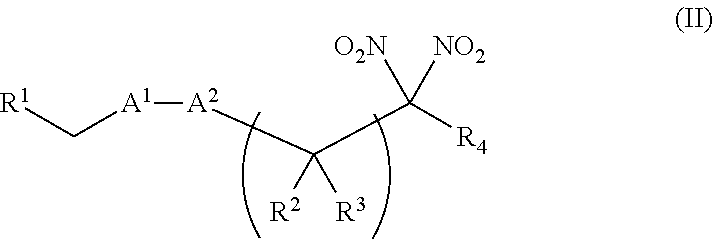







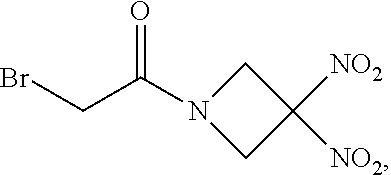
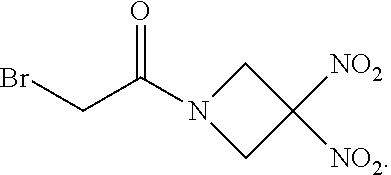
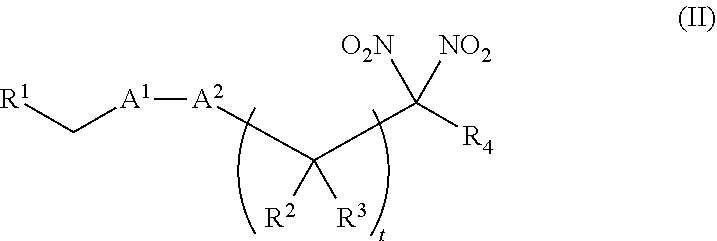
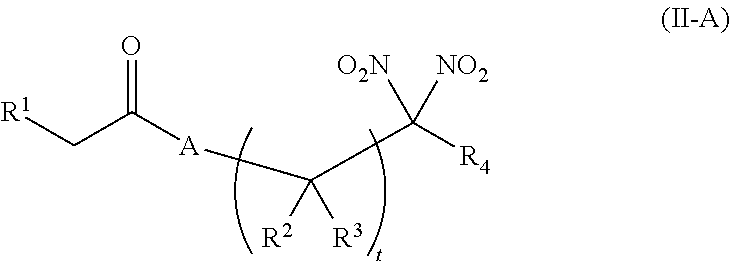
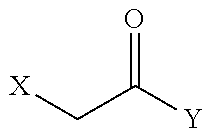
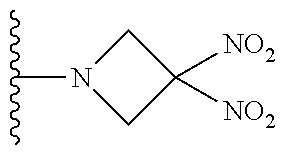
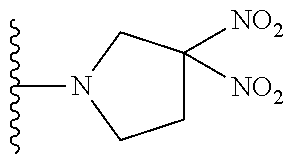
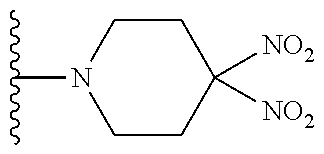
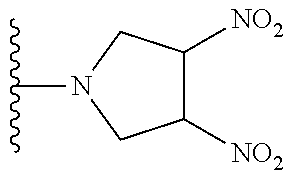

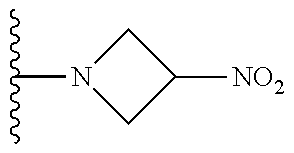
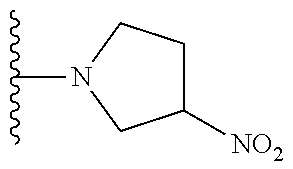


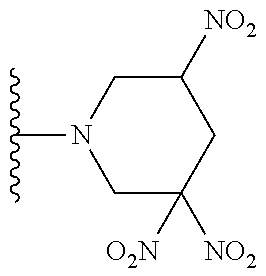
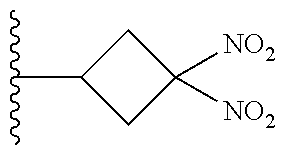

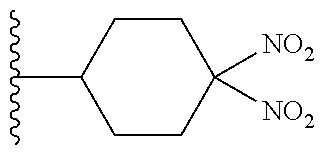
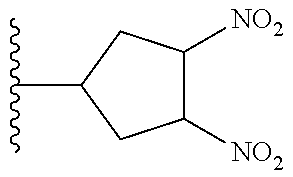
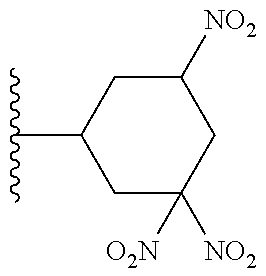
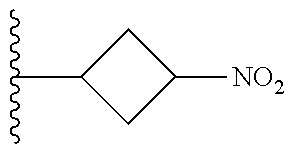
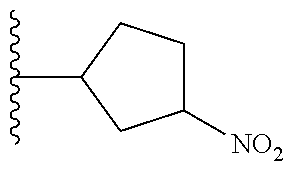
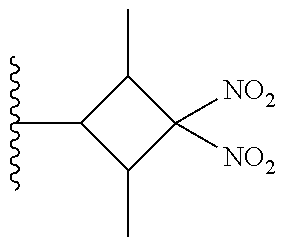

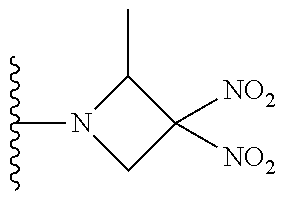
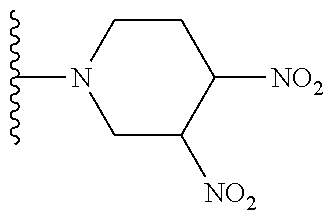

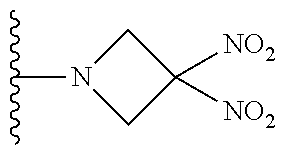
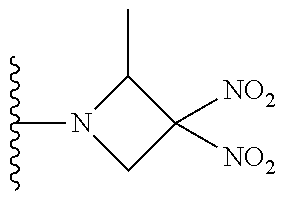
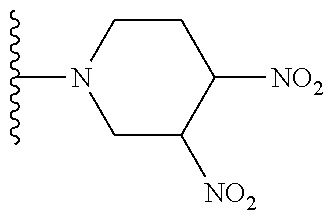
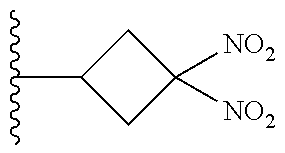

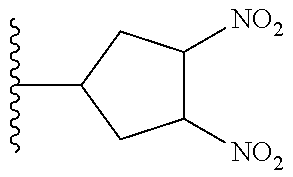
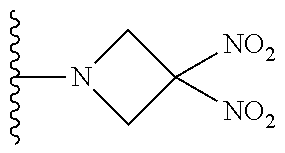


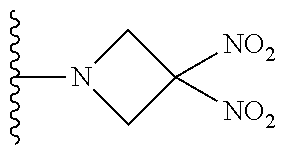


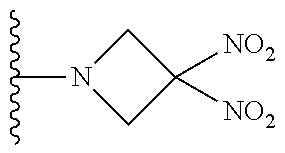

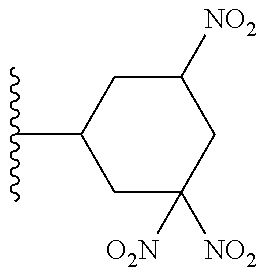
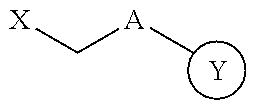

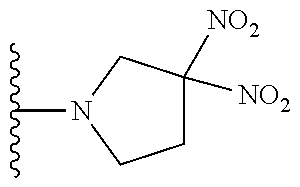
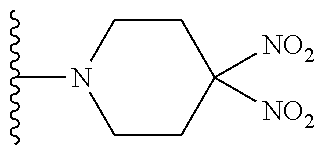
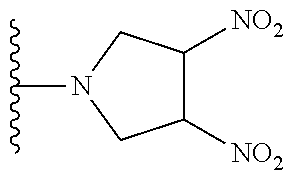

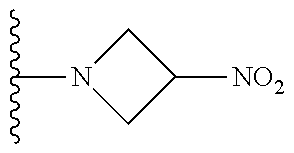


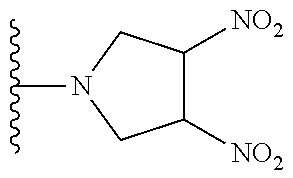

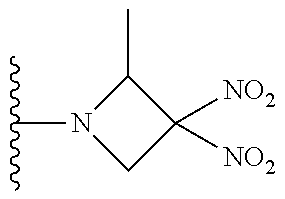

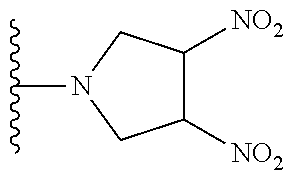
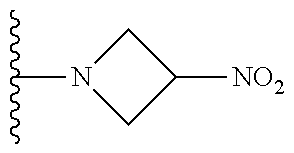
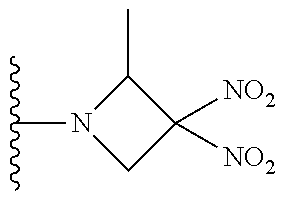
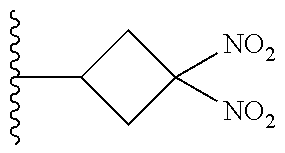
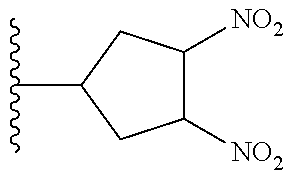



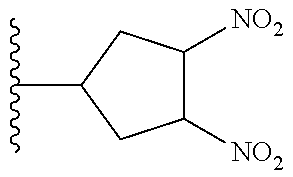


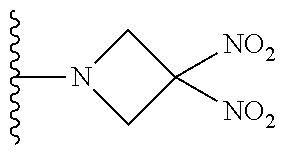
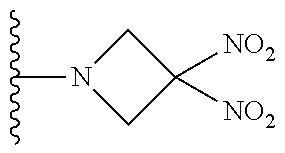



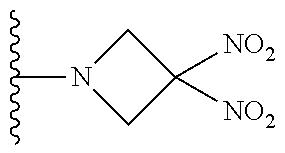
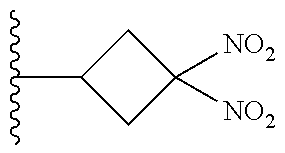
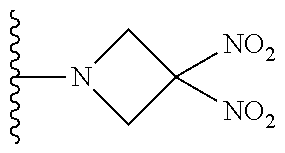
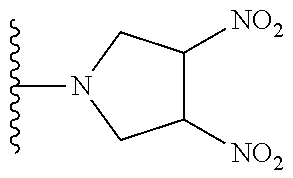

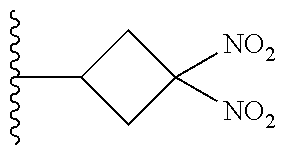
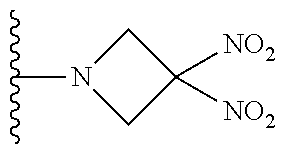


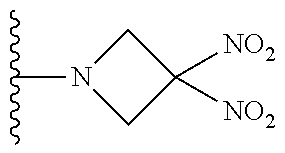

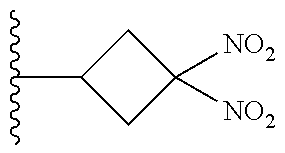



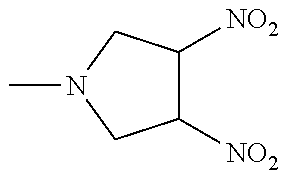
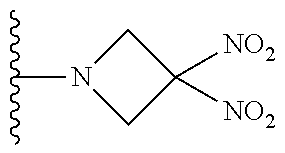

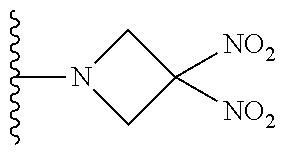
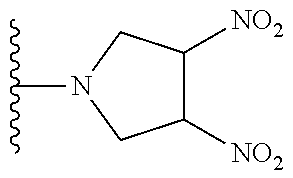



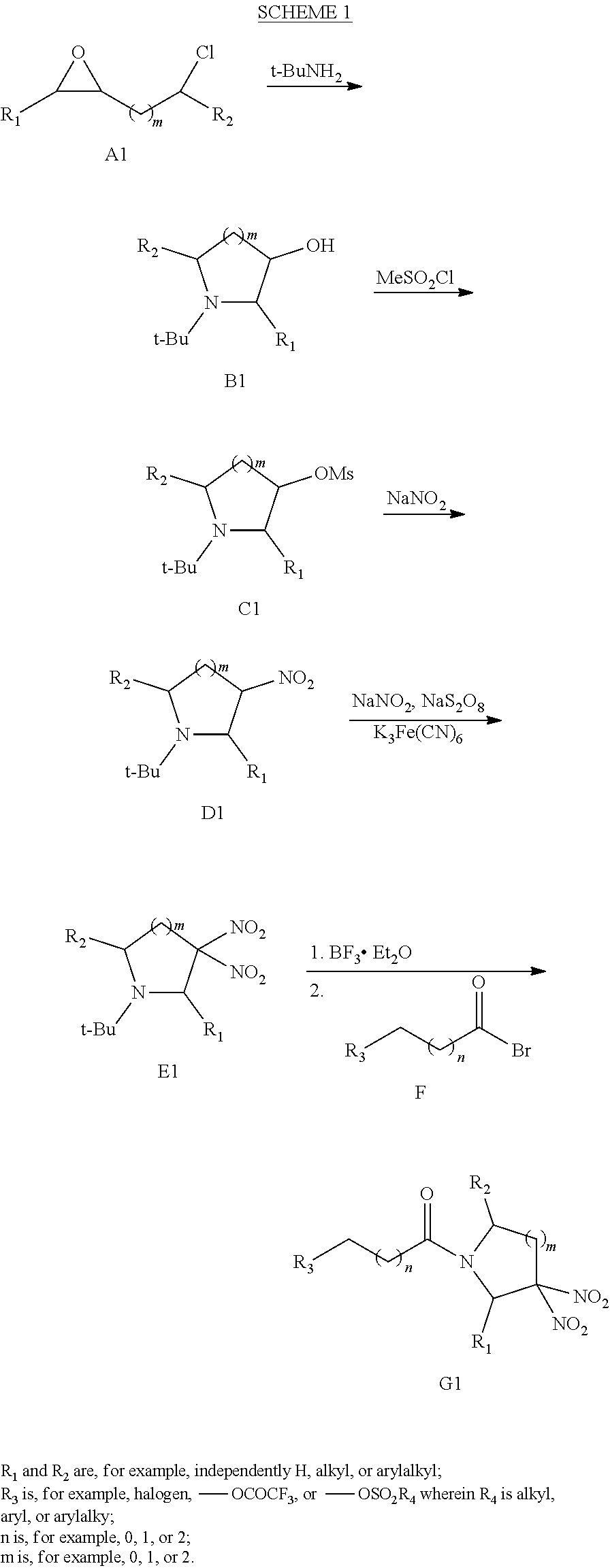
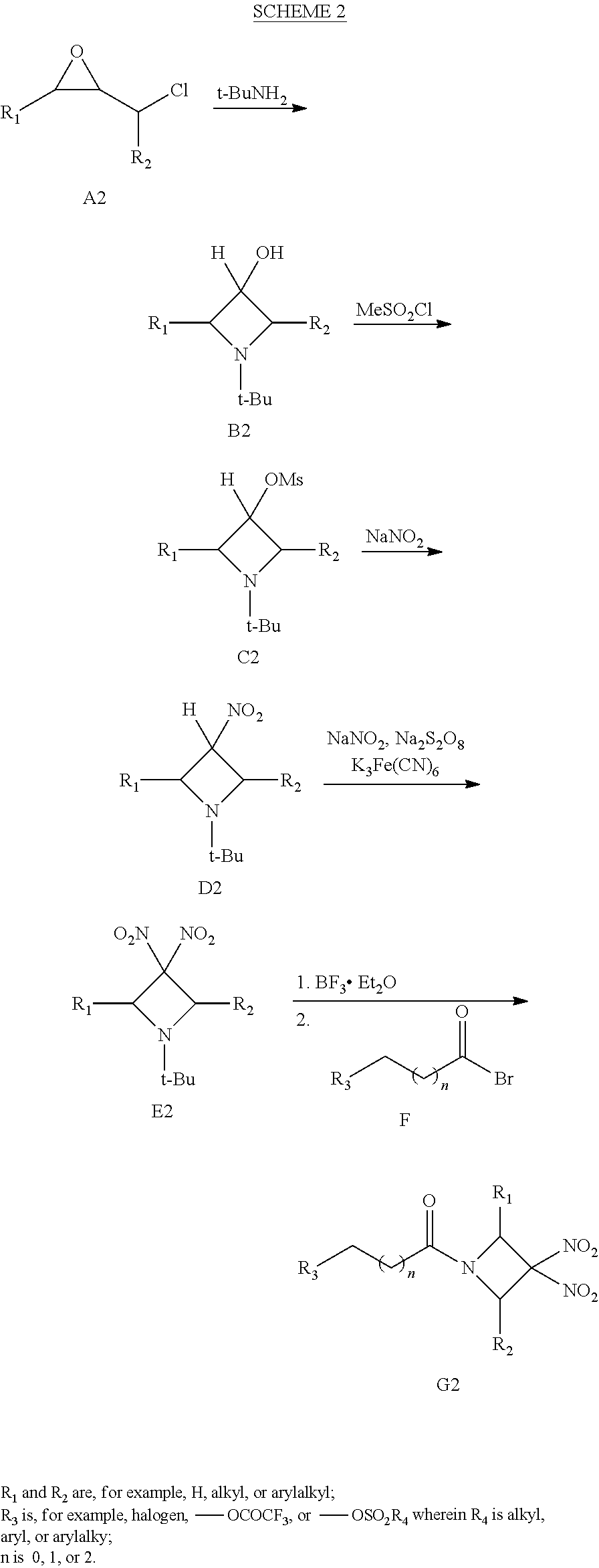
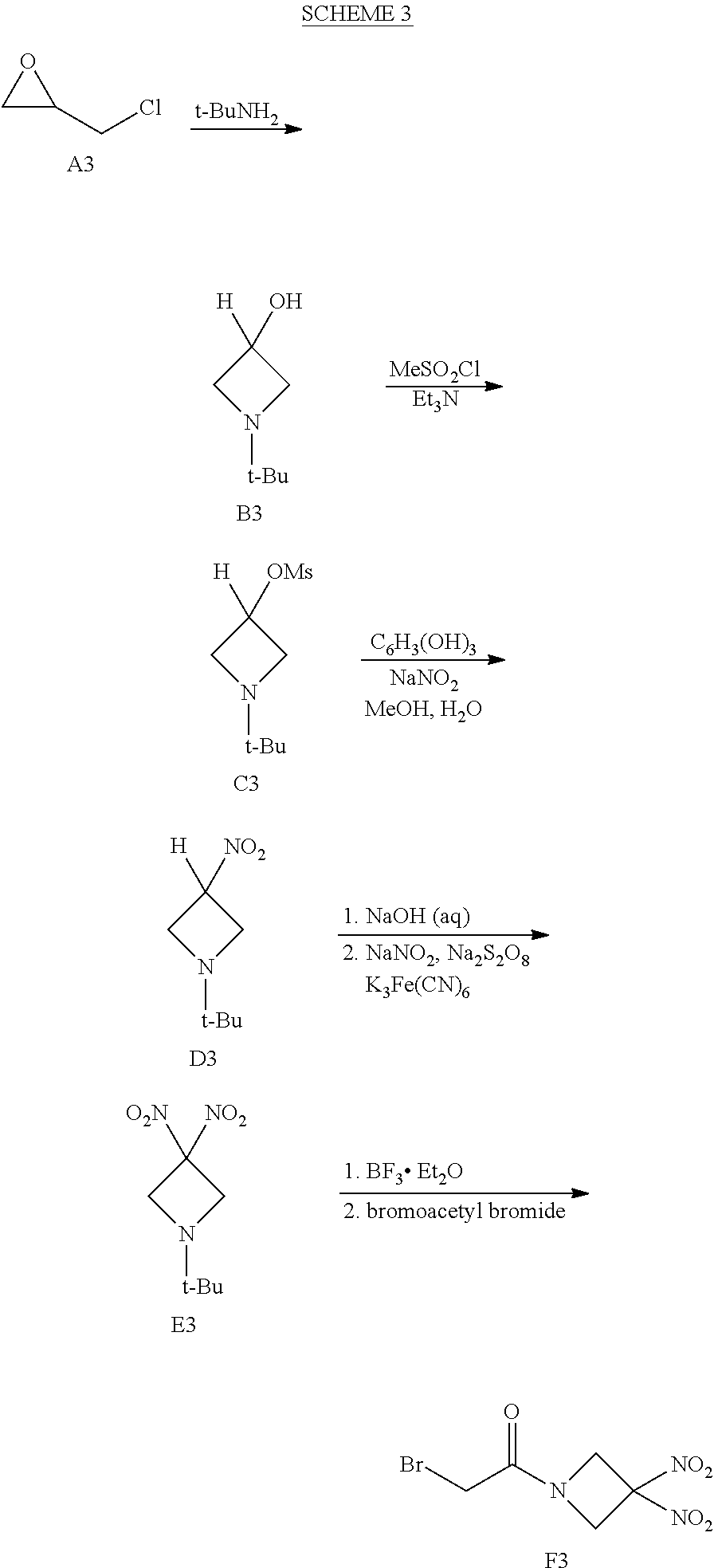

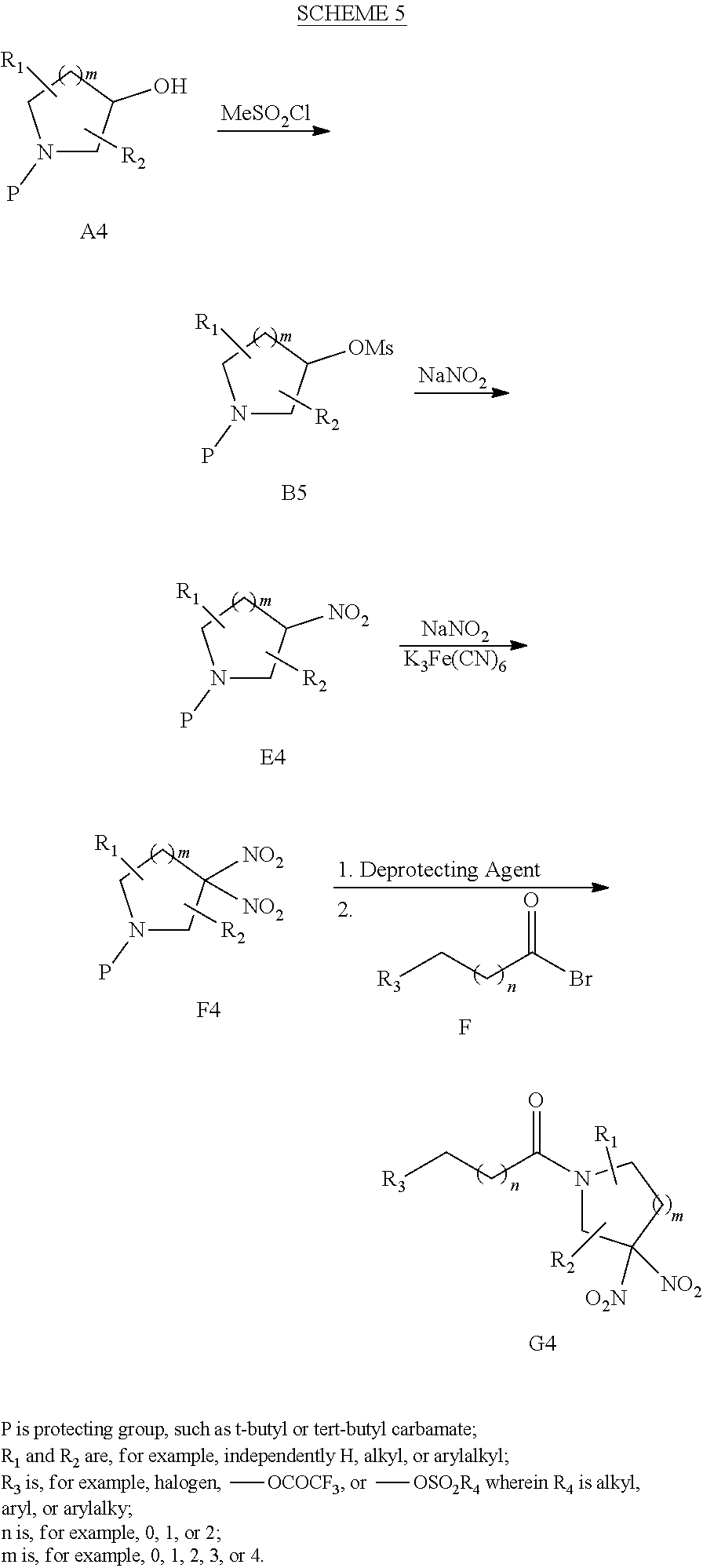
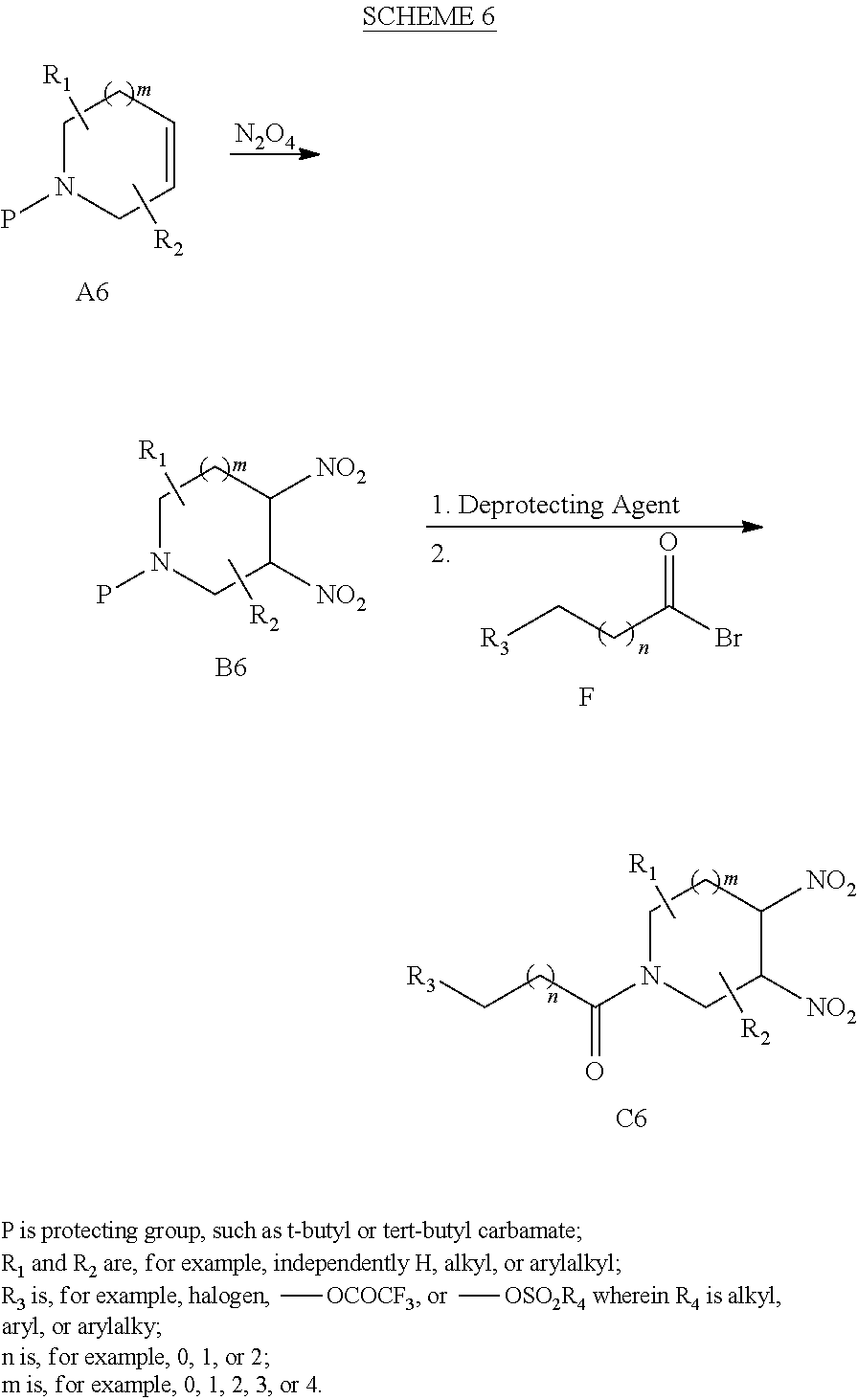

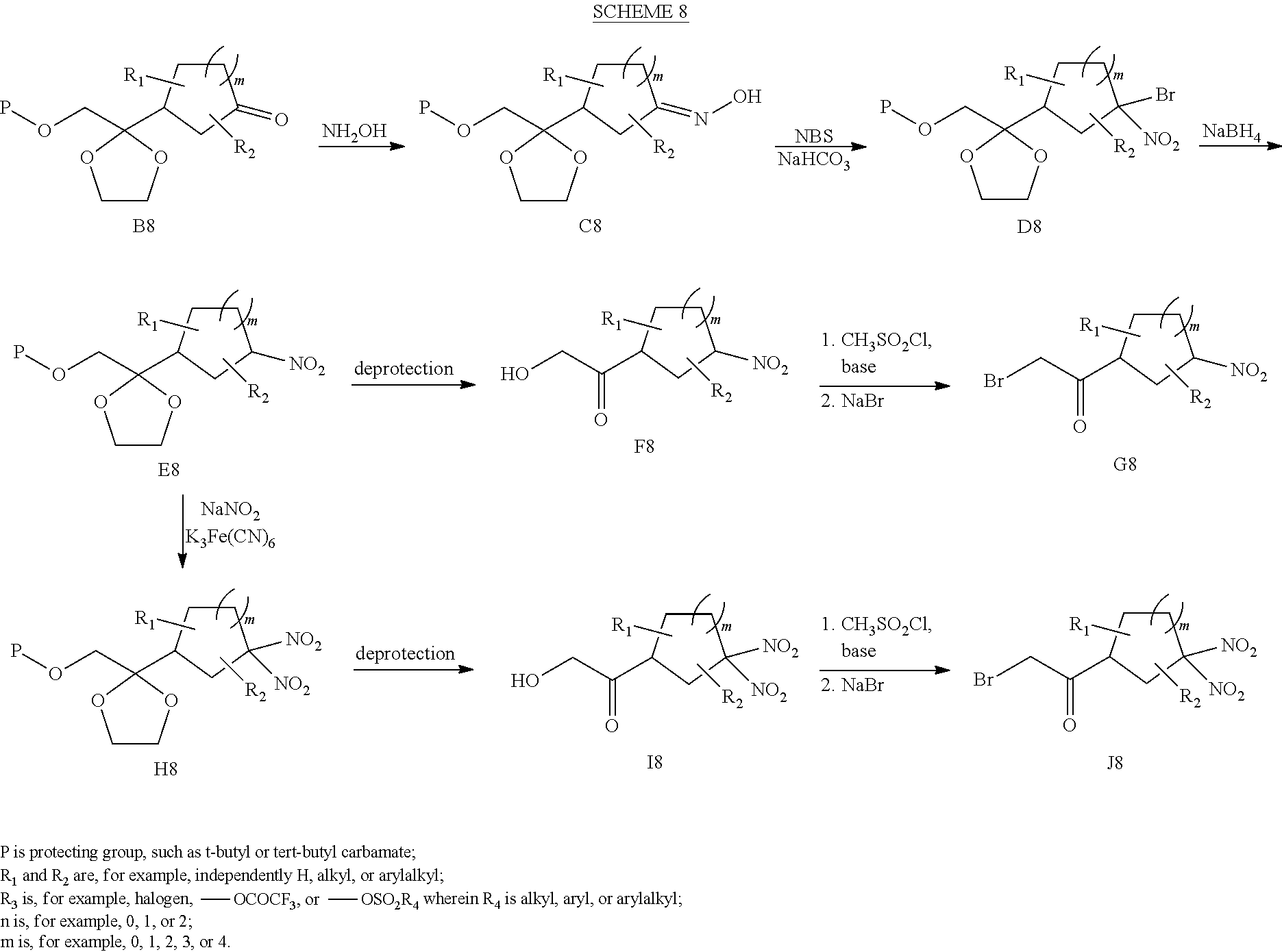
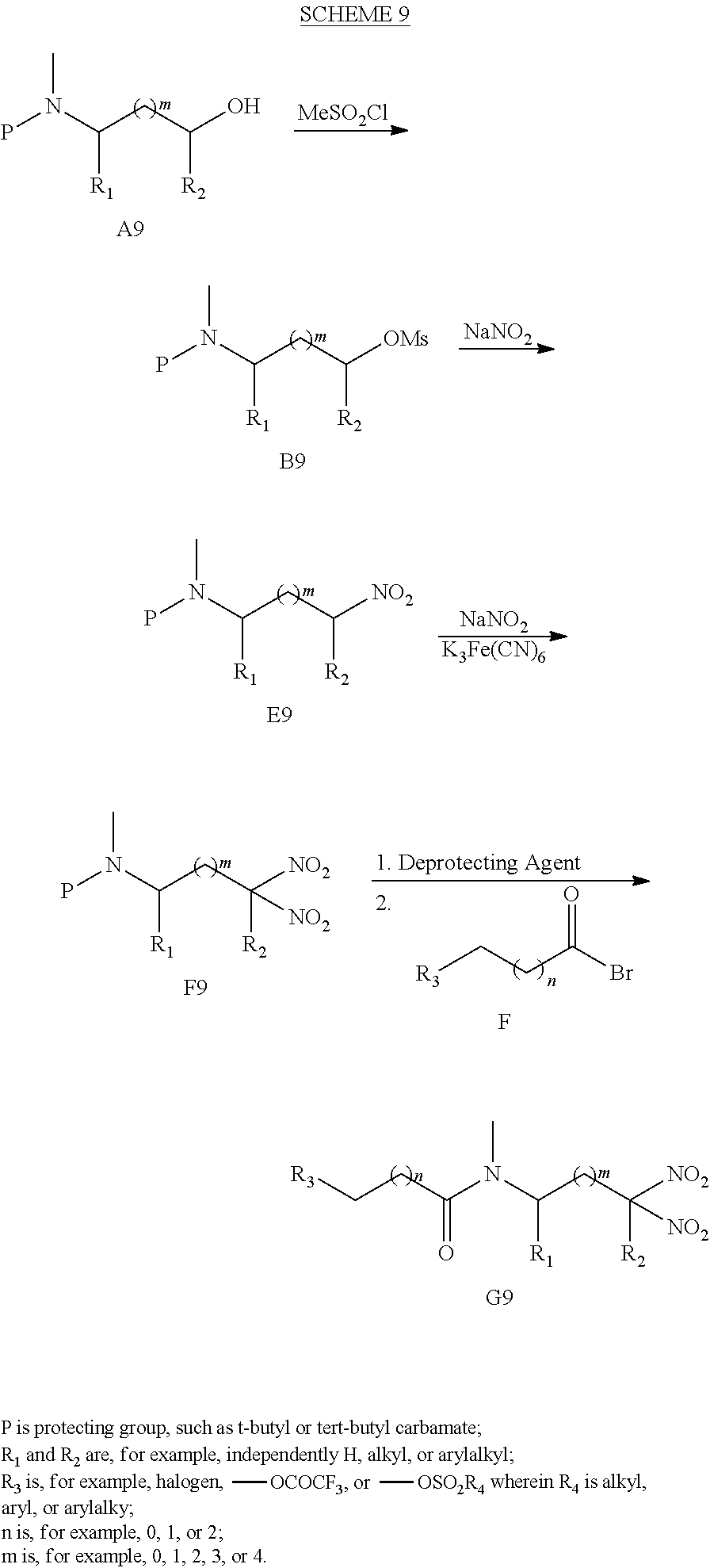

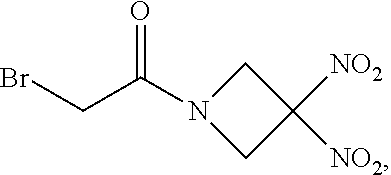
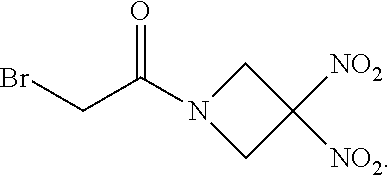





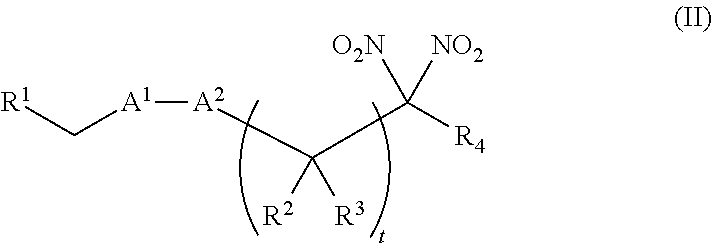


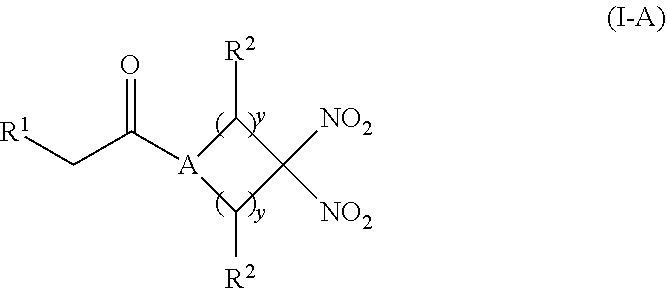
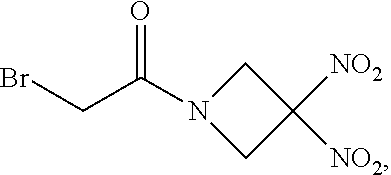

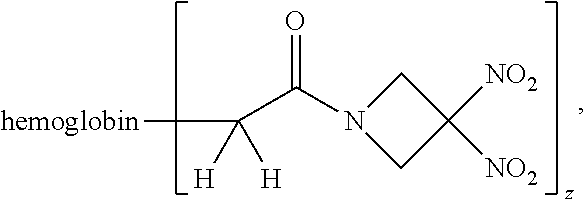

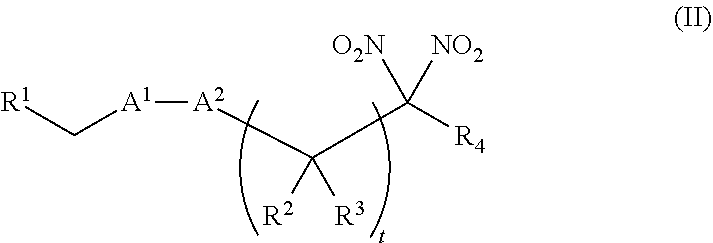


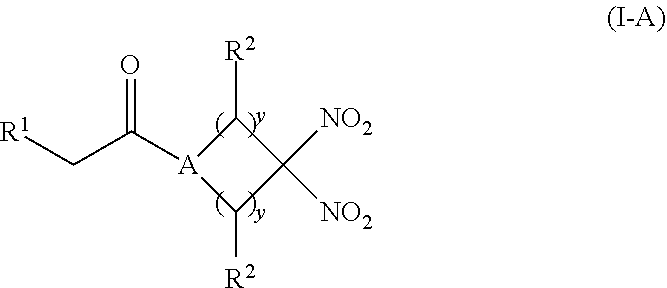
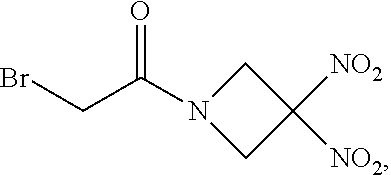
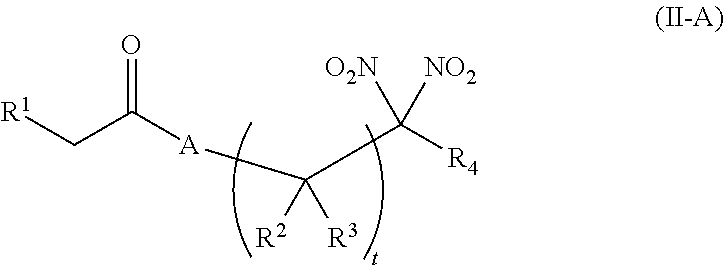
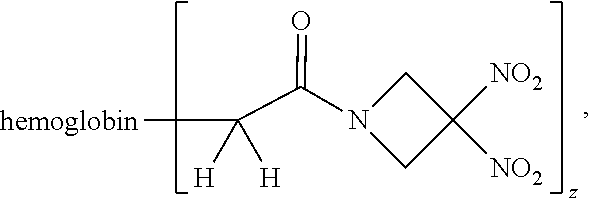




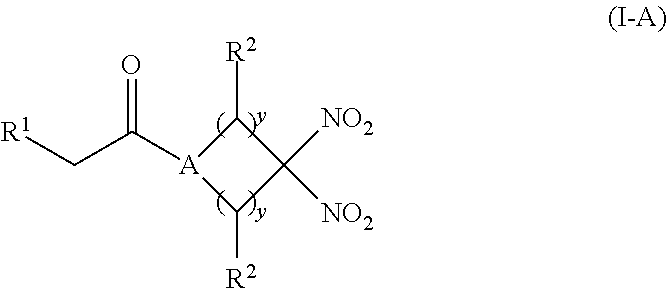
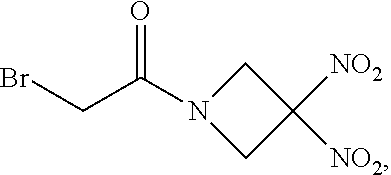

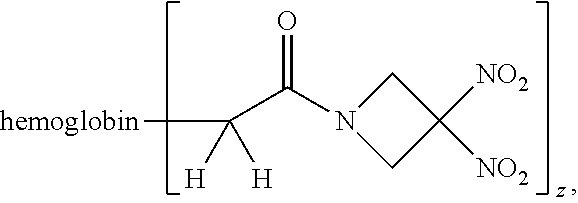




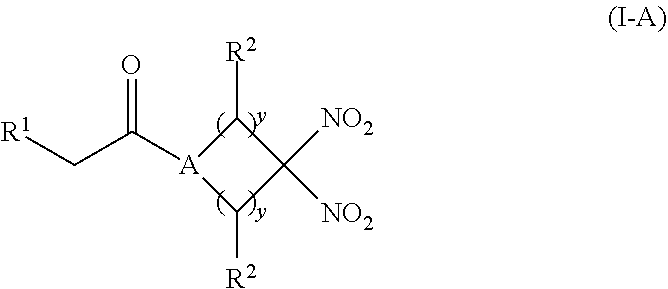


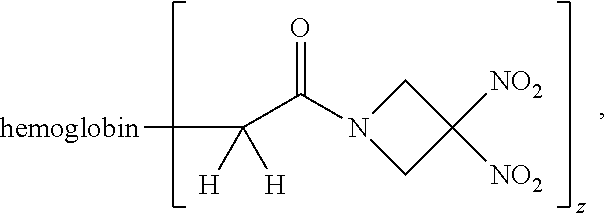

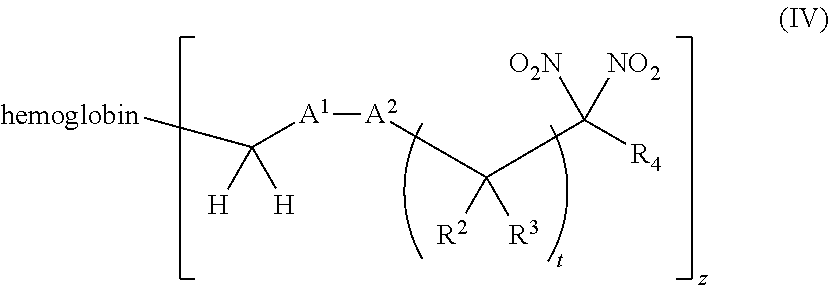
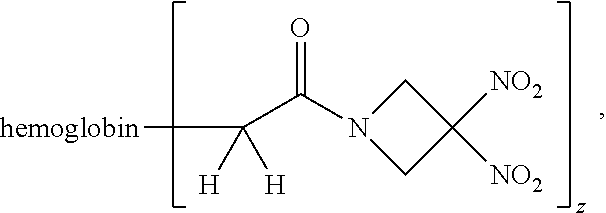




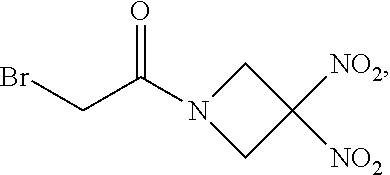
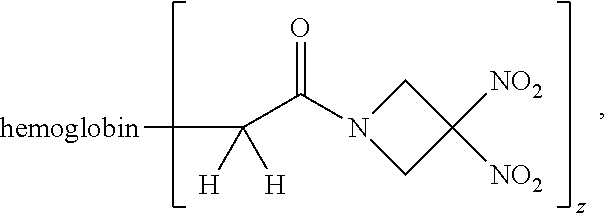

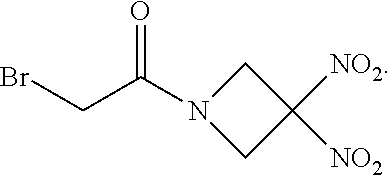
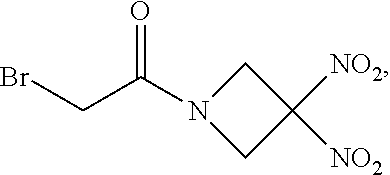


D00001
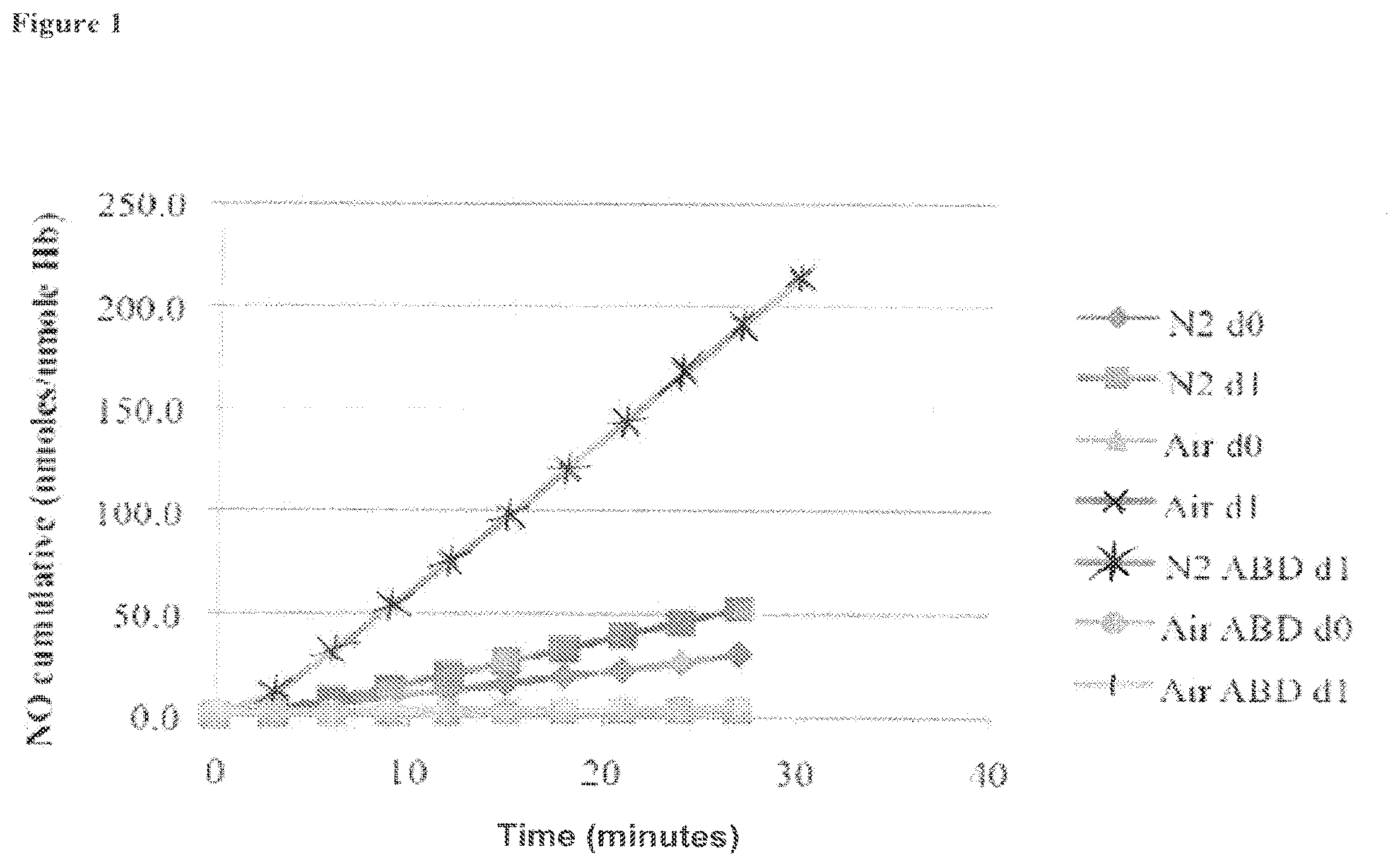
D00002
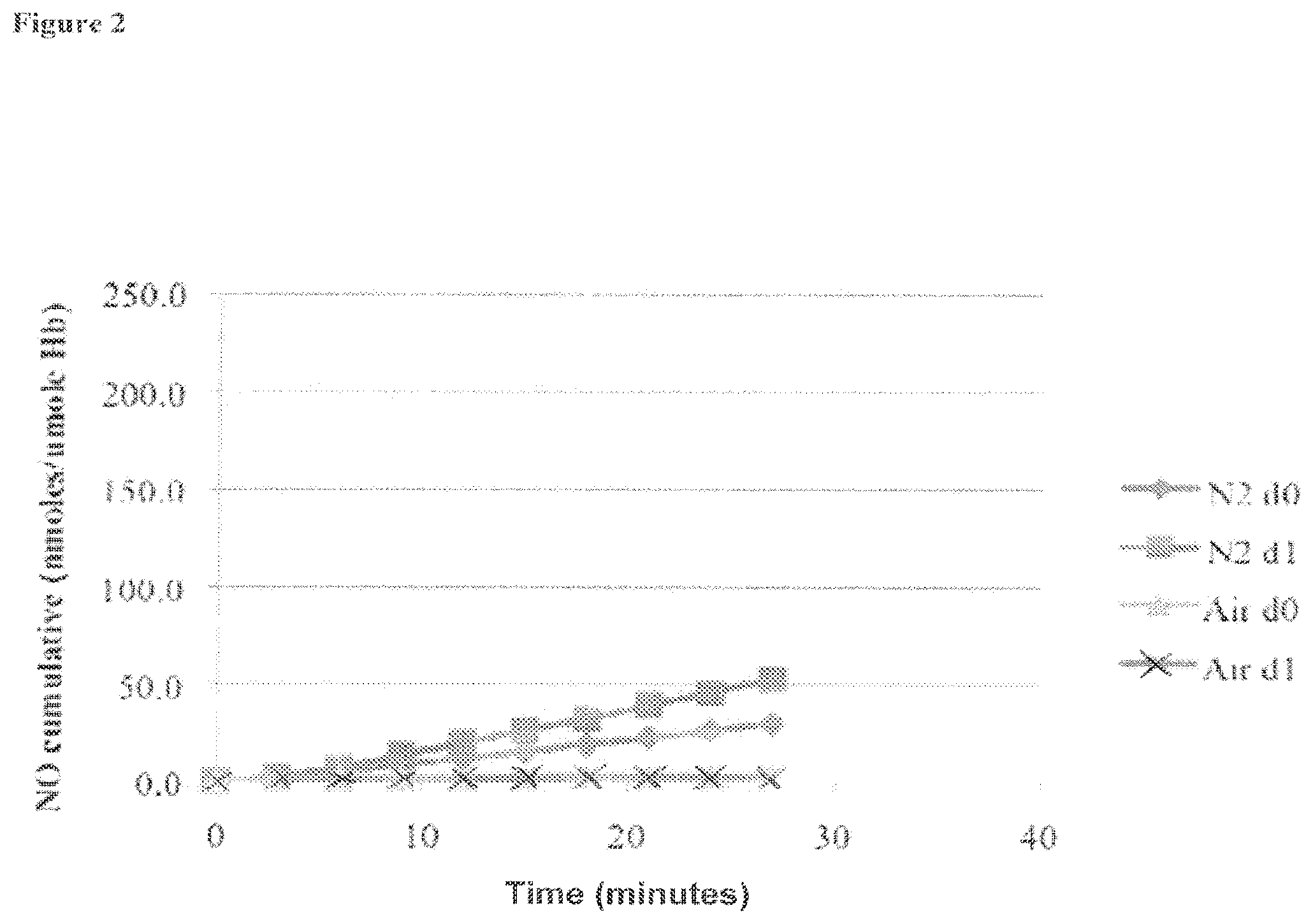
D00003
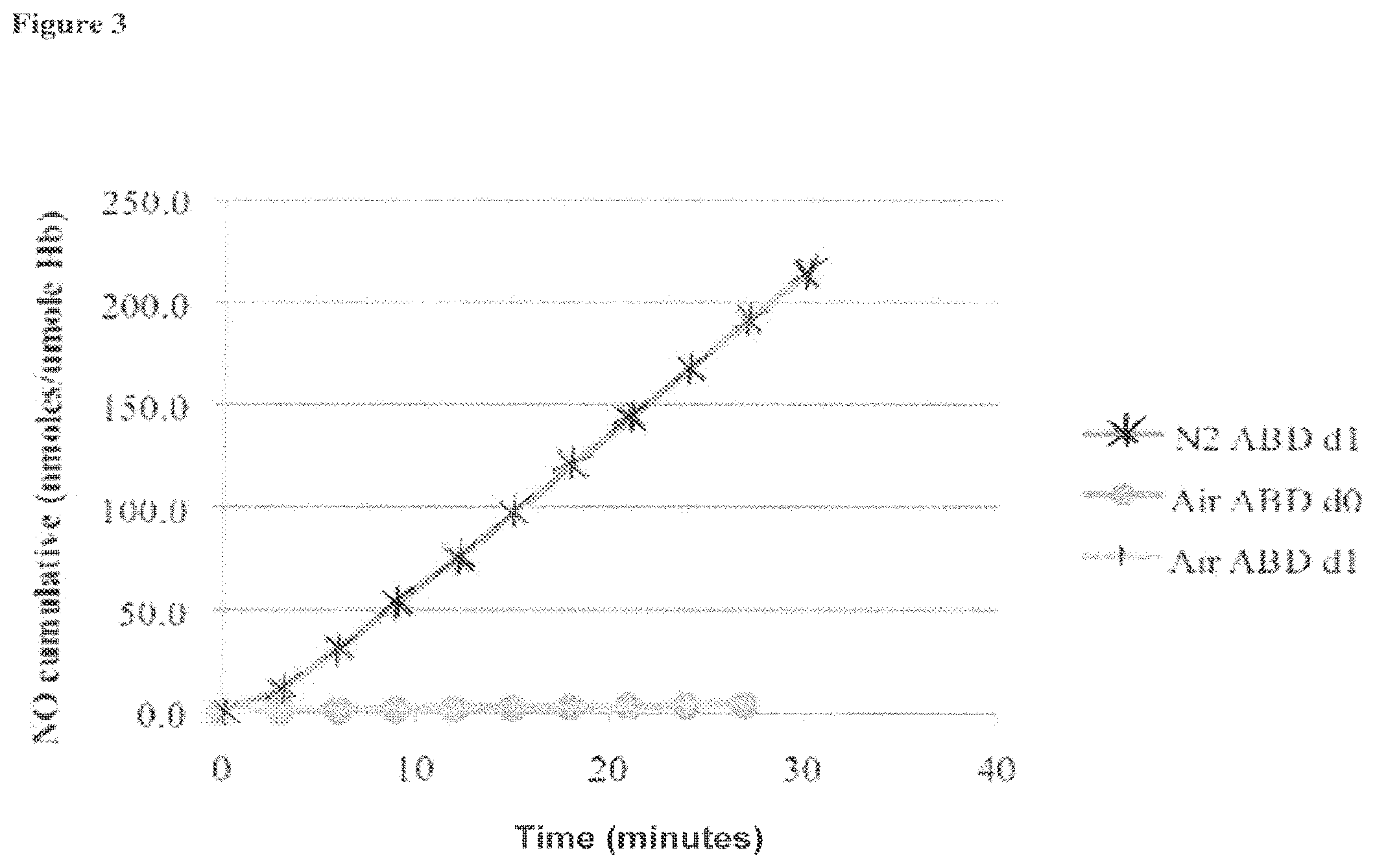
D00004
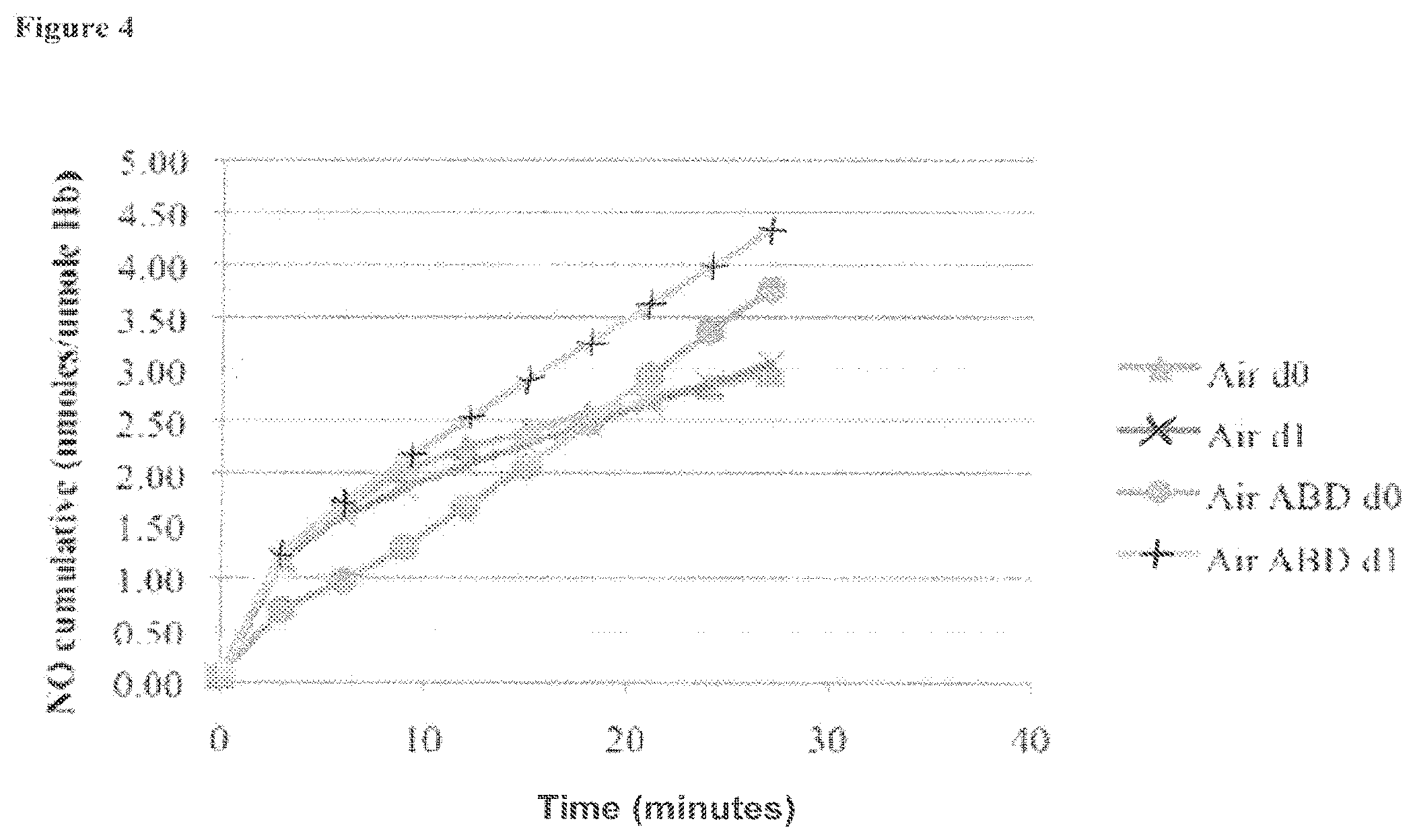
D00005

D00006
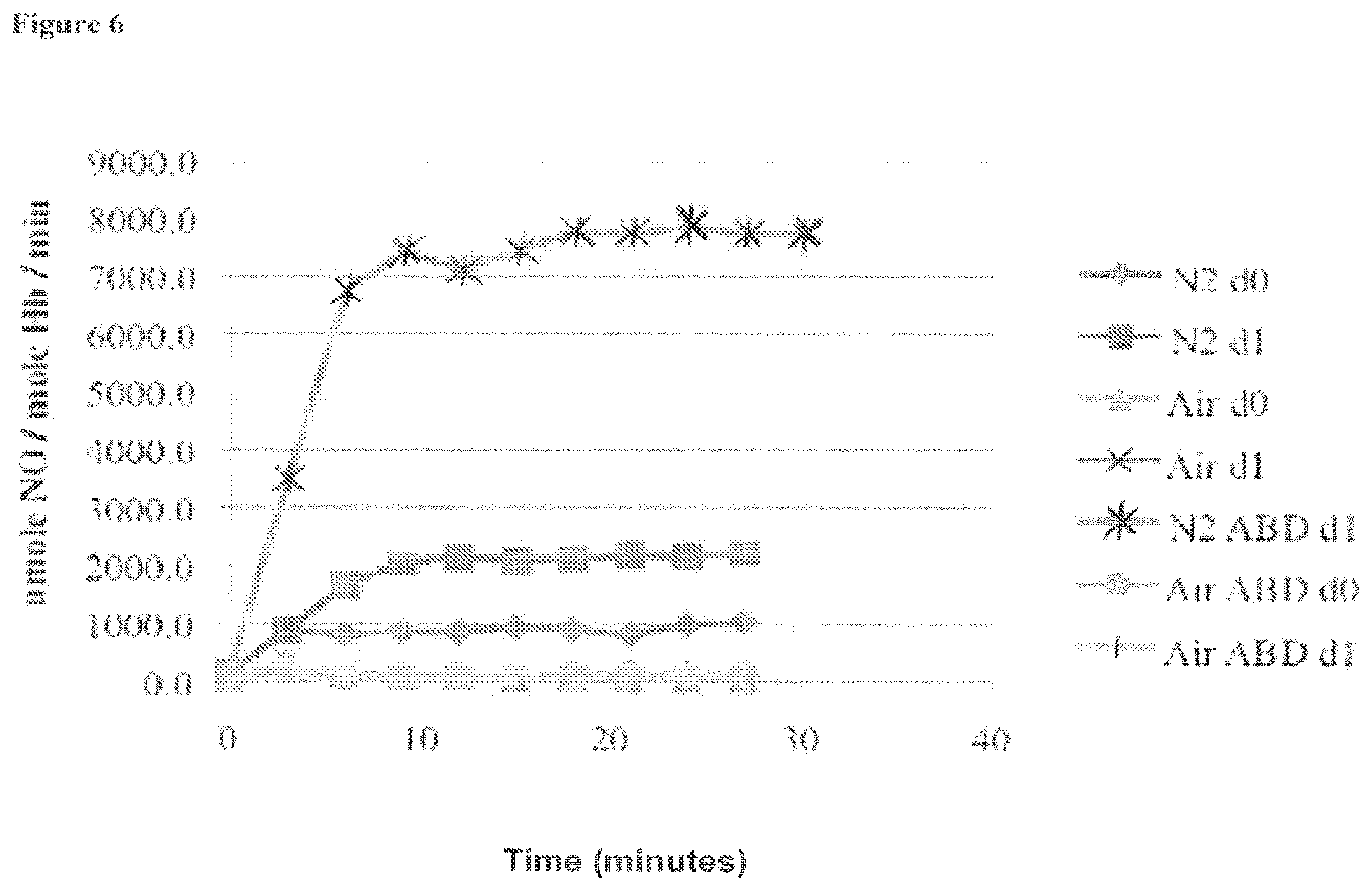
D00007

D00008

D00009
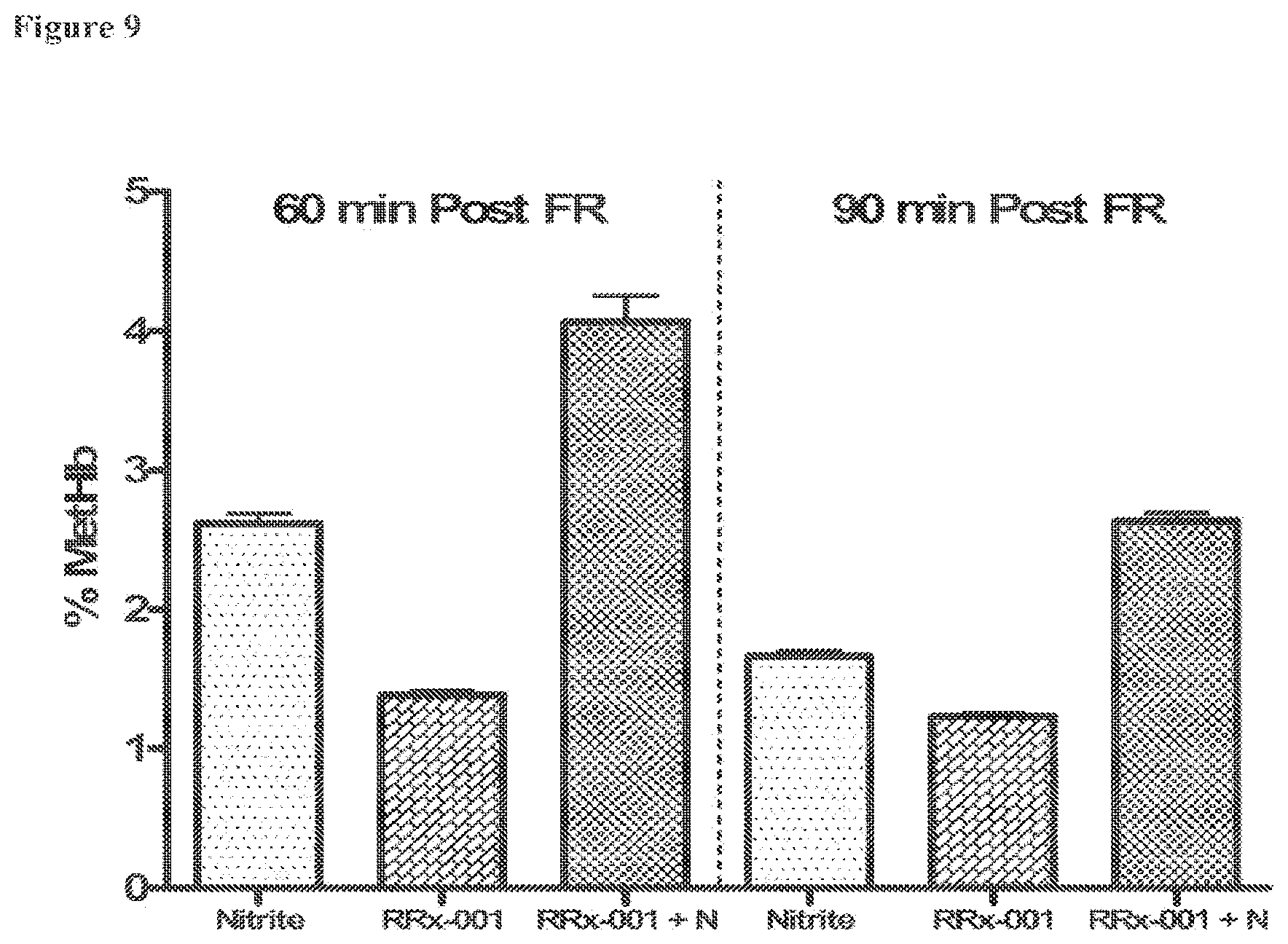
D00010

D00011
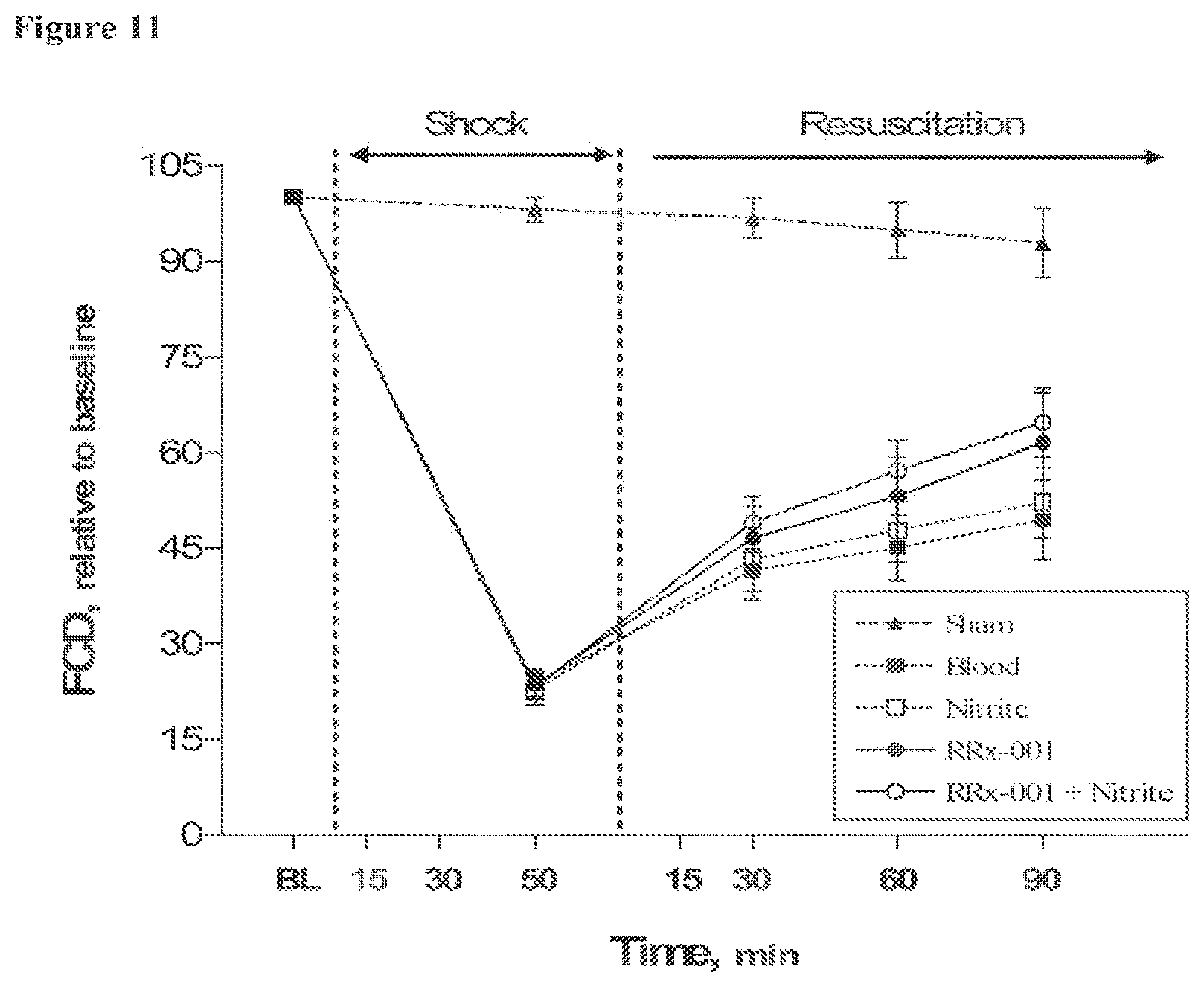
D00012
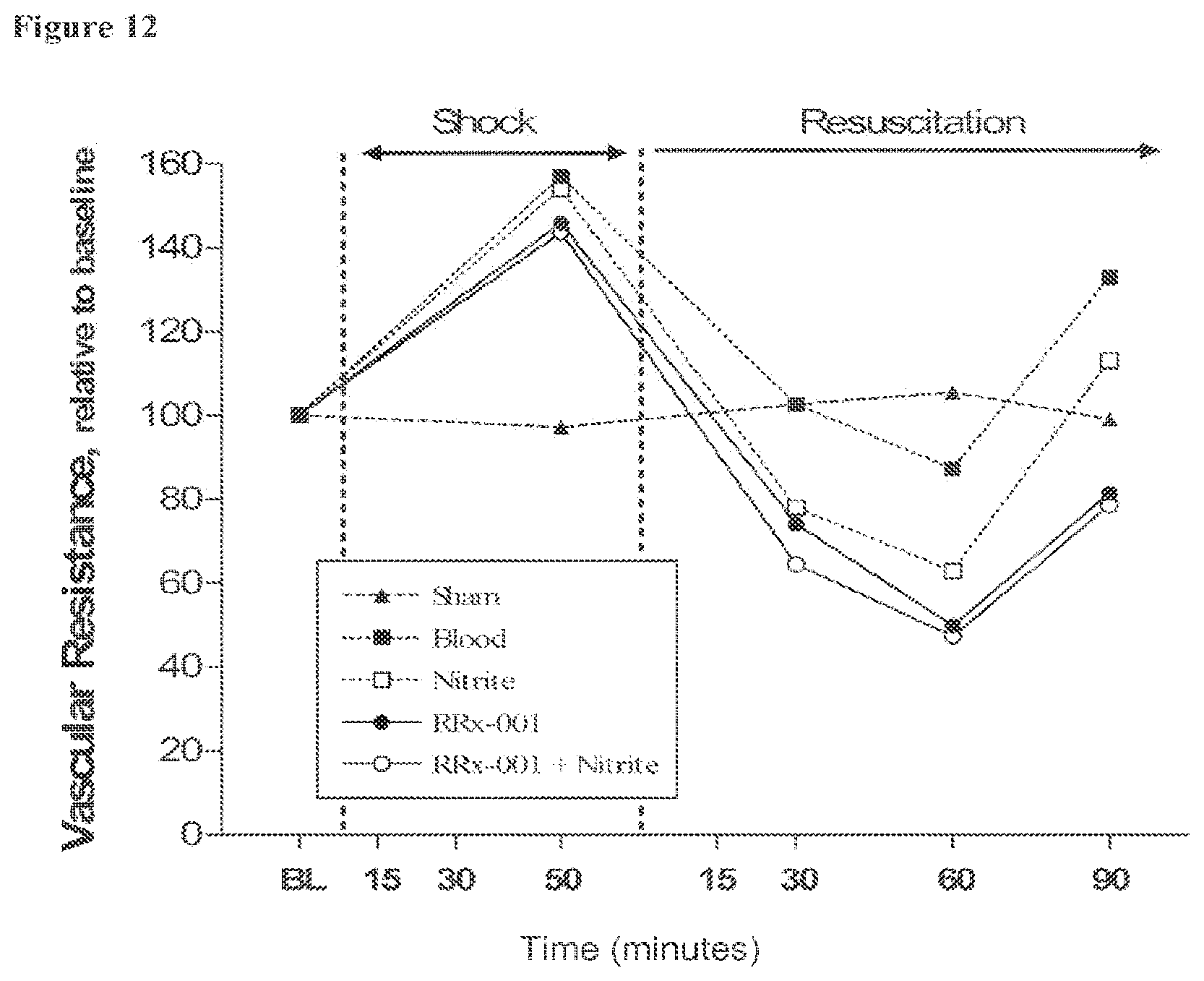
D00013
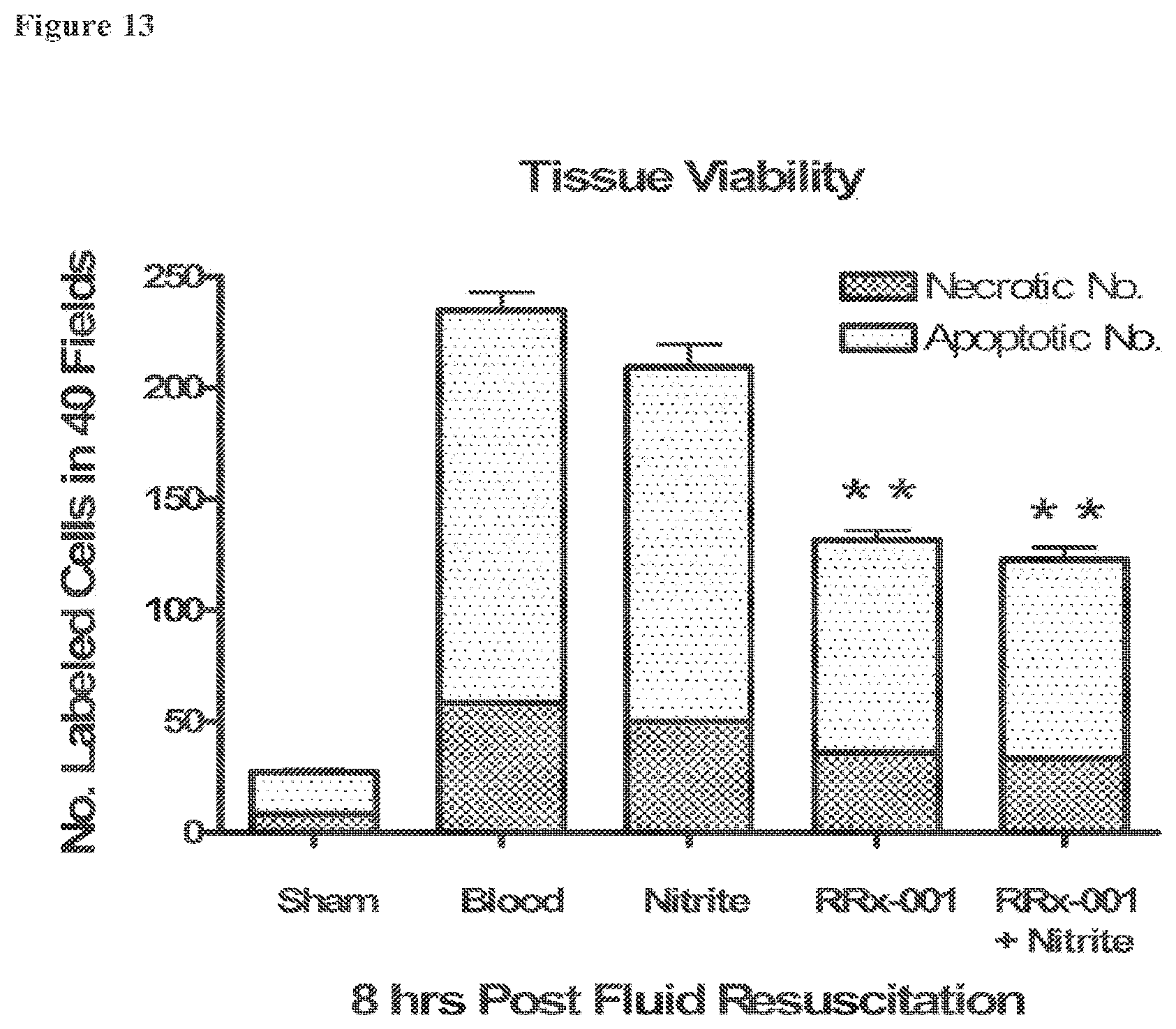
XML
uspto.report is an independent third-party trademark research tool that is not affiliated, endorsed, or sponsored by the United States Patent and Trademark Office (USPTO) or any other governmental organization. The information provided by uspto.report is based on publicly available data at the time of writing and is intended for informational purposes only.
While we strive to provide accurate and up-to-date information, we do not guarantee the accuracy, completeness, reliability, or suitability of the information displayed on this site. The use of this site is at your own risk. Any reliance you place on such information is therefore strictly at your own risk.
All official trademark data, including owner information, should be verified by visiting the official USPTO website at www.uspto.gov. This site is not intended to replace professional legal advice and should not be used as a substitute for consulting with a legal professional who is knowledgeable about trademark law.